

2 Weeks in Nepal: 3 Itineraries
DISCLAIMER: This post might have links to travel services and products that we enjoy. We might make a commission from it at no extra cost to you.
Nepal is one of the most popular destinations located in the Himalayas mountain range . A chance to get close enough to the ceiling of the world. The home of the highest mountain, unique animals, and the home birth of Buddha and Gurkha elite fighters.
Being a landlocked country, Nepal’s tourism is driven by trekkers of Everest Mountain . Today, almost 80% of foreign visitors to Nepal come for the mountain. However, if you only have 14 days, can you even go on a trek? Is there something else worth seeing here?
This 2 weeks in Nepal itinerary will answer exactly that. This guide includes travel itineraries for Nepal, covering both trekkers and non-trekkers. I also listed below everything you need to know before you plan and book your trip to Nepal.
CHECK OUT: 2 weeks in India itinerary
THINGS TO KNOW BEFORE VISITING NEPAL
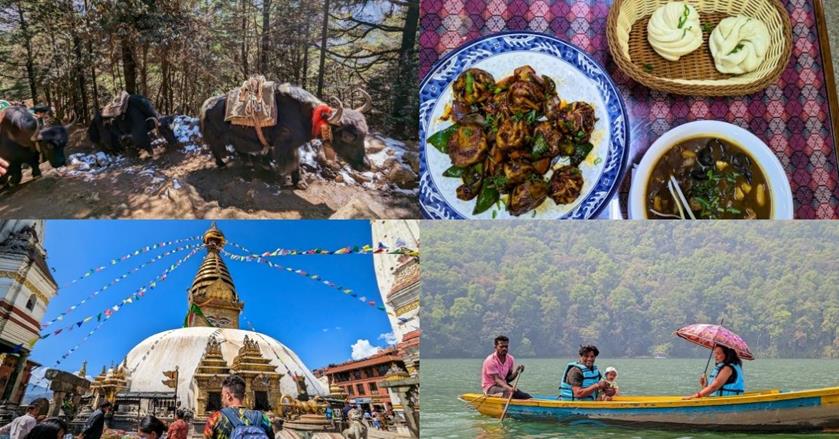
You don’t want to travel halfway across the world just to find out you’re visiting at the wrong time or planning a trip that’s too cramped. Below are answers to basic things you should remember about spending a vacation in Nepal.
When is the best time to go to Nepal
The best time to visit Nepal, particularly for the Everest Base Camp Trek, is during the pre-monsoon season (March to May) or post-monsoon season (late September to November). During these periods, the weather is usually clear, providing stunning views of the Himalayas, and temperatures are moderate, making it ideal for trekking.
It is advisable to avoid the monsoon season (June to early September) when heavy rainfall occurs. Additionally, Nepal doesn’t experience typhoons but the monsoon season brings heavy rain and potential landslides, which is not ideal for outdoor activities.
March to May is also the Everest Base Camp summit season , meaning the window time for people who want to climb Everest Mountain to come to Nepal. During this time, it’s very busy, and many teahouses in the Khumbu region are fully booked. Hence, planning is necessary.
If you plan to trek other trails, you should also know when the best season for that. For example, the summit season for the beautiful Ama Dablam is between October and November, but that’s not the right season to summit Everest Mountain.
Keep in mind that it is very cold in many areas of Nepal during the winter season. Not many hotels in Kathmandu or Pokhara have central heating.
Are 2 weeks enough for Nepal
Well, that depends on what you plan to do. For trekking at Everest Base Camp (EBC) or Annapurna Base Camp (AB), that’s definitely enough, but that’s all you can do. This means that If you plan to go to Chitwan or Pokhara after the EBC trek, that’s impossible.
But if you plan to trek ABC, which is only 7 days, you will have extra time to go to Chitwan and other parts of Nepal.
How to get around
Getting around Nepal can be tricky. Due to being a hilly country in general, flying always comes with a challenge, and it’s not the most affordable. On the other hand, taking the bus is long and very uncomfortable.
Nepal is a developing country, like literally. Many roads are under construction, making road travel super bumpy and taking longer. For example, our bus from Kathmandu to Pokhara was supposed to take 6-7 hours, but because the road was not finished, it took 10-12 hours.
Around the cities, you should install ridesharing and ride-hailing travel apps similar to Uber and Grab. The most popular transportation app in Nepal is Pathao, but you can also try Sahara.
You can pay in cash with these apps. However, it mostly works in Kathmandu only, although it won’t take too long until it’s available for Pokhara and other parts of the country.
Language and currency
Nepali (Nepalese) is the main language in Nepal. However, a large population of the country speaks English well. Around tourist areas such as Kathmandu and Pokhara, you wouldn’t have a hard time communicating with the locals.
The currency here is Nepalese Rupees (NPR). Most transactions are done in cash, but you can pay with your card at tour agencies, hotels, restaurants, and major stores. But it’s vital that you carry cash with you at all times.
There are many ATMs around the country, but most will only allow you to withdraw $70 to $100 (10,000 to 15,000 NPR). Go to the ATM of Nabil Bank, which allows you to withdraw up to 30,000 to 40,000 NPR ($230 to $300) per transaction. This will save you in ATM withdrawal fees.
Nepal has a very easy tourist visa. It’s one of the very few countries that allow almost all nationalities to enter and travel around Nepal for up to 90 days at a time. However, it’s not free unless you hold a passport from India.
The rest of the world must apply for an evisa before you arrive or get a visa on arrival. You can choose between 15, 30, and 90 days, which costs between $30 to $125. You can extend your visa for a minimum of 15 days for $45, and $3 for additional days after that.
I recommend you get the visa arranged in advance , meaning apply online versus getting it upon arrival.
This is because if you plan to get the visa on arrival, you will have to wait in a queue to use the “visa machine” where you fill in your information and usually, there are only 2-3 machines, which takes a long time.
If you already have one from the online application, you just proceed to the payment booth and be done. Make sure to bring:
- printed or digital copy of your evisa (printed might be better)
- cash in USD, GBP, or Euro (your change will be in NPR)
- no credit card payment
- a passport photo
What is the average cost for 2 weeks in Nepal
A great budget for 14 days in Nepal is around $1000 for a single person . Accommodation and food is cheap. Transportation could cost a bit more than its neighbouring country, but still good range.
If you plan to stay in hostels, you can save even further and bring the budget down to $800 for backpackers . For those planning to stay in high-end hotels, around $2,000 is a good idea for a luxury trip .
Keep in mind that this doesn’t cover your flights to and from Nepal, travel and medical insurance (which is required for treks 5,000 m and above). If you’re booking a trek, best to budget it at $100 per day just to be sure.
Other basic travel tips
Whenever you’re ready to plan your trip , below is a list of great sites to book your hotels, flights, and even insurance. I recommend that you book the hotels in advance. There are lots of accommodations, but the good ones get fully booked early and the mid-range hotels can be at a mediocre level.
PINNED MAP OF TOP THINGS TO SEE IN NEPAL
Click the icon on the top right to enlarge the map. Credit: map data: Google
2 WEEKS IN NEPAL ITINERARY
Nepal offers natural beauty and a rich culture. The country boasts eight of the world’s fourteen 8,000-meter peaks, including Mount Everest, making it a paradise for trekkers and mountaineers.
Temples, stupas, and ancient palaces abound, and festivals colour the streets year-round. The warmth and hospitality of the Nepali people add to the unforgettable experience. Below are the travel itineraries for Nepal, see which one suits you best.
When I decided to take a trip to Nepal, my main objective was to hike the famous Everest Base camp trek. That idea came to me before the pandemic, and I was not able to fulfil that goal until after the international borders had opened.
And once I got there, it was so much better than I imagined. The Nepalese people are super friendly and welcoming, the accommodation is affordable, and there are loads of things to do.
I started my trip in Kathmandu just like everyone else. In this list of itineraries for 2 weeks in Nepal, you can choose between including hiking or without hiking on your travel plan.
Itinerary #1: Trekking the EBC
This itinerary is suitable for those who plan to trek the famous Everest Base Camp. The actual trek actually takes only 11 days, but the 3 extra days are for preparing in Kathmandu at the beginning, a day for getting from Lukla (Khumbu region) back to Kathmandu, and an extra day to prepare for your departure from Kathmandu back home.
We have an in-depth guide for 14 days Everest Base Camp trek which will give you everything you need to know. This includes when to go, what to pack, doing a tour vs not, policies, what to expect, day-to-day expectations, how much to spend, and so much more.

Kathmandu before the trek
Spend a day in Kathmandu after you arrive to gather everything you need. Most people go to rental shops to rent sleeping bags and down jackets. Some people would buy hats, gloves, a duffle bag, and snow pants for the hike.
If you booked a tour, this is also the time you want to say hi to the tour company, get briefed on what time you’re leaving the next day for your flight to Lukla, and discuss what the trek will be like.
You’ll also meet your trekking guide , and if the tour company is generous enough, they will also give you a duffle bag for you to keep. You will meet your porters once you arrive in the Khumbu region (Lukla).
Porters prefer to carry a duffel bag over a hiking backpack. So, if your tour company is not providing one, it’s better to get a duffle bag. It will cost between $15 to $20. Spend this day to get cash as well. Plan around $30 a day if food and lodging are covered on the tour.
If not, it’s best to budget $100 which will cover your accommodation, food, drinks, and snacks. Not to mention payment for your independent tour guide and porter.
Leaving Lukla
Now that your trek is finished, your last day in the Khumbu region is about flying from Lukla and back to Kathmandu. Keep in mind that if you’re travelling during summit season, you might be flying to Manthali/Ramachep instead of Kathmandu due to busy air traffic.
If that’s the case, from Manthali, there’s another 6-hour drive from there to Kathmandu. If you’re on a booked tour, this will be arranged. If not, it’s very important that you arrange this beforehand because Manthali can be a rural area and arranging this last minute can be costly.
Kathmandu after the trek
Spend your last day in Nepal by returning your rented items and buying some souvenirs. This is also the time to arrange how you plan to get to the airport and get debriefed by the tour company.
If you have a few days extra, you should look into walking tours and/or day trips that you can book to maximise your time.
Itinerary #2: Trekking and More (Kathmandu, Chitwan, Pokhara, Annapurna)
This next 2 weeks in Nepal itinerary is perfect for people who want to do some trekking on the stunning Himalayas and also explore other parts of Nepal . For this trek, you will be conquering Anapurna Base Camp, also known as ABC.
Then, you will also get to spend time in Kathmandu, Chitwan National Park, and Pokhara. This itinerary is tight, but with good planning, it can definitely be done.
I also recommend you consider skipping Pokhara, you will be there to get to Annapurna, but expect that you might not have enough time to explore it.

Kathmandu for 2 days
Two days in Kathmandu is not a lot, but don’t worry, you’ll have an extra day at the end of this trip. For the first 2 days, plan to do a walking tour which will maximise your time here by visiting all the must-see spots in the capital city.
Chitwan for 2 days
After Kathmandu, it’s time to head to the famous Chitwan National Park where you can see wild animals such as elephants, Bengal tigers, and rhinoceros. Remember that you must go on a guided tour to Chitwan for your and the animal’s safety.
Avoid riding elephants in Chitwan. This is a common practice, but you have the power to not fuel this activity. Nepal’s neighbouring countries in Southeast Asia have started banning this tourist activity. There is more than one way to enjoy South Asian elephants without being cruel to them.
There are plenty of accommodations outside the national park and getting there from Kathmandu is not a problem. There are lots of buses that will take you, and the travel time is around 5-6 hours or even more if the roads are under construction, and the cost is $6 to $7 (600 to 800 NPR).
Pokhara for 3 days
Pokhara is a great place covered in trees, centred by a lake, and accented by the Himalayan mountains. The only downside here is the smog. During the spring season, the air and humidity in Pokhara can be unbearable. You can’t see the mountains and feel like the air quality is questionable.
This is because the city sits on a valley . Before the typhoon season, the wind blows towards Pokhara. But then due to its location, the wind and pollution from other parts of the country get trapped above Pokhara creating thick smog.
During my visit to Pokhara, the air wasn’t good and I couldn’t see the Annapurna mountain range (but it was hike-able), but I still had a great time. I booked walking tours, went to the lake to rent a row boat, and did whitewater rafting.
You can reach Pokhara from Chitwan via bus . The travel time is around 5-6 hours and the ticket is about 1,000 to 2,000 NPR ($10-$20).
Annapurna Trek for 7 days
Your adventure for Annapurna starts in Pokhara. If you’re going with a tour company, they will be briefing you a day before and arrange the time to pick you up the next day. The trek is for 7 days and there will be multiple ways to get to the Base Camp, which you and your tour guide will be discussing in advance.
Spend a day shopping for other things that you need for the hike such as a sleeping bag, snacks, a pair of gloves, and water tabs.
Depending on your arrangement with the tour company, they will either transport you back to Pokhara or Kathmandu at the end of the trek.
Itinerary #3: No Trek (Kathmandu, Chitwan, Gorkha, Pokhara)
You can surely travel and spend 2 weeks in Nepal without doing any treks . There is more than one way to explore this country and its beauty.
There are lots of people I met in Kathmandu and Pokhara who weren’t doing any hikes and planned their trip around learning about the culture, and people, and admiring the natural beauty.

Kathmandu for 4 days
Travel slowly through the capital city and make sure that you see and explore all the top attractions. Visiting Kathmandu is a melting pot of history and modernity, which means you can learn and experience both the old and new world.
There are lots of ancient ruins and temples that you can visit, but also see how far it has come to modernisation.
The city’s ancient temples and stupas, such as Swayambhunath and Boudhanath, offer spiritual experiences and insights into Buddhism and Hinduism. The lively streets of Thamel are perfect for shopping and savouring local cuisine.
I found this restaurant in the heart of Thamel called Spize (Karnali Organic Thali) , which offers traditional Tibetan dishes. I think I ate here so many times during my visit and can’t recommend it enough. My favourite dishes were momo, Mustang chicken, and the lassi.
Chitwan for 3 days
One thing I want you to avoid is riding an elephant. You’ll see that many posters for tourists going to Nepal are of people riding elephants.
Not only are you supporting an unethical and cruel treatment of elephants , but you are also wasting your time. You can still appreciate this anima’s beauty in so many ways when you visit Chitwan.
Visiting Chitwan National Park in Nepal offers an exhilarating escape into the wilderness. As a UNESCO World Heritage Site, it’s renowned for its biodiversity including the endangered one-horned rhinoceros and Bengal tigers.
There is a jungle safari via jeep where you can spot elephants, Bengali tigers, and monkeys.
Gorkha for 3 days
Visiting the Gorkha region in Nepal is an adventure that takes you to the historical roots of the Nepali kingdom. It is famously known as the birthplace of Prithvi Narayan Shah, who unified Nepal.
The iconic Gorkha Durbar is a fortress palace situated on a hilltop, offering panoramic views of the snow-capped Himalayas.
The region is also a gateway to the Manaslu Circuit Trek, but that takes 14 to 18 days. Gorkha is a destination that offers a blend of culture and adventure. Don’t forget to visit the Gorkha Museum as well to learn about Nepal and the Gorkha region.
Gorkha is directly north of Chitwan. There are buses, but they can be limited, so planning in advance is crucial. The driving time is around 3-4 hours and the ticket will cost 500 to 700 NPR ($5 to $7).
Pokhara for 4 days
Pokhara is known for many things including yoga retreats. But if you’re looking for a thrilling activity , don’t miss white water rafting, paragliding with a Himalayas backdrop, hot-air balloon riding, and ATV drives, to name a few.
Don’t miss out on boating around Phewa Lake, which is surrounded by the Annapurna range. It is a nice experience, and you can enjoy the lake and its serene atmosphere. There are plenty of boat rental places all around the lake, and they all have the same price since they’re regulated by the local government.
You can also visit the Peace Pagoda for panoramic views, or explore the mystical Gupteshwor Cave. Pokhara’s laid-back ambience is a perfect contrast to Kathmandu’s hustle.
THINGS TO SEE AND DO IN (per city)
There are so much to do all around Nepal including hiking, city exploration, yoga retreats, and wild animal safaris. There is honestly something for everyone – including cooking classes. I wish I could stay longer, but perhaps that more reason to come back.
Here is a list of things to do during your 2 weeks in Nepal and tours that you can book to make the trip more convinient:
- Explore Kathmandu – do the UNESCO World Heritage Sites tour or a full-day Kathmandu tour
- Kathmandu Durbar Square
- Narayanhiti Palace Museum
- Do a whole day massage and spa with lunch
- Garden of Dreams
- Pashupatinath Temple and Bodnath Stupa – guided tour
- Shankhadhar Park
- Go white water rafting – read the tour reviews
- Dharahara Tower
- Discover Nepalese cuisine by joining a cooking class in Thamel or sign up to a walking street food tour or a walking food tour at local eateries
- Boudha Stupa
- Pashupatinath Temple
- Sunrise hike to Nagarkot – see the tour details
- Swayambhunath Temple
- Day trip to Nagarkot and Bhaktapur – book your spot
- Bhaktapur Durbar Square
- Half-day tour to Chandragiri to ride the Cable Car – look at the tour price first
- Patan Durbar Square
- Go on a helicopter tour to Everest Base Camp from Kathmandu – either over the air only or including a landing at the base camp
- Amitabha Monastery Hike
- Kakani Hike (viewpoint at Kakani View Tower)
- Phulchowki Temple Hike
- Nagarkot Trail Hike – see the sunrise tour details
- Sundarijal Waterfall
- Shivpuri Nagarjun National Park
- Go paragliding – read the reviews
- Mahendra Cave
- Go Bungee jumping – see the tour price or fly over Sarangkot
- International Mountain Museum
- Davis Falls
- Zip lining – experience the world’s steepest zip-line
- Seti River Gorge
- Explore Nepalese cuisine – join a cooking class
- Pokhara Canyoning
- Visit Tibetan Settlements – either book a full-day or a half-day tour
- Muldhai Viewpoint
- Annapurna – do a day hike to the Australian camp or the Annapurna and Upper Mustang trail
- Poon Hill Sunrise Viewpoint – book a 5-day hike for Poon Hill and Ghandruk
- Dhampus View Tower
- Ghorepani Poonhill
- Panchase Hilltop Heliport
- Sarangkot View Tower
Everest Base Camp Trek
- EBC hike 14 days (with food)
- EBC hike 14 days (w/o food)
- EBC helicopter tour (with landing)
- EBC helicopter tour (no landing)
Annapurna Base Camp Trek
- Annapurna base hike 14 days
- Annapurna foothill hike 8 days
MUST-TRY NEPALI DISHES, DRINKS, AND SNACKS

Nepali cuisine is one of the best foods I’ve ever had in Asia. The best way for me to describe it is to compare South Asia with East Asia. You got the curries and also dumplings, it’s all rich in flavour, taste, and colour.
Make sure to try at least 3-4 foods. If you’re hiking, I’m sure you won’t be able to avoid Dal Bhat. Here’s a list of recommended dishes from Nepal:
- Dal Bhat – a staple Nepali meal consisting of lentil soup (dal), rice (bhat), and usually served with vegetable curries and pickles
- Momo – Tibetan-style dumplings filled with meat or vegetables, often served with a spicy dipping sauce
- Gundruk – fermented leafy greens, often served as a soup or a side dish
- Chatamari – a Newari dish, often referred to as Nepali pizza, made from rice flour with meat toppings
- Sekuwa – grilled meat skewers, usually marinated with spices and herbs
- Thukpa – a hearty noodle soup with meat and vegetables, influenced by Tibetan cuisine
- Panipuri /Golgappa/Puchka – a popular street food snack consists of a round, hollow deep-fried crisp bread, which is filled with a mixture of smashed tamarind chutney, chilli, chaat masala, potato, onion, chickpeas or white peas
- Sel Roti – a traditional, sweet, ring-shaped rice bread, common during festivals
- Juju Dhau – A famous creamy yoghurt from Bhaktapur, known as the “King of Yogurts”. It has a rich, creamy texture and a slightly sweet flavour
- Yomari – A Newari dessert made from rice flour dough shaped like a fig and filled with a mixture of molasses and sesame seeds
- Sikarni – a yoghurt-based dessert, mixed with dried fruits, sugar, and spices like cinnamon and cardamom
- Chiya (Nepali tea)
- Lassi – a yoghurt-based drink which can be either sweet or salty
- Tongba (Hot Millet Beer) – A traditional alcoholic beverage made by fermenting millet
- Sherpa Beer
ACCOMMODATIONS
To help you even more with planning your trip, here’s a list of my recommended places to stay in Nepal. There are options depending on your budget and arranged by city.
- Affordable: Flock Hostel or Shantipur Kathmandu
- Mid-range: Kumari Boutique Hotel or Hotel Jampa
- Luxury: Arushi Boutique Hotel or Hotel Blue Horizon
- Affordable: Chital Lodge or Kasara Resort or Hotel Tree Tops
- Mid-range: Shanta Ghar or Hotel National Park
- Luxury: Hotel Siraichuli or Tiger Tops Tharu Lodge
- Affordable to Mid-range: Universal Hotel & Lodge or Gorkha Garden Hotel
- Affordable: Hotel Cherry Garden or Pokhara Backpackers Hostel
- Mid-range: Bodhi Suites Boutique Hotel & Spa or Hotel Middle Path & Spa
- Luxury: Hotel Portland or Bar Preepal Resort
SUMMARY OF 2 WEEKS IN NEPAL ITINERARY
Spending 14 days in Nepal is an enriching experience that offers so much. From the lofty peaks of the Himalayas to the lush jungles of the Chitwan, the diversity in landscapes is awe-inspiring.
The warm smiles and the hospitality of the Nepali people stay with you long after you leave. Whether it’s the challenge of a trek, the tranquillity of a spiritual retreat, or the thrill of adventure sports, Nepal offers something for every traveller.
I hope that this list of itineraries for 2 weeks in Nepal has been helpful in planning your trip and visualising what to expect.
TO SAVE THIS ITINERARY, PIN THIS IMAGE BELOW:

Leave a comment Cancel reply
Save my name, email, and website in this browser for the next time I comment.

9 Unmissable Things To Do In Miami

The 12 Best UK Beaches To Visit In 2023

The Best Areas To Stay When Visiting Warsaw, Poland

The Ultimate 2 Week Queensland Roadtrip: 2023 Guide
- Yucatan Peninsula
- Winter in Europe
- Whitsundays
- Where you should stay
- where to stay in porto
- Where to stay in Bali
- where to stay cyprus
10 Days In Nepal: The Ultimate Itinerary
Editorial Note: Earth Curious contains affiliate links. If you make a purchase through these links, we will earn a commission at no extra cost to you. Thanks!
Nepal is widely regarded as one of the most scenic countries in the world. Its diverse geography includes mountains, forests, and eight of the world’s ten tallest peaks, including Mount Everest. If you want to explore as much of Nepal as possible in a limited time, we’ve put together a 10-day itinerary for you.
Table of Contents
Day 1: kathmandu, day 2: kathmandu, day 3: patan, day 4: bhaktapur, day 5: pokhara, day 6: pokhara, days 7 – 10: ghorepani poon hill trek, useful tips for traveling in nepal:, final thoughts:.
It’s impossible to see everything in Nepal in just a week and a half. You could easily spend more days than that simply trekking through the Himalayas. We’ve put together an itinerary that takes you to Nepal’s busy cities, its historic ancient cities, and a few of its geographical wonders.
Nepal is a bucket list country for many adventurous travelers. Here’s how to explore Nepal’s heritage sites, enjoy outdoor adventures, and soak up the unique culture in 10 days.
Nepal’s capital city, Kathmandu, is best known for its beautiful temples and as a gateway to the Himalayas. While the 2015 earthquake destroyed some of the city’s temples, many were left intact. The city has been continuously inhabited since the 2nd century, and as a result, Kathmandu has an abundance of cultural and historical sites. You’ll start your first day in Kathmandu by visiting Thamel.
What to do and see in Kathmandu?
Thamel is the most popular area for tourists to visit for a good reason–the area is filled with stores, restaurants, cafes, and bars all catering to tourists. This area can be relatively intense because tourism is one of Nepal’s largest industries.
Thamel is full of shops and street vendors. While the prices are a little higher here because it’s a tourist area, you can still find nice souvenirs. The area is also home to a large number of bookstores. When you’re ready to get out of the crowds for a while, visit the Garden of Dreams and enjoy the beautiful fountains and relaxing open spaces.
After visiting Thamel, make the short walk to Kathmandu Durbar Square. This UNESCO World Heritage Site is one of the city’s most visited landmarks. Some of the temples on this historic square date all the way back to the 3rd century. You’ll find the Hanuman Dhoka Palace Complex which are the Old Royal Palaces now turned into museums. While many temples and structures were destroyed in the 2015 earthquake, there are still plenty either left intact or reconstructed.
Where to eat in Kathmandu?
In Thamel, you’ll find every kind of food you might be craving. For the best Nepali momo, head to Thamel Momo Hut. If you want inexpensive, but filling Japanese food, try out Momotarou. If you’d rather have Mediterranean food, go to OR2K. It’s incredibly popular and has the best falafels and hummus.
Where to stay in Kathmandu?
- $$$ – The Dwarika’s Hotel
- $$ – Kathmandu Marriott Hotel
- $ – Hotel Jampa
Before exploring other destinations in Nepal, you’ll spend one more full day in Kathmandu. After the hustle and bustle of your first day in the city, you’ll take things a little bit slower.
An interesting way to experience more of the local culture in Kathmandu is with a cooking class. When you sign up for a class, you’ll start off by walking to the market to get your ingredients and then spend the rest of the time learning how to make a few authentic dishes. You may or may not be able to recreate the dishes on your own at home, but it’s a memorable experience.
For the afternoon, book a session at one of the many spas in Kathmandu. Whether you’re in need of a foot massage or a deep tissue massage after your flight to Nepal, you’ll be able to relax and unwind for a few hours.
Just before sunset, head to Swayambhunath (Monkey Temple). This sacred Buddhist complex is a UNESCO World Heritage Site. Climb up the 300 stairs to get a beautiful view of the valley. You’ll also get to see the monkeys that live and wander around the temple. Avoid bringing food with you as the monkeys will try to run off with it if they can.
For dinner, you have plenty of great options to enjoy in the city. Try out the Third Eye Restaurant for Indian and Nepalese cuisine. If you would rather have Italian cuisine, head to Little Italy to enjoy your meal in a romantic sett. For a unique dining experience, try out the Old House Restaurant where you can try delicious French and Asian fusion dishes.
Travel time: 30 minutes by bus
Known locally as Lalitpur, Patan is one of Nepal’s historic cities. The name Lalitpur means “city of beauty” and is fitting. Patan is located just across the Bagmati River from Kathmandu. Today, you’ll take a day trip to this city that was once an independent city-state. You can get to Patan by bus, but you can also walk there in about an hour if you would prefer.
What to do and see in Patan?
Patan is best known for its beautiful architecture and fine metalwork. As you visit the city, you’ll see extravagant temples and opulent palaces. Some parts of the city were damaged during the 2015 earthquake, but the damage was not as widespread as in Kathmandu.
Patan’s Durbar Square is the historical center of the city and the best place to begin your visit to the city. Here you’ll find the Ancient Royal Palace dating back to the 1600s as well as Mul Chowk which was home to the royal family until 1769. You’ll also see the famous statue of King Yoganarendra in the Hari Shankar Mandir.
Besides all the landmarks to see in Durbar Square, you can also explore other areas of Patan. Here are a few sites you shouldn’t miss.
- The Golden Temple
- Kumbheshwar Temple
- House of the Kumari
- Mahaboudha Temple
- Jawalakhel Handicraft Centre
Where to eat in Patan?
For elevated traditional Nepali cuisine, try out Raithaane. The restaurant looks deceptively normal, but the food is some of the best you’ll find in Nepal. Another good place to try local cuisine is The Village Cafe which sources local, fresh ingredients. If you’re just looking for coffee and a pastry, try out Himalayan Java. This chain is the perfect place to spend a little time lingering over coffee and, maybe using the internet if needed.
Travel time: 45 minutes by bus
Bhaktapur is just a short ride from Kathmandu, but this ancient city feels dramatically different from the capital city. Bhaktapur’s heritage buildings are more well-preserved, and thanks to the narrow streets, there’s much less traffic in the city. You can take a day trip to Bhaktapur from Kathmandu. However, you might consider staying overnight in Bhaktapur to enjoy the more laid-back atmosphere.
What to do and see in Bhaktapur?
Bhaktapur’s old city consists of four main areas: Bhaktapur Durbar Square, Pottery Square, Taumadhi Square, and Dyattraya Tole. Because there’s so much to see in Bhaktapur, you probably won’t be able to make it to all the sites in just one day. Start by visiting Bhaktapur Durbar Square. It’s the largest of the squares and is full of temples and other cultural sites.
Here are a few of the most popular things to see in this ancient city.
- Royal Palace of Bhaktapur
- Vatsala Durga Temple
- Pashupatinath Temple
- Nyatapola Temple
- Dattatreya Temple
- National Art Museum
- Woodcarving Museum
- Brass & Bronze Museum
- Kamal Pokhari (Lotus Pond)
Before going to Bhaktapur, be aware that you’ll need to pay a small entry fee to visit. The fee applies even if you’re staying overnight in Bhaktapur.
Where to eat in Bhaktapur?
In Durbar Square, try out Temple View Palace Restaurant. While restaurants near tourist attractions are sometimes overhyped, this one serves great traditional Newari meals. In Taumadhi Square, one of the best restaurants is Pagoda Guest House & Rooftop Restaurant. This restaurant also serves great Newari cuisine. Make sure to try King Curd, Bhaktapur’s famous buffalo milk yogurt while in the city. You can either order it at a restaurant or get it from one of the many local shops selling it.
Where to stay in Bhaktapur?
- $$$ – Hotel Bhadgaon
- $$ – Shiva Guest House
- $ – Tulaja Boutique Hotel
Travel time: 7 – 8 hours by bus
Getting from Kathmandu to Pokhara takes quite some time by bus. The other option is to take a 30-minute flight, but sometimes flight time can be very unreliable and you may end up waiting hours in the airport instead. If you do decide to take a bus, it can be worth paying a little more for a higher-end bus company. You’ll spend the rest of today and tomorrow exploring Pokhara before beginning your trek.
What to do and see in Pokhara?
You won’t have too much time to explore Pokhara on your first day there thanks to the travel time from Kathmandu to Pokhara unless you are able to take a flight that departs and arrives as planned. Have a low-key day in Pokhara by just exploring one or two sites.
Spend your time in Lakeside Pokhara. Visit the World Peace Pagoda overlooking Phewa Lake. You can either take the bus or spend an hour rowing and then hike for about an hour to reach the Pagoda. Another interesting site is Varahi Mandir. This Hindu temple is located in the middle of Phewa Lake. You can row to the small island in the lake to see the shrine.
Another interesting place to visit is the old Pokhara Bazaar. Take the local bus to get to the bazaar located north of Lakeside. You’ll see some locals selling goods in front of their homes. Nearby, you’ll also find Bindhyabasini Temple, one of the oldest temples in Pokhara. Typically, there are fewer tourists in this area, so it’s a nice change of pace.
Where to eat in Pokhara?
Head to Godfathers Pizzeria for beautiful lake views while enjoying woodfired pizzas or delicious pasta. If you want to try one of the best mom restaurants in the city, make your way to Mo2’s Delights. If you’re looking to splurge, go to Rosemary Kitchen. Here you’ll find amazing dishes that blend elements of European and Asian cuisine.
Where to stay in Pokhara?
- $$$ – Rupakot Resort
- $$ – Pokhara Batika
- $ – Hotel Hakoniwa
Many visitors come to Pokhara because it’s the gateway city to many famous treks in Nepal. However, that isn’t all the country’s second-largest city has to offer. The city offers access to multiple tranquil lakes, natural caves, and green forests in addition to the majestic mountains that surround it. It’s worth lingering for a day to enjoy the beautiful scenery and relaxed atmosphere in Pokhara.
You have a lot of options for things to do in Pokhara. The city has a wide range of adventurous activities for thrill seekers including paragliding, bungee jumping, white water rafting, and zip-lining.
If you’d rather do something a little milder. There are plenty of things to see in Pokhara. You can visit Mahendra Cave to explore and see the small temple located there as well as the cave’s stalactites and stalagmites. Then, visit the Bat Cave (filled with bats, of course) just a 10-minute walk away. You could also visit the Sarangkot Viewpoint if you’re up for a 40-minute taxi ride.
An interesting activity before departing on your trek is a visit to the International Mountain Museum. It has exhibits on the history, culture, and geographical features of the Himalayas and will enhance your trekking experience.
Enjoy a laid-back brunch or lunch at the Juicery Cafe, a welcoming cafe with great coffee and fresh juice overlooking the lake. For a cheap, but delicious lunch, try out the chicken kebabs or other great Indian food at the Kebab King on the south side of Kaleside. If you’re looking for vegetarian food, head to Marwadi Restaurant for a selection of local and Indian dishes.
Travel time: 1.5 hours by car
Nepal is famous for its epic hikes. Many of the world’s highest peaks are found in the country, and trekking is one of the most popular things to do in Nepal. Most treks in Nepal take many days, but it’s possible to take a shorter trek to experience the Himalayas. Ghorepani Poon Hill Trek can give you a taste of a classic Nepalese mountain trek without spending weeks on a trail.
What to do and see on Ghorepani Poon Hill Trek?
The starting point for the Ghorepani Poon Hill Trek begins in Nayapul which is about a 1.5-hour ride from Pokhara. You can either plan your trek yourself or go with a guide.
Trekking solo allows you to move at your own pace and can be cheaper, but you’re also responsible for planning everything in advance, including permits, food, gear, and accommodation. Trekking with a guide is less flexible and more pricey, but you’re able to just enjoy the hike and you have a local expert on hand in case of emergency.
There are different routes for the Poon Hill Trek, and you can plan for anywhere from 4-7 days depending on what route you decide to take. Doing the trek in 4 days is doable. You could even potentially do the hike in 3 days, but the final day would be somewhat unpleasant.
As you make your way through the trekking towns, you’ll come across beautiful farmlands scattered in the mountain slopes. You’ll pass by charming villages and stunning scenery. Each night you’ll stop at a comfortable guesthouse where other trekkers will be excited to exchange the highlights of their day with you.
While the Poon Hill Trek is mostly a low-altitude hike, you do cross the 3,000-meter mark at Poon Hill Summit. The view from the top and the feeling of excitement is entirely worth the difficulty. You will need to be moderately fit and able to walk for 4-6 hours a day to complete this trek.
Now you know where to go while in Nepal, let’s talk about a few things to make your trip go more smoothly so you can focus on enjoying your time in this wonderful country.
- Avoid solo trekking. While the risk is low, it’s safer to trek with other travelers or with a guide just in case.
- It’s normal to see the Nepalese Army at checkpoints throughout the country. You’ll need to make sure you have your necessary paperwork with you, but their presence isn’t a reason for excess worry. If you’re with a guide, they will have your paperwork already sorted.
- Make sure that you know what visas you need to enter Nepal and make arrangements in advance. Also, bring photocopies of all your documents stored separately from the originals just in case you need them.
- Pack your most important trekking gear from home, but know that you can buy some of the things you need while in Pokhara.
The best time to visit Nepal:
If you are planning to trek while in Nepal, any time between October and December is the best time to visit for clear blue skies and decent weather. While the weather stays dry until April, January and February tend to be cold. In general, Nepal’s spring and fall tend to be the best time to go for more moderate weather.
What is the currency of Nepal?
The official currency of Nepal is the Nepalese rupee.
Can you drink tap water in Nepal?
It is not recommended that visitors drink tap water while in Nepal. Either drink bottled water or use a water filtration device while in the country. While trekking, camp teams may boil water to make it safe to drink. Contaminated water can lead to sickness so pay attention to your water sources.
The language of Nepal:
Nepali is the most spoken official language in Nepal. English is widely spoken in most tourist destinations, but it’s a good idea to know a few basic phrases in Nepali when traveling through the country.
- Namaste: Hello
- Dhanyabād: Thank you
- Mapha garnuhos: excuse me/sorry
- Pheri bhetaunla: Goodbye
Is Nepal safe?
In general, Nepal is relatively safe for tourists and visitors. Crime rates are relatively low. Just like with any location, be aware of your surroundings and do not draw excessive attention to yourself. Avoid walking alone in secluded areas at night. Pickpocketing can be an issue in some locations.
Women may want to wear clothes that are more modest to avoid drawing attention to themselves. While it’s a good idea for everyone to trek with a guide or in a group, it’s especially recommended that women not trek solo as a precaution.
The biggest safety issues in Nepal tend to be nature-related. The country experiences natural disasters like floods, earthquakes, avalanches, and windstorms on occasion. Also, transportation through the mountains by bus or plane can be hazardous due to geographical features. Be sure to check your country’s travel warnings before visiting Nepal.
Now you’re ready to enjoy your visit to Nepal. Enjoy your time exploring this extraordinarily beautiful country. You’ll quickly see why it’s so beloved by visitors.
If you’re looking to extend your trip, see our guides to nearby India or check out all of our guides to Asia . Also, see which National Park in Nepal made our list for the best places to go on safari in 2023 .

Leave a Reply Cancel reply
Your email address will not be published. Required fields are marked *
Save my name, email, and website in this browser for the next time I comment.
This site uses Akismet to reduce spam. Learn how your comment data is processed .
Related Posts
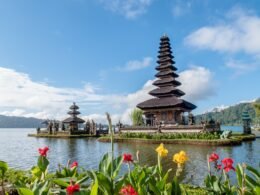
- Itineraries
The Ultimate Bali Itinerary: How To Spend 2 Weeks On The Island of The Gods
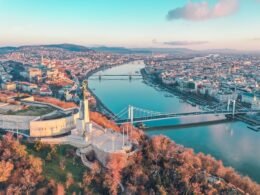
Budapest Weekend Itinerary – A Definitive Guide
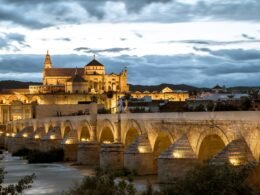
14 Days In Spain: The Ultimate Itinerary

- North America
The Ultimate 3 Day Toronto Itinerary
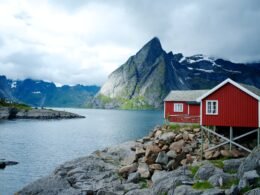
Norway In 7-10 Days: An Ultimate Itinerary
72 Hours In Perth: The Best Itinerary
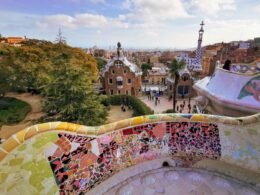
72 Hours In Barcelona – The Ultimate Guide

The Perfect 10-Day Malaysia Itinerary

- 2 Weeks for Couple
- 2 Weeks for Family
- Thailand Lantern Festival
- Indonesia(Bali)
- South Korea
- China (HK, Taiwan)
- Itinerary Ideas
- Asia Highlights Travel Reviews
- Thailand Travel Reviews
- Vietnam Travel Reviews
- Cambodia Travel Reviews
- Japan Travel Reviews
- Myanmar Travel Reviews
- China Travel Reviews

- How to Plan a Trip to Nepal
- Nepal Visas and Entry Policy
- Best Time to Visit Nepal
Best Places to Visit in Nepal
- How Long to Stay in Nepal
- How to Get Around Nepal
- Travel Cost in Nepal
Traveling to Nepal is an adventure that never fails to showcase the natural and cultural beauty of this world. Travelers are attracted by the country's immense Himalayan mountain views, jungles full of wildlife, beautiful golden temples, charming hill villages, ancient cities, and friendly people.
Nepal is a landlocked country in the Himalayas between China and India. The most popular things to do in Nepal include trekking, mountaineering, mountain appreciation/photography, and visiting temples. Nepal has a very vibrant culture that is a mixture of Buddhist and Hindu values, which can be seen in the abundance of temples and in the everyday life of the local people.
Nepal Travel Visas and Travel Restrictions
Entry policy: From March 14, 2022, Nepal has eased its entry requirements. All international visitors can go to Nepal whether vaccinated or not.
Visa policy: Most foreigners need a tourist visa to enter Nepal. However, Nepal makes getting a tourist visa quite simple by offering a visa on arrival option for Kathmandu's airport as well as all land crossings. The visa on arrival process is very quick and simple. It requires travelers to fill out a short form, which can also be filled out online 15 days before arrival to make the process even faster.
Best Times to Visit Nepal
Nepal's climate is divided into two seasons: the rainy season (May to August) and the dry season (September to April).
The best time to visit Nepal is during the "autumn" post-monsoon months (September to November) as the skies are generally clear and the views are spectacular, the visibility in the mountains is at its best and trekking conditions are great around Everest and Annapurna. Hotel prices and travel costs during this time are higher than average, and the tourist sites are a bit more crowded than usual. With Asia Highlights , you enjoy 100% refund of any payments made to China Highlights prior to 3 weeks before departure ( detail⇒ ).
Another good time to visit Nepal is in the "spring" pre-monsoon months (February to April) when the weather at high elevation is cool and good for trekking. Conditions are often less clear this time of year due to crop burning in the Kathmandu Valley.
"Summer" in Nepal is the monsoon season (April to September). The monsoon rains make for super blooms of beautiful Himalayan flowers, but also cause landslides and dangerous/unpleasant travel conditions (mud, leeches) throughout the country. Low prices match inconvenient travel opportunities.
Temperatures of the "winter" mid-dry-season (December to February) in Nepal often get below freezing in high elevation areas of the country, which can make for difficult trekking conditions.
Conversely, lowland areas such as Kathmandu Valley can be as warm as 20°C (68°F) in the winter months.
Discover real reviews of Highlights Travel Family 's best-rated service across trusted platforms.
Regarded as a trekkers' paradise, the two most popular places to go in Nepal are Mount Everest and Kathmandu, there is much more of this beautiful country to explore on foot outside these two destinations.
1. Kathmandu — Capital, Temples and Shrines
Kathmandu is the capital city of Nepal and the place where most travelers begin their journey. This is a city with chaotic narrow streets that are packed full of gorgeous temples and shrines. Explore the timeless cultural and artistic heritage to learn more about Kathmandu. Include the maze of shrines in the city center, and then wander around the shopping street (Thamel), which is full of handicrafts and great food.
From Thamel Street, you can walk to Durbar Square (an ancient palace), where the city's king was crowned. Spend a half day to observe the grand architecture there, and then have a cup of coffee and rest in the nearby restaurants or shops.
2. Pokhara — Natural Beauty and Adventure
Pokhara is a lakeside city near the Annapurna region. This city has long been famous for its spectacular scenery and abundance of adventure activities. There you can relax while taking in the views of mountains over bobbing boats on Fewa Lake, or participate in mountain biking, paragliding, and trekking.
Pohkara is the starting point for many famous treks, including the challenging Annapurna Base Camp Trek. The two-day Poon Hill Trek offers visitors incredible views of Annapurna in the distance, and the Annapurna Circuit Trek is a less demanding hike that can be taken at your own pace.
Pokhara is also home to the famous World Peace Pagoda, where you can have a panoramic view of the Annapurna range, Pokhara city, and Fewa Lake.
3. Patan — Ancient City, UNESCO World Heritage Sites
Patan, also known as Lalitpur — 'The City of Beauty', has a history dating back to the year 250 BC. Although Patan is only around 5 kilometers (3 miles) from Kathmandu, the city was a fiercely independent kingdom for most of its history and has managed to retain its unique culture.
The architecture of this entire city is based on the principles of the Buddhist Wheel of Righteousness and Patan has long been a melting pot of Hindu and Buddhist beliefs.
While you are in this ancient city make sure to explore the gorgeous temples, royal palaces, and statues of Durbar Square, and check out Patan Museum. This city is definitely worth a visit.
4. Nagarkot — Panoramic Himalayan Views
Nagarkot is located close to Bhaktapur and is well-known for its stunning views of the surrounding Himalayas. There are eight ranges that can be seen from this small mountainous town: Everest, Annapurna, Manaslu, Ganesh Himal, Lantang, Jugal, Rolwaling, and Numbur. You can also have a panoramic view of the Kathmandu Valley from this small town.
The town itself is surrounded by dense pine forests and is a quiet and peaceful place full of boutique and luxury hotels with mountain views.
Try to catch the dreamy views of sunrise and sunset on a clear day, the town also offers some short treks and mountain biking trails.
5. Chitwan National Park — Nature, Wildlife
If you want to enjoy the natural beauty and wildlife of Nepal, then Chitwan National Park should be on your list. As one of the most popular national parks in Asia, Chitwan National Park is the best place to observe Asia's rare and endangered species, such as the Bengal tiger and one-horned rhinoceros.
Besides Bengal tigers and rhinoceroses, there are elephants, leopards, Indian bison, and sloth bears to discover in the park. If you want to spend more than a day in the park, you can live in luxury lodging at the edge of the park, or in the affordable accommodation in a nearby village.
How Long to Stay in Nepal — Sample Itineraries
Nepal is a popular destination for trekking lovers. Your traveling days requirement will depend on your interests and where you want to go. Most of our clients spend 8–9 days to cover the essential highlights of Nepal.
See our 9-day Classic Nepal tour sample itinerary: Kathmandu (3 days), Pokhara (2 days), Chitwan (2 days), Nagarkot (2 days).
Top South Asia Tour Itineraries Including Nepal
Most of our clients prefer to include Nepal in a 2-to-3-week South Asia trip. The most popular tour itineraries usually include India, Nepal, and Bhutan. Get some inspiration to explore Asia from our 14-Day India, Nepal, and Bhutan Tour .
See more on our How to Plan an India and Nepal Trip 2024
The above sample itineraries are just for your information. You are welcomed to contact your own experienced 1:1 tour consultant for a tailor-made itinerary .
How to Get To and Around Nepal
Getting to nepal.
The best way to get to Nepal is by flight. There are direct flights available to Kathmandu from New York, Dallas, San Francisco, and Los Angeles in the US and from London, Paris, Munich, Frankfurt, and Istanbul in Europe. To make the trip to Nepal more affordable, travelers can head to India first and then fly to Kathmandu from New Delhi.
Getting Around in Nepal
The main transport from one city to another in Nepal includes planes, buses, and private vehicle. Trains are not available in Nepal.
Because of Nepal's mountainous terrain and poor infrastructure, traveling by bus around Nepal is often draining, and the bus may stop to pick up passengers everywhere too.
The best way to travel from one Nepali city to another is often by private car or jeep, which is more comfortable and faster than traveling by bus. It allows passengers the option of being picked up directly from their hotel and dropped off directly at their next hotel without the hassle of booking taxis and buying bus tickets.
By plane: Flying is another good option for traveling across Nepal. Most internal flights start or end in Kathmandu. The cities of Pokhara, Bharatpur, and Siddharthanagar all have airports. One problem with traveling by plane in Nepal is that delays and flight cancellations are very common due to adverse weather conditions like heavy rain, thick fog, strong winds, etc. (Airports in Nepal don't have the latest technology and so planes rely on instrumental landing systems.)
Connecting with Other South Asian Countries
There are flights from Kathmandu to other main cities in South Asian countries, including India, Bhutan, and Thailand. Most of our clients visit India before their trip to Nepal. They can fly to Kathmandu from Delhi, Varanasi, Mumbai, and Kolkata. Delhi offers the most flight options at the best prices.
From India, it is also possible to cross into Nepal overland. This journey requires taking a bus or train to the India-Nepal border. Trains from Delhi to the Sonauli border crossing often take around 14 hours.
Travel Costs for Nepal
For travelers from Europe and America, Nepal is the most affordable destination in South Asia. General speaking, if you are looking for a comfortable trip (mid-range hotels) in the top destinations in Nepal, it will cost between 10,000 and 12,500 Nepal rupees (US$80–100) per day per person.
The following are some cost estimates for different travel styles:
- For backpackers, the budget needed is around 30–50 USD/day per person (hostels, street food, tuk-tuks, rickshaws).
- For a medium budget, Nepal costs around 80–100 USD per day per person (3/4-star hotels, sit-down restaurants, taxies).
- For a higher standard and a more refined experience, US$100–150 per day per person is needed (4/5-star hotels, nice meals, private guide, and transfers).
Traveling Nepal with Asia Highlights
Want to experience the rich culture and stunning peaks of Nepal? We at Asia Highlights can help you plan your dream trip, tailor-made to suit your travel wants and goals. Leave the planning and stress to us; just relax and enjoy your journey.
Why Asia Highlights (10,000+ reviews & 98.8% 5-star rating)
- Save Your Time:
- Less research, more enjoyment!
- Real-time 1V1 expert planning
- Maximize Your Flexibility:
- Personal local guide and ride
- Explore at your own pace
- Celebrate Your Journeys:
- Specially-crafted family adventures
- Celebrate milestones with style!

- 9-Day Classic Nepal Tour
- 9-Day India Tiger Safari and Golden Triangle Tour
- 11-Day India and Nepal Tour
- 12-Day India, Vietnam, and Cambodia Tour
- 14-Day Nepal and Bhutan Tour
- 14-Day India, Nepal, and Bhutan Tour
- 14-Day Rajasthan Tour Package for Westerners
- 14-Day Romantic Honeymoon Trip in India
- 2-Week Luxury India Tour
- 20-Day China (including Tibet), Nepal, and India Tour
- 21-Day India, Nepal and Bhutan Tour
- 3-Week Nepal, Tibet, and Bhutan Tour
- Best Times to Visit Nepal —Guide to Nepal Weather and Travel Experience
- Nepal Trekking Guide — Find the Right Trek for You
- India Itineraries 2024: from 5 Days to 1 Month
- 2 Weeks in India 2024/2025: Top 4 Itineraries
- How to Plan a Trip to India 2024/2025 for First Timers
- Best (and Worst) Times to Visit India 2024, Rainy Season?
- How Much Does a Trip to India Cost?
- How to Plan an India and Nepal Trip 2024/2025
- Plan an Awesome Trip to India, Bhutan and Nepal (6 Tips)
- Nepal Weather in January
- Nepal Weather in February 2024
- Nepal Weather in March
- Nepal Weather in April
- Nepal Weather in May
- Nepal Weather in June
- Nepal Weather in July

Jessie was amazing ! Everything from her level of English to her understanding of what we valued .
We had a good time exploring the city with Selinda!
Our guide lele is a wealth of information, Lele is very professional and very attentive to our needs. Lele is amazing. Lele got everything spot on. It probably helps that Guilin is a brilliant place to visit so Lele has great material to work with but that doesn't take anything away from how much Lele helped make it a great trip.
Our guide for Beijing was super knowledgeable and experienced and able to help us to achieve as much as we wanted within the time given. We had a fun time guided by him as he is also super humorous and you can see how he interacts with the vendors and people whom he comes by. Thank you for a very enjoyable time in Beijing and accommodating to all our needs!
Our China Highlight guide. Michael, was attentive, thoughtful and knowledgeable. He narrated many interesting historical events about Chengdu while touring around the city and having afternoon tea with us. He was thoughtful to provide us with snacks during long hikes at Leshan or walks around the city.
She was very flexible and added extra time when we needed it and we felt extremely well taken care of. She also chose the best restaurants for us,
Our tour guide Helen, was excellent, she was very kind, professional and passionate for her work and she also loves Pandas! She will take you to take the best panda photos and to know more about Chengdu city. Our tour was great, she took us to all our destinations always with the best spots: Temples, pagodas, famous streets, theaters, pandas...you name it! Everything was great.
He picked up our pre-booked boat/other excursions tickets so we were able to avoid all the long lines and chaos. He is knowledgeable of the places we visited, courteous, fun to travel with and well-versed in Chinese classics.
Tom is the guide that will take you to where no other guide will. We pushed for the experience and Tom and the team delivered more than what we could have ever asked for. His English speaking ability and his Chinese history knowledge is second to none.
More reviews
Get Inspired with Some Popular Itineraries
At Asia Highlights, we create your kind of journey — your dates, your destinations, at your pace. You can have any trip tailor made for your travel.
More Travel Ideas and Inspiration
Sign up to Our Newsletter
Be the first to receive exciting updates, exclusive promotions, and valuable travel tips from our team of experts.
Why Asia Highlights
Where can we take you today.
- Middle East
- African Safari

- Travel Agents
- Our Differences
- Privacy Policy

Address: Building 6, Chuangyi Business Park, 70 Qilidian Road, Guilin, Guangxi, 541004, China

Some articles on Fair Dinkum traveller may contain compensated links. Please read the disclaimer for more information.
Explore Majestic Nepal: Your Perfect 7 Day Nepal Itinerary
Feb 11, 2024 | Feature , Nepal | 0 comments

In just seven days, you can embark on a journey that will take you through the heart of Nepal’s cultural heritage, natural beauty, and the awe-inspiring peaks of the Himalayas. Our meticulously crafted 7-day itinerary is designed to give you a taste of everything that makes Nepal genuinely majestic.
From the moment you arrive in the vibrant city of Kathmandu , with its bustling streets and historic Kathmandu Durbar Square , to the serene landscapes of Pokhara, every step is an adventure waiting to unfold.
We’ll guide you through the bustling local markets, the sacred temples, and the breathtaking trekking routes of the Annapurna region, introducing you to the path leading towards the famous Annapurna Base Camp. For the more ambitious trekkers, insights into the journey towards Everest Base Camp will also be touched upon.
Along the way, we’ll ensure you can indulge in the most authentic and savoury Nepalese cuisine, just like a local would. Whether you’re a seasoned traveller or embark on your first visit to Nepal, this itinerary will transform how you see the world with a perfect blend of cultural immersion, natural exploration, and personal challenge.

Explore Majestic Nepal: Your Perfect 7 Day Nepal Itinerary.
Key Takeaways of your Nepal Itinerary
- This packed 7-day itinerary enables the discovery of Nepal’s cultural and natural wonders, starting with Kathmandu’s historical sites and ending with the serene landscapes of Pokhara.
- Experiencing the Ghorepani Poon Hill trek in the Annapurna region can be a highlight, providing a blend of stunning vistas, local culture, and manageable adventure suitable for varying fitness levels.
- Exploring beyond tourist attractions, engaging in responsible travel practices, and indulging in local Nepalese cuisine enhances the travel experience and supports community livelihoods.

Tours in Nepal will include the fantastic mountains.
Are you looking at travelling in Nepal from Kathmandu to Pokhara? Click here for the best fares and times.
Discovering the Best of Nepal in 7 Days: Itinerary Breakdown
Have you ever dreamt of exploring ancient temples, immersing yourself in Kathmandu’s vibrant hustle and bustle, and soaking in the serene beauty of Pokhara? Well, this 7-day itinerary will turn your dream into reality! From historical hotspots in Kathmandu to the tranquil lakeside town of Pokhara, your journey will be a multi-sensory experience that you’ll treasure forever.
Nepal is not just a destination; it’s an experience. One moment, you’re navigating the bustling streets of Kathmandu ; the next, you’re trekking through the majestic Annapurna range , all while engaging with the kind-hearted Nepalese people and savouring their delicious cuisine. This 7-day Nepal itinerary offers an unforgettable journey through Nepal’s cultural richness, diverse landscapes, and culinary delights, making it the perfect opportunity to visit Nepal.

Discover the best of Nepal when planning your 7-day Nepal Itinerary.
Day 1: Arrival in Kathmandu and Exploring the City
Upon landing at Kathmandu’s Tribhuvan Airport, your Nepal adventure begins. However, an initial step is to navigate the visa process before embarking on your city exploration. Just fill out an arrival card and proceed to the checkpoints to purchase and validate your visa. Good news for many nationalities: a visa-on-arrival is available, with costs varying based on the length of your stay.
With the formalities taken care of, you’re ready to immerse yourself in Kathmandu’s vibrant energy. Start in Thamel, the city’s tourist hub, where a relaxed atmosphere awaits to help you recover from your journey. But don’t just stay there. Hire a taxi for the entire day to explore Kathmandu’s attractions efficiently. It’s a practical choice that ensures you see the best of what the city has to offer.
Kathmandu is a treasure trove of ancient architecture and cultural landmarks. Key attractions include Kathmandu’s Durbar Square, the city’s regal heart, and the vibrant streets of Thamel. Don’t miss out on the ancient shrines and stupas such as Swayambhunath, better known as the Monkey Temple and the nearby Patan Durbar Square.
To delve deeper into the essence of Kathmandu, it is essential to venture beyond the main tourist attractions and truly explore Kathmandu. Here are some ways to do that:
- Engage with the residents
- Take a walk around the local marketplaces
- Support small businesses
- Participate in local heritage walks – they offer a deep dive into the city’s rich history and vibrant cultural life.
Are you Looking for accommodation in Kathmandu? Check out our website for the best prices and availability.

Bouddha Stupa.
Day 2: UNESCO World Heritage Tour in Kathmandu Valley
Day 2 of your Nepal trip unfolds more of Kathmandu’s cultural tapestry. The Kathmandu Valley is home to seven UNESCO World Heritage Sites, each offering a unique insight into the region’s rich history. Start your day with a visit to the revered Pashupatinath Temple. This significant religious landmark for Hindus is best accessed by hiring a car with a driver, ensuring a comfortable journey.
Continue your exploration by heading to Kathmandu Durbar Square, a marvel of Newar architecture. This historic square is a spectacle of palaces, courtyards, and temples that date back to the 12th and 18th centuries. Take your time wandering through the maze of monuments, including the house of the Living Goddess, Kumari.
Next, venture to the ancient city of Bhaktapur, where time stands still. With its unique atmosphere, Bhaktapur Durbar Square is less crowded and offers a more intimate experience. Admire the stunning 55 Window Palace, the Golden Gate, and the majestic statues and structures that speak volumes of the valley’s craftsmanship and culture.
From there, move on to the Swayambhunath Stupa, popularly known as the Monkey Temple. As the afternoon sun lowers in the sky, this World Heritage Site comes alive with an almost palpable spiritual energy. The sunset view alone is awe-inspiring, lending a dreamy charm to the overall experience.
Your day continues with a visit to Boudhanath Stupa. Here, you’ll find yourself immersed in a spiritual atmosphere that’s hard to describe. Observe the impressive stupa, take in the harmonious chants, and let the spiritual vibes wash over you. This experience is bound to create a lasting impression.
As the day ends, reflect on the cultural richness you’ve encountered. The ancient sites, the spiritual energy, the historical insights – every moment spent in the Kathmandu Valley lends a deeper understanding of Nepal’s cultural heritage. And with that, you’re ready for the next part of your journey.

Bhaktapur Durbar Square.
Day 3: Journey to Pokhara and Phewa Lake
Day 3 shifts from Kathmandu’s cultural exploration to Pokhara’s natural splendour. There are two options available for your journey from Kathmandu to Pokhara. You can fly with domestic airlines like Buddha Air or Yeti Airlines if you prefer a faster route with potential Himalayan views. But a scenic bus ride might be your best choice if you’re more inclined towards road trips. Although the journey takes approximately 6-7 hours, the picturesque landscapes make it worth the time.
Stepping into Pokhara, you’ll be embraced by a profound tranquillity. The city, known for its relaxed atmosphere, starkly contrasts the bustling Kathmandu. Take a stroll around Lakeside Pokhara and soak in the serene beauty. The lake’s tranquil waters mirror the surrounding mountains and the sky, creating an enchanting view that’s hard to forget.
End your day with a boat ride on the beautiful Phewa Lake . As you row gently on the peaceful waters, you’ll find yourself captivated by the city’s charm, the majestic mountains in the distance, and the soothing rhythm of the oars hitting the water. This experience offers an ideal opportunity to relax and gear up for upcoming adventures.
As the sun sets and the stars take over the sky, the city of Pokhara takes on a new persona. The streets light up, and the night comes alive with music and laughter. Spend your evening exploring local eateries, shopping for souvenirs, or enjoying a quiet dinner by the lake.
Welcome to Pokhara, your gateway to the Annapurna Mountain Range.
Are you looking for accommodation in Pokhara? Click here for availability and prices.

Boating on Phewa Lake with the Annapurna mountain range in the background.
Trekking in the Annapurna Region: Ghorepani Poon Hill Trek
If the tranquil beauty of Pokhara has left you spellbound, wait until you witness the grandeur of the Annapurna range . Nestled in the Himalayan foothills, the Ghorepani Poon Hill Trek awaits you. Known for its accessibility and moderate difficulty, this trek is ideal for those with limited time or varying levels of physical stamina.
The trail meanders through captivating rhododendron forests , leading you past cascading waterfalls. You’ll stay in the culturally rich teahouses of Gurung villages, experiencing the warm hospitality of the locals along these trekking trails.
A significant highlight of the trek is Poon Hill . Standing at 3,210 meters, it offers panoramic views of the Annapurna and Dhaulagiri ranges. Prepare for an adventure blending physical challenges, breathtaking landscapes, and rich cultural experiences.
Click here to find the best trekking guides through the Annapurna Region!

The Machhapuchhre, also called Fish Tail in the Annapurna region, is said to be the place where the god Shiva lives in Nepal.
Day 4: Trek from Nayapul to Tikhedhunga
Your Annapurna adventure begins with a trek from Nayapul to Tikhedhunga. The trek includes:
- The initial ascent takes up to 7 hours, and steep and rugged terrain predominantly consists of uphill sections.
- Start your journey in Nayapul after a shuttle from Pokhara.
- Hiking to Hille takes about 3.5 hours.
The trek from Nayapul is an adventure in itself. You’ll walk on a bumpy dirt road alongside a river valley, crossing multiple streams via bridges. Don’t be surprised if you encounter donkeys, horses, and water buffaloes on your path. It’s a part of the charm of trekking in the Annapurna region.
As you ascend, take some time to admire the stunning landscapes around you. The lush greenery, distant mountains, and clear blue sky are like stepping into a postcard. The journey might be challenging, but the rewarding views make every step worthwhile.
Upon reaching Tikhedhunga, the exhilaration takes over despite the fatigue as you realize that this trek to Everest Base Camp transcends a mere physical journey. It’s an opportunity to connect with nature, challenge yourself, and experience Nepal’s beauty in its purest form.

All smiles on the Nepal trek with a fantastic guide.
Day 5: Trek to Ghorepani and Poon Hill Sunrise
Day 5 of your trek takes you from Tikhedhunga to Ghorepani . This part of the trek involves:
- It is an extensive climb that includes a stone staircase with at least 3,000 steps
- A mix of packed dirt pathways and stone paths
- Depending on the time of year, you might even encounter snow around Gurung Hill
It might sound daunting, but the stunning views more than makeup for the climb.
The highlight of the day, however, is the early morning hike to Poon Hill for the sunrise. Imagine standing on the hill, surrounded by the tranquil silence of the early hours, as the sun slowly rises over the horizon. The first rays of light hitting the peaks of the Annapurna and Dhaulagiri ranges create a spectacle that’s nothing short of magical.
As you return to Ghorepani, take a moment to appreciate the experience. The breathtaking sunrise, the panoramic views, the feeling of accomplishment – these are the moments that make your trip to Nepal unforgettable.
By reaching Ghorepani, you’ve covered a significant part of your trek and created memories that will last a lifetime. As you rest and prepare for the next day, take a moment to reflect on the journey so far. The challenges, achievements, and moments of awe are all part of your Annapurna story.

Trekkers enjoy the sunrise at Poon Hill with panoramic mountain views.
Day 6: Trek back to Nayapul and Return to Pokhara
Day 6 of your trek marks the end of your adventure in the Annapurna region. From Ghandruk, you’ll trek back to Nayapul, which takes about 4.5 hours. The descent to Nayapul brings its challenges. You’ll encounter steep sections and muddy paths that require careful navigation.
With the descent, the sweeping mountain views gradually give way to the lush valley greenery that takes centre stage. The sound of your footsteps on the dirt path, the cool mountain air, the distant sound of a river – a symphony of nature accompanies you on your way back.
Once you reach Nayapul, it’s time to bid farewell to the Annapurna region. As you head back to Pokhara, you carry with you memories of a thrilling trek, a sense of accomplishment, and a deeper appreciation for the wonders of nature.
Back in Pokhara, the tranquillity of the city welcomes you, a serene haven akin to the calm after the exhilarating adventure in the Annapurna region. But that’s the beauty of this 7-day itinerary – it offers a perfect blend of adventure, relaxation, and cultural exploration, much like the diverse experiences you might encounter in Chitwan National Park, another of Nepal’s gems.
- Cultural exploration
- Natural beauty

An ultralight plane flies over Pokhara and Annapurna region in Nepal
Day 7: Exploring Pokhara’s Attractions
On the final day of your Nepal trip, explore Pokhara’s attractions. Start your day with a visit to the World Peace Pagoda, also known as Shanti Stupa. This Buddhist monument on Anadu Hill symbolizes peace and offers a panoramic view of the Annapurna range, Pokhara City, and Fewa Lake. You can reach the pagoda by hiking, cycling, or driving. Whichever route you choose, the journey offers a unique opportunity to explore local villages and interact with the residents.
Next on your list is Davis Falls, a renowned tourist attraction near the Pokhara airport. Known locally as Patale Chhango, this waterfall offers both beauty and tranquillity. The waterfall’s mystery is further amplified by the local legends surrounding it. It’s a perfect spot for some quiet reflection or to enjoy the natural beauty of Pokhara.
Remember to explore the local villages around Pokhara. These authentic Nepali villages offer a glimpse into the local lifestyle, culture, and traditions. Walk around the town, interact with the locals, and immerse yourself in Nepal’s rural charm.
As the sun sets on your final day in Nepal, take a moment to reflect on your journey. The experiences you’ve had in Nepal have added a unique colour to your Nepal canvas, including:
- The ancient temples of Kathmandu
- The serene beauty of Pokhara
- The challenging trails of the Annapurna region
- The delicious Nepalese cuisine
As you prepare to say goodbye to this beautiful country, you know these memories will remain etched in your heart forever.
Experience an exciting adventure in Pokhara with these amazing day tours! Click here to explore.

Himalaya mountains and old stone cabin near Pokhara in Nepal
Savouring Nepalese Cuisine
A visit to Nepal remains incomplete without indulging in the traditional Nepalese food. The country’s diverse culinary landscape offers a blend of flavours that will delight your taste buds. Start with the staple meal, Dal Bhat Tarkari, which consists of:
- Lentil soup
- Vegetable stew
- Spicy chutney
Next on your culinary journey is Momos, Nepalese steamed dumplings with fillings like meat and vegetables, served with a distinct sesame and red garlic chilli sauce. Don’t forget to try other traditional dishes like:
- Gundruk, a fermented leafy green
- Yomari, Bara, and Choila, Newa cuisine specialties
- Thukpa, Tibetan-influenced noodle soup
- Chiura, versatile beaten rice
Remember, every meal in Nepal is complemented by Achaar, diverse pickles that can be tangy, spicy, or sweet.
To enjoy these culinary delights, plenty of restaurants in Kathmandu and Pokhara serve traditional Nepalese cuisine. Here are some options:
- Gokarna House Restaurant in Kathmandu: offers a decadent dining experience with various folk dances
- Bhojan Griha, also in Kathmandu, provides a rich dining experience with traditional Nepalese cuisine
- Yala Cafe: located in Kathmandu, it is an art gallery and also serves Newari dining
- Sasa Newari Restaurant: known for its traditional ambience and Newari cuisine
In Pokhara, the culinary scene includes places like Wellness Organic Club and Utsav Nepali Restaurant, where traditional music and cultural performances enhance the dining experience. For those seeking to enjoy meals in a more casual setting, Karuwa Restaurant in Thamel and Paleti Bhanchha Ghar offer a wide variety of local dishes suitable for gatherings.

Traditional Nepalese cuisine spread on a table.
Tips for Responsible Travel in Nepal
Travel extends beyond mere exploration of new places; it also encompasses leaving a positive imprint on the visited locations. When visiting Nepal, you can practice responsible travel in many ways. Start by booking your trip and accommodations through local businesses and pay in cash. This simple act can significantly support the Nepali economy and community livelihoods.
Respecting local customs is another vital aspect of responsible travel. Here are some ways to show respect for the local culture and traditions:
- Use your right hand to eat
- Dress conservatively
- Ask for permission before photographing people
- Be aware of non-verbal communication
These small actions can go a long way in showing respect for the local culture and traditions.
Preserving Nepal’s natural heritage holds equal importance. Purchase sustainable crafts, avoid negative interactions with wildlife, and manage your waste responsibly. Remember, you’re a guest in this beautiful country and must keep it clean and pristine for future generations.
Participate in sustainable development by volunteering with qualified organizations and buying locally-made products over mass-produced items. By doing so, you’re not just supporting the local economy but also contributing to the community’s overall development.

The beautiful scenery and an even better lunch while visiting Nepal.
Adventure Activities and Extensions
If you wish to extend your stay in Nepal, an array of adventure activities and extensions are available for exploration. Fancy an aerial adventure? Try paragliding in Pokhara. Launching from the famous Sarangkot hill, you can experience flying alongside birds and enjoy views of temples, lakes, and peaks like Mt. Machhapuchhre (Fishtail) and the Annapurna range. Tandem paragliding flights are conducted by certified pilots focusing on safety, offering a thrilling yet secure experience.
Another great option is to visit Chitwan National Park for a jungle safari. This extension allows you to indulge in a different aspect of Nepal, witnessing the diverse wildlife and the Tharu culture. Some highlights of the park include:
- Spotting one-horned rhinos
- Bird-watching
- Canoeing in the Rapti River
- Visiting the Tharu village
The park, one of our beautiful national parks, offers many experiences that nature lovers will appreciate.
Remember, every adventure activity you choose contributes to the local economy, making your trip more impactful. So, whether it’s soaring in the skies over Pokhara or exploring the wild terrains of Chitwan National Park, each adventure adds a thrill to your trip and helps support the local communities.
As you embark on these adventures, remember to keep your impact minimal, respect the local customs, and take back only memories. After all, the best adventures positively impact you and the places you visit.

A small village on the way to Nagarkot from Chisapani. Adventure is always to be had in Nepal.
A Summary of your 7-Day Nepal itinerary
Over seven days, you’ve traversed Nepal’s diverse landscapes, from the bustling streets of Kathmandu to the tranquil beauty of Pokhara and the challenging yet rewarding trails of the Annapurna region.
You’ve embarked on a sightseeing tour that included ancient temples with fine traditional architecture, savoured the rich flavours of delicious Nepalese cuisine, and experienced the warm hospitality of the Nepalese people.
Your adventure sports activities may have pushed you to new heights, both literally and metaphorically. As you prepare to exit Nepal, you carry memories of an extraordinary holiday and a piece of this beautiful country that will beckon you back for more explorations.
Perhaps next time, your journey will include a safari in the lush landscapes of Chitwan National Park or another of Nepal’s renowned natural wonders. Until then, the impressions of Nepal will linger in your heart, calling you to return to its majestic realms.

Discover the best tourist places in Nepal.
Frequently Asked Questions
Is one week in nepal enough.
One week in Nepal is enough to enjoy the cultural treasures of Kathmandu, explore the surrounding hills and villages, and even take a scenic flight along the Himalayas. It’s a great introduction to the country’s highlights and culture.
How much does a 7-day trip to Nepal cost?
A 7-day trip to Nepal can cost around $1,135 for a solo traveller, $2,024 for a couple, or $688 for a family of 4. The actual cost will vary based on your specific destinations.
Where is Chitwan National Park?
Established as a wildlife sanctuary in 1973 and recognized as a UNESCO World Heritage Site in 1984, Chitwan National Park lies in the lush subtropical lowlands of south-central Nepal. Covering an expanse of approximately 932 square kilometres, this park is a haven for biodiversity, hosting species such as the majestic one-horned rhinoceros, elusive royal Bengal tiger, and the unique gharial crocodile, among its over 700 species of wildlife.
What are the trekking conditions like in the Annapurna region?
Trekking in the Annapurna region, mainly the Ghorepani Poon Hill trek, offers moderate difficulty with steep and rugged terrains and beautiful rhododendron forests and waterfalls to enjoy. Enjoy your adventure!
What are some must-try Nepalese dishes?
You must try Dal Bhat Tarkari, a traditional Nepalese staple with lentil soup, rice, and vegetable stew. Momos are steamed dumplings with meat or vegetable fillings served with a distinct sesame and red garlic chilli sauce. Enjoy!
How can I practice responsible travel in Nepal?
You can practice responsible travel in Nepal by booking with local businesses, paying in cash, respecting local customs, protecting natural heritage, and choosing locally made products when possible. Enjoy your trip responsibly!
What are the Major Durbar Squares in Nepal?
The major Durbar Squares in Nepal—Kathmandu, Bhaktapur, and Patan—are grand legacies of the Malla Kings. These squares are not just historical landmarks but vibrant centres of palaces, temples, and cultural festivities, reflecting Nepal’s rich architectural and artistic heritage.

Enjoy the peace and serenity of the Garden of Dreams Kathmandu.
Submit a Comment Cancel reply
Your email address will not be published. Required fields are marked *
This site uses Akismet to reduce spam. Learn how your comment data is processed .

Get Your Free E-Book Today!
Stay in the loop with our monthly newsletter! Get expert travel tips and destination advice, and snag a free E-Book!
You have Successfully Subscribed!
We noticed you're visiting from United States (US). We've updated our prices to United States (US) dollar for your shopping convenience. Use Australian dollar instead. Dismiss
Travel Itineraries | Luxury Travel | Travel Tips
10 Day Nepal Travel Itinerary + Travel Guide

Nepal , one of the most popular destinations in the Eastern Himalayas is the best blend of nature, history and adventure. Bordered by China’s Tibet Autonomous region and India, Nepal is home to the World’s highest peak – Mt. Everest. And this 10 Day Nepal Travel Itinerary recommends the Best of the Things to do in Nepal along with The Best Hotels to stay.
The country is well known in the West among backpacking and trekking communities and receives a large number of tourists every year. From exploring the tourist hubs to heading out on outdoor adventures, there is no end to the list of best things to do in Nepal . So go ahead to read further and find for yourself a comprehensive travel guide to plan and execute an epic trip to Nepal.
Don’t forget to check out these amazing Treks in Nepal , including the famous Everest Basecamp Trek and the Annapurna Basecamp/Circuit Trek.
PS – Before you head to Nepal and discover the beauty of the Top Sights and Attractions in Nepal , during your 10 Day Nepal Travel Itinerary , as listed below, check out these 20+ Travel Hacks and Resources , that will elevate your Travel experience to a different level all together.
Swayambhunath Stupa
Pashupatinath temple, kathmandu durbar square, garden of dreams, patan durbar square, bhaktapur durbar square, where to stay in kathmandu, best cafes and restaurants in kathmandu , how to reach nagarkot, relax and rejuvenate, nagarkot view tower, panoramic trail, where to stay in nagarkot, best cafes and restaurants in nagarkot, how to reach pokhara, movie garden, world peace pagoda, davis falls, gupteshwar mahadev cave, begnas lake, sarangkot view point, paragliding, bunjee jumping, where to stay in pokhara, best cafes and restaurants in pokhara, how to reach bandipur, bandipur town, siddha cave, temples in bandipur, village hikes, where to stay in bandipur, best cafes and restaurants in bandipur, 10-day travel itinerary for nepal, travel tips to remember, share this:, how to reach nepal.
- Tribhuvan International Airport is the only international airport in Kathmandu, the capital of Nepal and you could fly down from any country. However, from India, direct flights are only available from major cities like Delhi and Mumbai.
- In the peak seasons, the rates go too high if you’re taking a connecting flight. Bhadrapur airport in the border town of Nepal comes into picture then. You have to first fly to Bagdogra Airport and then cover a distance of 45 kms by road to reach Bhadrapur Airport , which takes only about one hour . There are about 10 flights daily from Bhadrapur Airport to Kathmandu. These flights take 40 minutes approximately to reach Kathmandu and the tickets come in around INR 2000. But do remember that you cannot book a flight from Bhadrapur to Kathmandu on most of the common ticket booking apps/websites. You could check the websites/apps of Buddha Air or Yeti Airlines to book the ticket for this leg of the journey.
- Reach Gorakhpur in Uttar Pradesh via bus/train. Next, you’d have to cover a bus ride of 3 hours to reach Sunauli , the border town. You need to get an exit stamp from the immigration office and cross the border on foot. You’d now be in Bhairawa , the border town in Nepal from where you can take an overnight journey to Kathmandu.
- There are direct buses daily from Siliguri in West Bengal to Kathmandu which is an overnight journey, costing about INR 2000.
- You could reach the border town of Kakarvitta , which is an hour away from Siliguri in West Bengal from where frequent buses (luxury and non-luxury) are available to reach Kathmandu. This too is a night long journey.
Tourism Hotspots in Nepal
Previously being the trade route between India and Nepal, Kathmandu has always held a considerable significance in terms of history, spirituality and cultural values. The city might appear to be chaotic and confusing at a first glance but if you pause and re look, you will experience warmth and discover stories at every nook and corner.

The city of Kathmandu, founded in 12 th century AD and earlier known as Kantipur , in located in central Nepal. Though there are traces of early civilization in Kathmandu, the growth to the present bustling city is believed to have got a boost due to the trade carried out in the Indo-Tibet route.

From exploring the busy streets of Thamel to taking a bus ride to reach the heritage sites , there is no end to the list of things that you could do in Kathmandu. There are tons of things you can expect in the capital city of Kathmandu.
What to See in Kathmandu?
Visit Swayambhunath Stupa (also known as monkey temple), perched on a lofty hillock to witness an amalgamation of Hindu and Buddhist faiths. It is one of the most Iconic Landmarks in Kathmandu, and the construction of this mighty shrine is said to have been finished by the 13 th century. Climb up through the steep staircase to the top of the stupa to enjoy a panoramic view of the Kathmandu valley. If you can, try to stay till evening to enjoy a surreal sunset.

Located on the banks of Bagmati river, Pashupatinath Temple is the holiest site in Nepal for Hindus, and also one of the Most Famous Attraction of Kathmandu. Walk through the busy temple complex that consists of 518 temples and buildings to have a look at the wood carvings and detailings made by silver. Pashupatinath Temple, a UNESCO Cultural Heritage site, is dedicated to lord Shiva and devotees from all over Asia visit this sacred site. Shiva Ratri is one of the most important occasions that are observed in this temple. You must not miss the evening aarti in Pashupatinath Temple.

Consisting of about 50 pagoda-like temples, courtyards and royal palaces such as Hanuman Dhoka, Kathmandu Durbar Square is a UNESCO World Heritage Site which was the palace for the Shah and Malla dynasty of rulers who ruled until 19 th century. Durbar Square has cultural as well as historical significance. Built in the Newari style, the temples and towers are carrying forward the legacy of rich tradition and culture in Kathmandu. A visit to Kathmandu Durbar Square is much needed to understand the cultural aspect of Kathmandu, away from the hustle and bustle of the city.
Take a tour of Garden of Dreams, a beautifully created neo classical historical garden right in the heart of the city. It was originally built as a private garden in the 20 th century and was later handed over to the government and opened to the public in 2007. A combination of exquisite pavilions, fountains, ponds and trimmed gardens, Garden of Dreams indeed looks like an enclave right out of your dreams. Also drop in to Kaiser Café situated within Garden of Dreams to relish over some continental delicacies.

Patan Durbar square, located in Lalitpur district is best known for its artistic significance and old world charm. Patan Durbar Square too is a World Heritage Site and houses a museum that exhibits an incredible collection of metal crafts, pieces of wood carvings and other numerous artifacts. What is more engaging in Patan are the alleys where you’d find craftsmen working on metal pieces, ornaments and paintings. It is the best place to experience Newari culture and cuisines in Kathmandu valley. Savour on some amazing Newari delicacies in the local eateries after you finish taking a tour of the entire complex.
Located in the east of Kathmandu Valley, Bhaktapur Durbar Square is a living example of the medieval lifestyle and look of the entire valley. This old city is said to have retained the ancient way of living with its beautiful architecture, pottery square, and the royal palace dating back to 12 th century. A UNESCO World Heritage Site, Bhaktapur Durbar Square is also known for the celebration of the grand and century old festivals that attract tourists from all over the world. Even though Bhaktapur is only about an hour away from Kathmandu and is usually explored as a part of Kathmandu, it is recommended that you spend a day or two here to get the real essence of Newari lifestyle in its unchanged form.

- Hostels: Big Tree | Zostel Kathmandu | Flock Hostel
- Budget Hotels: Nexus Inn | Hotel Yala Peak
- Mid-ranged Hotels: Arushi Boutique Hotel | Hotel Jampa | Hotel Moonlight
- Luxury Hotels: Thamel Villa Heritage Hotel | Dalai-La Boutique Hotel | Fairfield by Marriott
- Cafe Swotha in Patan for all day breakfasts and light meals.
- Dhokaima Cafe for continental and amazing salads.
- Kaiser Cafe for best of continental amidst a beautiful garden.
- Roadhouse Cafe in Thamel for delicious pizzas.
- Tukche Thakali Kitchen for a sumptuous thakali meal.
Nagarkot is a magnificent union of Himalayan ranges, clouds, sun and pristine valleys that is sure to leave you in awe of its beauty. Located some 30 kms away from Kathmandu, Nagarkot is famous for its hiking trails and viewing sunrise. The laid back village life is a contrast to the hustle and bustle of Kathmandu city – a much needed escape to experience spectacular views of the snow capped Himalayan ranges.

- You can reach Nagarkot by a private taxi from Kathmandu that costs between NPR 2500-3000 for a drop. If you also want to return by a taxi, you should arrange for it beforehand as it may get difficult to find one in Nagarkot. Your hotel in Nagarkot would be able to help you regarding this.
- To reach Nagarkot by a local bus, you’d have to break the journey into two segments . First, reach Bhaktapur from Kathmandu and from Bhaktapur, take another bus for Nagarkot. These local buses are usually very crowded and traveling with luggage is not recommended. However, if you’re a backpacker and want to strike a conversation with the locals, traveling in a bus is the best idea. The total time to reach Nagarkot, including changing buses would take up to 2.5 hours, costing about NPR 100.
- A third option is to divide the journey into bus and a taxi. First, travel to Bhaktapur in a bus , as they are frequently available from all the major points in the city. From Bhaktapur, hire a taxi to drop you off at Nagarkot that would cost you between NPR 1200-1500. This brings the cost about 50% down without having to go through the back-breaking bus ride on the curvy and bumpy mountain roads.
Things to do in Nagarkot
Nagarkot is the perfect place to relax and rejuvenate amidst a calm ambience. So enjoy the gentle breeze from your balcony or the cosy cafes and soak the best of nature’s offerings.
Wake up at dawn to witness a gorgeous sunrise. Hike up to the Nagarkot View Tower to witness the sun rise through a panorama of mountains.
If the wilderness of nature interests you then you should definitely hike the Panoramic Trail which makes a circle of the whole area so you wouldn’t have to take the same route to get back to Nagarkot. It would take about 3 hours with moderate fitness to cover the entire trail. The hike is totally worth your time as it takes you through forests and the trail opens up to an open area from where Mt. Everest is also visible on a clear day.

- Budget Hotels: Hotel At the End of the Universe | Hotel Everest Window View
- Mid-ranged Hotels: Everest Manla Resort | Peaceful Cottage and Cafe Du Mont
- Luxury Hotels: Hotel Mystic Mountain | Hotel Country Villa | Club Himalaya
- Cafe Du Mont
- Berg House Cafe
A picture perfect lake town and the ultimate destination for adventure lovers and trekkers, Pokhara has a calm setup, yet full of life. The second largest town in Nepal, Pokhara is spread over Pokhara valley in Gandaki region and is the foothill town of Annapurna Range. Pokhara is a heavenly abode for backpackers, with many hostels and budget stays spread across the entire stretch beside Phewa Lake that offers exceptional views of the lake and layers of mountains. From choosing to spend a lazy day beside the lake to heading on an adventurous journey, Pokhara is the place that offers a plethora of experiences to choose from as listed in this Pokhara Travel Guide.

- Fly to Pokhara from Kathmandu to witness the incredible Himalayan ranges from the top. There are about 20 flights daily that takes only 30 minutes and starts from as low as INR 1400 if you manage to book on time.
- You could also travel from Kathmandu to Pokhara by bus (there are many types – non luxury, deluxe, super deluxe etc). The tickets generally start from INR 600 and the journey takes about 8 hours including the stop for lunch (do not believe the usual claims of a 6-hour journey). A deluxe bus (which is the only comfortable option to survive the rough roads) would cost you INR 1000 or more and thus, spending a few extra bucks on flight is recommended to save a lot of time.
- Private taxis can also be booked from Kathmandu for INR 6000 or more (depends on your bargaining skills), which would take between 7-8 hours to reach Pokhara.
Things to do in Pokhara
Phewa lake is the main tourist hotspot and the most iconic sightseeing landmark in Pokhara and all the activities, restaurants and bars surround this spot. You should allot a minimum of half a day only to explore the lake side. Take a stroll, or a boat ride to reach Barahi Temple or the villages on the other side of the lake or relax at the lake side restaurants and bars to enjoy the views of beautiful landscape and the colourful boats floating on Phewa Lake. You could also book your stay right next to the lake to be able to witness this beauty right from your window.

For an out of the box experience, drop in at Movie Garden at Lakeside to watch a movie in the open, with great pizzas and some beer. An open theater built on a terraced land, with Phewa Lake on one side is the best place to spend an evening in Pokhara.

You could reach World Peace Pagoda either by a boat ride and then hiking for about 30 minutes or by a taxi that will drop you off at the bottom of the stairs that leads to the World Peace Pagoda, situated on top of Ananda Hill. The World Peace Pagoda is a symbol of peace and was built by Japanese monks in 1973 as a gift to Nepal. It is the best place to experience a tranquil environment and also get some clear views of the Annapurna range.

Also known as Devi’s Falls, this spot is one of the major tourist attractions in Pokhara. Located about 5kms from Lakeside, Davis Falls has a story attached to it. It is believed that a Swiss couple went to swim at this place but Lady Davi got carried away by the force of the water and passed away. The sight of the underground falls that disappears into a gorge is an interesting place to visit on your trip to Pokhara. There is an entry fee of NPR 30.

The Gupteshwar Mahadev Cave is said to have been discovered in the 16 th century and is rumoured to be the longest cave in Nepal. Throughout your walk inside the cave, you’d spot shrines and statues in the dim lights. The cave is lined with shining stones and finally opens up to the view of a waterfall that is the lowest point of Davis falls. The cave can be visited between 7am-6pm with an entry fee of NPR 100.

A quick visit to Begnas Lake would indeed be a serene escape to unwind and enjoy a quiet retreat. You could reach Begnas Lake by a bus that costs around NPR 55 or by a cab that would charge you around NPR 1500. Take a boat ride in this splendid creation of nature as an alternative to its busier counterpart.
Located at an altitude of 1592 m, Sarangkot Viewpoint is a perfect place to enjoy unparalleled views of Annapurna and Dhaulagiri Range. You must reach Sarangkot about 30 minutes before the sunrise to find the best spot (do remember that many other people would head to Sarangkot to witness the sunrise). Though buses are available, it is recommended that you take a cab to reach Sarangkot to avoid getting late. A can from Lakeside would cost about NPR 1500 and take 40 minutes to reach below the hilltop in Sarangkot, from where you can hike up to the view point. You may also hire bikes to reach Sarangkot but do remember that the last leg of the road is quite rough and steep.

Adventure activities in Pokhara

Paragliding is an extremely popular activity in Pokhara. Imagine flying over the beautiful mountain ranges and getting a closer look of the Annapurna Mountains. I’m sure you would want to miss this epic experience. Female travellers may choose to fly with female pilots that most of the well reviewed agencies now have. A 30 minute paragliding would usually cost around NPR 6000.
A jump site 20 minutes away from Pokhara, run by HighGround Adventures, offers a 3 seconds free fall from a 80 m high tower. For the adrenaline junkies, this would be an exhilarating experience to remember for life.
The zipflyer too is run by HighGround Adventures and they claim to have the world’s tallest, longest and steepest zipline that goes for 1.8 kms on a 56 degree incline and a vertical drop of 600 m, speeding up to 120 km/hr. The experience is a thrilling one to fly over the Pokhara valley down below and get spectacular views of the Annapurna Range.
The Panchase Trek and Poonhill Trek are short treks that take 4-5 days depending on your fitness level. The treks in Nepal are few of the top Himalayan treks to experience.
- Hostels: Zostel Pokhara | Paila Hostel | Pokhara Backpackers Hostel
- Budget Hotels: DnD Apartment Pokhara | Hotel Middle Path & Spa
- Mid-ranged Hotels: Busy Bee Resort | Dahlia Boutique Hotel | Bar Peepal Resort
- Luxury Hotels: Waterfront Resort | Himalayan Front Hotel
- am/pm cafe for a wholesome organic meal.
- Perky Beans for breakfast.
- Godfather’s Pizzeria for the best pizzas in town.
- Krazy Gecko for dinner in an astounding ambience.
- Sundown by Karma for a Chinese meal in a Santorini themed restaurant.
Bandipur, a quaint hill town in the Gandaki region of Nepal is considered to be Nepal’s best kept secret. Bandipur is not yet widely discovered by the mass but is gradually gaining popularity. Trekkers often choose this place as an alternative rest-stop after finishing a trek . With well preserved 18 th century Newari architecture , Bandipur has a charm and character of its own. The traditional row houses, wooden balconies full of different shades of bougainvilleas and aesthetic cafes on either side of the roads give this town a European vibe . You could break up your journey between Pokhara to Kathmandu, in your Nepal Travel Itinerary, to spend a couple of days in this offbeat destination, to experience Newari culture and lifestyle.

- Hire a private taxi from either Kathmandu or Pokhara to reach Bandipur directly. The distance of Bandipur is 140 kms and 75 kms from Kathmandu and Pokhara respectively and takes around 4-5 hours from Kathmandu and 2 hours from Pokhara.
- Take a bus from Kathmandu or Pokhara and get dropped off at Dumre . From Dumre, you can reach Bandipur by a private taxi, bus or a shared jeep.
- Do remember that any of the above mentioned vehicles would drop you at the entrance of Bandipur as vehicles are not allowed in the main street within the town.
What to do in Bandipur?
Take a leisurely walk around the main street and check the shops, cafes, temples and sacred shrines. Even in the by-lanes, there will always be something eventful taking palace. Explore the town at your own pace and discover the town.
Siddha Cave or Siddha Gufa is the largest cave in Nepal, with a depth of 437 m. The cave has many sections covered with water and stalactite structures and is quite dark to be explored on your own. Thus, hiring a guide is recommended. It takes about half a day’s hike to reach this place so you must assign a full day to explore this cave.

The age old temples in Bandipur like Khadga Devi Temple and Bindebasini Temple have several stories attached with their existence. Visit these temples to witness the religious practices of the locals and hear about the stories from them.
The village hikes in Bandipur, leading to viewpoints like Thundikhel and Thani Mai temple offers majestic views of several Himalayan ranges like the Annapurna, Dhaulagiri, Manaslu and Lang Tang. Apart from the Himalayas, a spectacular view of the Marsyangdi River Valley can also be witnessed from these viewpoints in Bandipur.
- Budget Hotels: Shrishti Hotel and Lodge | Himchuli Guest House
- Mid-ranged Hotels: Depche Village Resort
- Luxury/Heritage Hotels: Bandipur Chhen | Gaun Ghar Hotel
- Bandipur Bahidar Cafe for an authentic Nepalese lunch.
- Himalayan cafe for coffee and momos.
- Falcha Food and Drink for light meals and Nepali thali.
Day 1: Arrive at Kathmandu airport and head straight to Bhaktapur. Explore the Bhaktapur Durbar square and spend the night in Bhaktapur.
Day 2: Post breakfast, head to Nagarkot . Explore the quaint village of Nagarkot in the afternoon and evening and spend the night in Nagarkot.
Day 3: Wake up to witness the best sunrise of your life with Mt. Everest right before your eyes. Head to Kathmandu in the afternoon. Explore the tourist hub of Kathmandu – Thamel in the evening and stay over in Kathmandu.
Day 4: Explore Swayambhunath Stupa , Boudhanath Stupa, Kathmandu Durbar Square , Garden of Dreams on the fourth day of your trip.
Day 5: Head to Lalitpur to explore Patan Durbar square and Patan Museum. Spend the evening to buy some souvenirs and explore Kathmandu city.
Day 6: Fly to Pokhara in the morning. Explore Phewa Lake, Barahi Temple and World Peace Pagoda and spend the night in Pokhara.
Day 7: Try out one of the adventure activities (paragliding, bungee jumping or ziplining) in the morning or head to Sarangkot Viewpoint to enjoy a spectacular sunrise. Post lunch, visit Davis Falls and Gupteshwar Mahadev Cave. Spend a laid back evening in lakeside or watch a movie at Movie Garden.
Day 8: Head to Bandipur in the morning. Reach Bandipur by 12 pm and explore the historic town during the rest of the day.
Day 9: Visit the sacred shrines in Bandipur in the morning and leave for Kathmandu by 11am. Reach Kathmandu by 5pm and spend the night in Kathmandu.
Day 10: Fly out from Kathmandu airport with tons of memories.
- Check the current currency conversion rate before planning your trip. For emergencies, exchange some currency in the beginning of your journey.
- Buy a local SIM card after your arrival in Kathmandu. N-Cell works fine and will be easily available.
- Watch out for scams in Kathmandu , specially in Thamel and exchange your currency at reliable places.
- Do not book any of the experiences like paragliding or city tours through an agent who is in some other place. Walk in at the office or book them online after enquiring well and reading the reviews.
- Most of the UNESCO World Heritage Sites have an entry fee. For SAARC nationals, the fee is considerably low but for non-SAARC nationals, they are quite high. Check the entry fee before you head out.
- Carry enough cash as you may not be able to pay with cards at all places. Local taxis do not accept any other mode of payment apart from cash.
- For non-SAARC nationals, there is an entry fee of NPR 300 to enter NAGARKOT.
- Always carry some cash while leaving for hikes, as most of these trails have an entry station that charges a minimum fee. You’d definitely want to avoid a situation where you are cashless and have to return.
- Indians DO NOT REQUIRE A PASSPORT OR VISA to enter Nepal (not even while traveling by air). In fact, I, myself have traveled to Nepal with my Voter ID card and it just did fine.
- While shopping at local markets, observe how the locals are bargaining . Else, you’d be robbed.
- Be watchful of your belongings while traveling in local buses.
Nepal is indeed a unique gift of nature and a trip to Nepal with a wide array of things to do would definitely add to your list of most memorable experiences in the Himalayas.
Also, if you like reading the content I create and curate, I will be really thankful if you could take a moment to
LIKE | COMMENT | SHARE and SUBSCRIBE
Also, if you’re on Facebook, I would love to have you as a part of
the Eat Travel Live Repeat Travel Community
Subscribe via Email
Enter your email address to subscribe to theETLRblog and receive notifications of new posts by email.
Email Address
1 thought on “10 Day Nepal Travel Itinerary + Travel Guide”
This 10-day Nepal travel itinerary and guide is a fantastic resource for planning an immersive Nepal tour. From exploring Kathmandu’s cultural gems to trekking in the Himalayas, it covers all the must-visit destinations and offers valuable tips. Don’t miss out on this comprehensive guide for an unforgettable adventure!
Leave a Reply Cancel reply
Your email address will not be published. Required fields are marked *
Sign me up for the newsletter!
Notify me of follow-up comments by email.
Notify me of new posts by email.
This site uses Akismet to reduce spam. Learn how your comment data is processed .
- Kale by LyraThemes.com.
Privacy Overview

3 Weeks in Nepal Itinerary
DISCLAIMER: This post might have links to travel services and products that we enjoy. We might make a commission from it at no extra cost to you.
Nepal is landlocked between India and China. Known as one of the gateways to the Himalayas, Nepal is a popular destination to reach the world’s tallest mountain – Mount Everest.
When I first got the idea of visiting Nepal, myy whole plan was around the Everest Base Camp trek . However, that activity takes about 14 days. This means that I have an extra week to explore other parts of Nepal.
When someone makes Nepal their next travel destination, automatically, you’d think they want to trek Everest Base Camp. While it is a top attraction, Nepal isn’t only for hikers and mountain climbers . It’s also a place for meditation, yoga retreats , and adventure-seeking.
In this 3 weeks in Nepal itinerary, I will show you two types of itineraries . One includes heavy or long treks like Mount Everest or Annapurna , and the other is without serious trekking at all. In this way, you can decide which kind of trip you should do when visiting Nepal.
It’s vital that you make a decision between doing a long trek or not because both Annapurna and Everest Base Camp take 2 weeks to trek. If you only have 3 weeks in Nepal, that would leave you 1 week in Kathmandu and 2 weeks hiking.
CHECK-OUT: 3 weeks in India itinerary
THINGS TO KNOW BEFORE GOING TO NEPAL
Before you book a flight to Nepal, there are a few things you should know and remember to help you plan your itinerary . For example, although IDP is valid in Nepal, it’s much easier to use public transportation and ride-hailing apps.

When is the best time to visit Nepal
If you plan to hike Annapurna or Mount Everest Base Camp, the best time to visit Nepal is either April to May or October to November .
The rainy season is from July to September, with heavy monsoons that can disrupt travel and trekking. When the weather is bad, and usually, the government doesn’t allow anyone to trek. There are fewer people from October to November for the EBC trek because the people who want to summit Mount Everest only go from April to May.
If trekking is not part of your plan , October to December are great months to go since there’s less chance of rain, but it can be very cold. March to May is also another perfect time to travel around Nepal when it’s a little warmer.
December to February is winter and extra dry , with cold temperatures in the mountains. March to April is shoulder season, which is great for wildlife watching and lower-altitude treks.
Getting around Nepal
Moving around the city, it’s best to take a taxi or a motorbike . There are apps you can use similar to Uber called Pathao, Taximandu, and Sahara. These apps mostly work in Kathmandu only though, but soon, they will be operating in Pokhara too. When using a regular taxi, remember to haggle.
Going from one city to another, flying or even taking the bus is best . Although Nepal is a relatively small country, it sits on top of the Himalayas. This means the travel on the road is slower and windy since you have to go through mountains.
There might be a lot of national road construction, making travelling by land a lot longer . For example, during my visit, the road from Kathmandu to Pokhara was filled with road construction. The 6-hour drive took nearly 10 hours. In that case, it’s better to book a domestic flight.
What to pack for Nepal
Even if you plan to visit during summer, it can still be chilly at night . Hence, bringing a lightweight jacket and long trousers will be smart. Bring proper hiking shoes or boots and a windbreaker/down jacket if you plan to hike.
There are a lot of beautiful and interesting temples and monasteries you can visit. You must wear conservative clothing when entering these sites. So, make sure you have long trousers and top that covers your shoulder.
Planning to do layers instead of bringing a thick jacket is highly recommended. While hiking, you’ll get warmer. You can easily remove the layers for comfort and put them on again when the temperature drops instead of packing away a heavy jacket.
You should also bring sunscreen at least SPF50, a hiking hat, and a first-aid kit. You can rent hiking equipment in Kathmandu or buy knock-off brands for more affordable prices. We have a general packing list for a 3-week trip and a winter packing list as well.
Nepal has a very straightforward and relatively easy visa policy. Nearly anyone who wishes to visit Nepal can enter using a visa on arrival , which is available for 15 days ($30), 30 days ($50), or 90 days ($125) – all these visas are multiple entries. You must apply for a visa before arriving in Nepal.
If you decided to stay longer, you can extend your visa at the Department of Immigration. They should have one in Kathmandu and Pokhara. If you plan to stay 3 weeks in Nepal, it’s better to get a 30-day visa so you don’t need to spend time visiting the immigration office.
Other basic travel tips
Here are sites and travel tools I always use when travelling anywhere in the world. If you plan to do the Everest Base Camp trek or any hike above 5,000 m, you are required to get helicopter evacuation insurance. IMGlobal covers all nationalities. This is the company I used for my hike there. Get the iTravelInsured Travel LX plan to ensure it covers the EBC trek requirement.
3 WEEKS IN NEPAL ITINERARY (no long treks)
If you want to visit Nepal solely to explore the country, learn more about the culture, eat yummy local dishes, and interact with the locals without interest in doing serious hiking, this itinerary is for you .
Nepal is a somewhat middle-sized country. In some areas, it will take only a few hours of driving to get from one city to another. In places that take more than 6 hours to drive to, you might consider taking a short flight instead.
Click the top-right icon to enlarge the map. Credit: Map Data: Google
There are actually 3 places that you can smartly use as a home base . When you get to these towns, you can easily get a hotel room for a few days or even an entire week and use this city or town as your base while you explore the surrounding areas.
For example, from Kathmandu, the capital city, you can do dozens of easy hikes and day trips . You don’t need to pack all your bags to look at accommodations outside the city, which will save you time, money, and energy.
Week 1: Kathmandu
Kathmandu is where most international flights to and from Nepal will come through . This city sits in a valley encircled by the Himalayan mountains. Unfortunately, due to the earthquake in 2015 , many historical sites and infrastructures have been destroyed.
Regardless, there are many places and things to do in Kathmandu and the surrounding areas that including day trips and easy trekking trails. Here are some attractions to see in Kathmandu and day trips from Kathmandu:
Attractions in Kathmandu and surrounding areas:
- Explore Kathmandu – do the UNESCO World Heritage Sites tour or a full-day Kathmandu tour
- Kathmandu Durbar Square
- Narayanhiti Palace Museum
- Do a whole day massage and spa with lunch
- Garden of Dreams
- Pashupatinath Temple and Bodnath Stupa – guided tour
- Shankhadhar Park
- Go white water rafting – read the tour reviews
- Dharahara Tower
- Discover Nepalese cuisine by joining a cooking class in Thamel or sign up to a walking street food tour or a walking food tour at local eateries
- Boudha Stupa
- Pashupatinath Temple
- Sunrise hike to Nagarkot – see the tour details
- Swayambhunath Temple
- Day trip to Nagarkot and Bhaktapur – book your spot
- Bhaktapur Durbar Square
- Half-day tour to Chandragiri to ride the Cable Car – look at the tour price first
- Patan Durbar Square
- Go on a helicopter tour to Everest Base Camp from Kathmandu – either over the air only or including a landing at the base camp
Here’s a list of easy hikes from Kathmandu:
- Amitabha Monastery Hike
- Kakani Hike (viewpoint at Kakani View Tower)
- Phulchowki Temple Hike
- Nagarkot Trail Hike – see the sunrise tour details
- Sundarijal Waterfall
- Shivpuri Nagarjun National Park
Where to stay in Kathmandu:
- Affordable: Flock Hostel or Shantipur Kathmandu
- Mid-range: Kumari Boutique Hotel or Hotel Jampa
- Luxury: Arushi Boutique Hotel or Hotel Blue Horizon
Week 2: Pokhara
Pokhara is only a 6-hour drive from Kathmandu or less than an hour’s flight . If you want to get away from the busy city of Kathmandu and look for more easy trail hikes, this is where you want to be.
In the heart of Pokhara is a massive lake where you can rent a boat and enjoy the sunset over the Himalayan mountains . There are many things to do here, such as visiting waterfalls, caves, temples, and trail hikes without leaving the city.
For a bit of a challenge, you can hike ancient towns and mountain peaks. Normally, the last 2 to 8 days. You can leave your luggage in Pokhara and bring only your necessities.
Pokhara is also a popular destination for locals coming from Kathmandu. The weather here is amazing and a bit more affordable than in the capital city. At night, you can walk around the Lake Side (which is the heart of the city), where restaurants, bars, and night markets can be found.
Attractions in Pokhara and surrounding areas:
- Go paragliding – read the reviews
- Mahendra Cave
- Go Bungee jumping – see the tour price or fly over Sarangkot
- International Mountain Museum
- Davis Falls
- Zip lining – experience the world’s steepest zip-line
- Seti River Gorge
- Explore Nepalese cuisine – join a cooking class
- Pokhara Canyoning
- Visit Tibetan Settlements – either book a full-day or a half-day tour
Here’s a list of easy hikes from Pokhara:
- Muldhai Viewpoint
- Annapurna – do a day hike to the Australian camp or the Annapurna and Upper Mustang trail
- Poon Hill Sunrise Viewpoint – book a 5-day hike for Poon Hill and Ghandruk
- Dhampus View Tower
- Ghorepani Poonhill
- Panchase Hilltop Heliport
- Sarangkot View Tower
Where to stay in Pokhara:
- Affordable: Hotel Cherry Garden or Pokhara Backpackers Hostel
- Mid-range: Bodhi Suites Boutique Hotel & Spa or Hotel Middle Path & Spa
- Luxury: Hotel Portland or Bar Preepal Resort
Chitwan National Park 2-3 days

Chitwan National Park is located a 5-hour drive from Kathmandu or a 30-minute flight to Bharatpur. From Pokhara, it is a 3.5-hour drive.
Chitwan National Park is home to many wild animals , such as Bengal Tigers, Rhinoceros, Leopards, and Elephants, which are all roaming free. You can book a tour from their headquarters or from tour agencies to see the animals up close in their wild habitat.
There are also canoe trips and learning how the Park is working to protect the animals and breeding them to keep their numbers at a balanced level.
While the Park does a lot of good for these animals, unfortunately, the riding of elephants can be seen here . Do not participate in such activities . However, I also don’t want you to not come here. The animals rely on money that the Park makes to keep their natural habitat safe from poachers.
I do, however, recommend you review the park and criticise the elephant riding. The more tourists talk about it, the higher the chance that this cruel treatment of these animals will be stopped.
The Park is near the town called Sauraha, where you can find hotels and small restaurants. In the town of Bharatpur (where the airport is), there are also accommodations to choose from.
TIP: If you like Safari, here are things to know before visiting Kruger National Park in South Africa
Where to stay in Chitwan:
- Accommodation options: Chital Lodge or Kasara Resort
3 WEEKS IN NEPAL ITINERARY (with long trek)
Now, for people with a passion for hiking or who have Everest Base Camp and Annapurna on their bucket list, this travel itinerary for 3 weeks in Nepal is for you .
I recommend you only choose one between Everest Base Camp and Annapurna . Both of these long hikes will take 14-16 days. This means you have about a week to do regular exploring.
I also recommend you start with the hike. In that way, you will be able to spend the rest of your week exploring Kathmandu or Pokhara.
Zoom in on the map – purple is for Annapurna , and yellow is for Everest . Credit: Map Data: Google
Kathmandu or Pokhara
Since you only have to spend 12-15 days hiking Everest Base Camp or Annapurna Circuit, you have about a week to spare to explore other parts of Nepal. For that, I recommended Kathmandu or Pokhara.
These cities are pretty close to each other (a 6-hour drive or less than an hour’s flight), which means you can actually cover both in just a week or simply choose just one to explore. Above, you will find the list of things to do in both cities and other places to visit.

F or Annapurna, you can choose between Annapurna Circuit and Annapurna Base Camp . Depending on the route you decide on, the hike could last between 14 to 18 days. It takes that long not only due to the distance but also because the itinerary will ensure that your body acclimatizes to the elevation properly.
The hiking season for Annapurna is either April to May or October to November. After these, hiking is not recommended or not even permitted due to bad weather. Regardless of which one you choose, both are relatively close to Pokhara.
RELATED HIKE: Inca Trail Hike, aka Machu Picchu Hike
Annapurna Circuit
The distance of Annapurna Circuit is about 160-230 kilometres (99-143 miles). And reaches over 5,000 metres (3 mi) elevation.
Annapurna is located right next to Pokhara . This trail starts in Kathmandu and ends in Pokhara. You will be transported from Pokhara to Kathmandu by driving. You can tell your tour guide if you want to stay in Pokhara or not.
Here’s a sample route for Annapurna Circuit:
- Kathmandu -> Jagat (drive)
- Jagat -> Dharapani
- Dharapani -> Chame
- Chame -> Pisang
- Pisang -> Manang
- Manang -> spend time to acclimatise
- Manage -> Yak Kharka
- Yak Kharka -> Torung Phedi
- Thorung La -> Muktinath
- Muktinath -> Marpha
- Marpha -> Kalopani
- Kalopani -> Pokhara (drive)
- Pokhra -> Kathmandu (drive)
Annapurna Base Camp
Also known as ABC Trek, it is 67 km (41.6 mi) long and takes about 6-7 days. The elevation reaches just over 4,100 m (2.5 mi).
While it is much shorter than Everest Base Camp and Annapurna Circuit , it is still recommended to be done carefully. You can also combine Annapurna Base Camp and Annapurna Circuit if you want.
Here’s a sample route for Annapurna Base Camp:
- Kande -> Landruk
- Landruk -> Lower Sinuwa
- Lower Sinuwa -> Deurali
- Deurali -> Annapurna Base Camp
- Annapurna Base Camp -> Upper Sinuwa
- Upper Sinuwa -> Ghandruk
Annapurna Trek Cost
You can either book a very convenient tour. The trekking permits will include English-speaking tour guides, accommodations, food, transportation, and even porters.
Annapurna Base Camp trek costs between $500-$7000 USD . In contrast, the Annapurna Circuit trek costs somewhere between $900-$1,100 USD .
If you want to save money, you can arrange everything yourself . Get a porter and a tour guide. A porter will help you carry your things but also will carry other items such as water, food, hiking items, etc.
Most days, you will be hiking for 8-12 hours a day and finding a store to buy snacks and water will be impossible. A guide will make sure you are on the right trail, communicate with the locals, and, of course, tell you information about the places you will see along the way.
By doing this, you might spend somewhere between $300-$500. I t could be cheaper if you find other travellers and you can hire more porters but split the cost.
You can also do this on your own, saving you a lot of money . For one person, it will cost you about $180 per person for Annapurna Base Camp Trek. This includes accommodation, food, transportation, and permits. You will have to carry all your stuff and will not have a local guide.
Everest Base Camp

I have seen all the movies and documentaries on Everest Mountain, inspiring me to visit this place. Of course, I will not be able to do the actual hike (and cannot afford to do so), but I sure can hike to the Base Camp.
Many people believe it was expensive to summit Everest Mountain, and that’s true. But if you can’t afford that and honestly don’t have the skills to, you can still head to the Base Camp and see where the pro hikers are preparing before conquering the highest point of Earth. This is what we call the Everest Base Camp Hike (EBC).
Everest Base Camp Route
Head to Lukla (Tenzing Hillary Airport); there are only a few flights from Kathmandu (the flight to Lukla has been moved to Ramechhap Airport), so plan this in advance. The tour usually lasts between 12 to 15 days.
- Lukla -> Phakding
- Phakding -> Namche Bazaar
- Namche Bazaar – spend 2 days, and 1 night to acclimatise
- Namche Bazaar -> Tengboche
- Tengboche -> Dingboche
- Dingboche – spend 2 days, and 1 night to acclimatise, including a hike to Nangkartshang Peak
- Dingboche -> Lobuche
- Lobuche -> Gorak Shep -> Everest Base Camp -> back to Gorak Shep
- Gorak Shep -> Kala Patthar -> Pheriche
- Pheriche to Namche Bazaar
- Namche Bazaar -> Lukla
- Lukla -> Kathmandu
Everest Base Camp Trek Cost
If you book a tour, the Everest Base Camp hike costs between $1,000-$3,000 USD . The hike lasts for about 15 days. By booking a tour, you won’t have to worry about accommodation, water, trek permits, porter, and tour guides.
Everything will be taken care of, and you will be in the hands of experienced local hikers. You must get travel insurance that includes emergency evacuation for high-altitude locations.
Recommended EBC tours
You can book a tour where the agency will be in charge of everything. This often includes a tour, food, accommodation, and maybe drinks:
- airport pick up and drop off
- Lukla flight
- licensed guide
- accommodation
- salary/food/insurance of the staff
- all the permits required
- hotel in Kathmandu
Assembling Your Own Staff
UPDATE: EBC now requires a licensed local guide past Namche Bazaar. This means that you can no longer pass Namche Bazaar without a guide. However, this seems to still a touch and go. Some people managed to go on their own even after the announcement.
If you’re on a budget, you can arrange your own team . Meaning you talk to the locals and hire a guide and a porter. If you are more than 2 people, hire 2 porters. These porters will carry food, water, hiking equipment, and other essentials.
However, I suggest you arrange this in Kathmandu . You can visit a travel agency, and they will arrange the guide and porter which you will meet in Lukla (where the trek starts). In this way, you have some sort of security in case your porter or guide doesn’t show up or suddenly abandon you.
You don’t need to book your porter or guide a room or accommodation. They usually arrange this themselves or get a free/cheap room in return for bringing you (tourist) to the guest house.
How to do Everest Base Camp on Your Own
Get yourself to Lukla (Tenzing Hillary Airport) . From here, you can start your trek on your own or gather your own staff. You can also simply start trekking, and if you change your mind about getting a porter or guide, you can do that in the next town.
MUST-PACK FOR TREKKING
Even though the hiking season is during the spring and fall months, bringing warm clothes and durable hiking shoes is still recommended.
You may also pack hiking poles. If you don’t bring hiking clothes, you can easily buy some in Pokhara or Kathmandu. There are also shops where you can rent the gear.
If you book from a travel agency, you should be able to rent items from them and leave the rest of your luggage. Only bring the necessities, first-aid kit, dry food, and other safety items. Read my safety tips for solo or first-time travellers .
TREKKING PERMITS
You have to obtain hiking permits, which are called the Trekkers Management System (TIMS) . You can do this yourself or use a travel agency to help you get one. To get one, head to the Tourism Office either in Pokhara or Kathmandu. You can also extend your tourist visa in these offices.
TIMS costs between 1,000 to 3,000 NPR ($8-$25) depending on which trek you will be doing.
HELICOPTER EVACUATION INSURANCE
For treks above 5,000 m, everyone is required to secure travel insurance that specifically covers helicopter evacuation. Most insurance companies get strict when it comes to helicopters and would only cover specific nationalities . My friend was neither from the US, UK, Europe, or Australia.
She had a hard time finding a company to cover her. We reached out to the actual helicopter companies in Nepal, and unfortunately, you can’t get coverage directly from them. Instead, they recommended IMGlobal since they have worked with them many times .
IMGlobal has lots of different travel and medical insurance. But for helicopter evacuation, you should get the iTravelInsured Travel LX . It doesn’t have a limit on altitude and is specifically designed for extreme sports. This is what they recommend for the EBC trek and what my friend purchased.

SUMMARY OF 3 WEEKS IN NEPAL ITINERARY
Nepal offers so much more than Everest Mountain. If you are not a hiker, there are dozens of reasons to visit Nepal. Perhaps you are a yoga enthusiast, in that case, there are many yoga retreats for you to enjoy. There are also meditation centres and other places to help you improve your mind and body connection.
3 weeks in Nepal might sound too short, especially if you plan to do long hikes. But with plenty of planning, you will find the best way to explore this country and make the most of your 3-week holiday.
I hope that you found this article helpful. If you have other tips or miss something, leave us a comment below.
SAVE THIS 3-WEEK ITINERARY ON YOUR PINTEREST:

Best Time to Visit
Weather & Climate
Kathmandu Airport Guide
Top Destinations in Nepal
One Week in Nepal
Tipping Guide
Getting Around
Top Things to Do in Nepal
Complete Guide to Kathmandu
Top Things to Do in Kathmandu
Top Things to Do in Pokhara
Sacred Sites
Amazing Festivals
Top National Parks
Must-Try Food
Annapurna Circuit
Manaslu Circuit
Himalaya Trail
Facts About Mt. Everest
Trek to Everest Base Camp
Your Trip to Nepal: The Complete Guide
:max_bytes(150000):strip_icc():format(webp)/Profilepic_small-825a61251a60463999e3bdc1e5add2a5.jpg)
There's a lot to love about small, landlocked Nepal, with its numerous wildlife-filled national parks, ancient Hindu and Buddhist cultures, and more than its fair share of the tallest mountains on Earth . Sandwiched between India to the south and China (Tibet) to the north, the South Asian country's landscape and culture shares similarities with its neighbors, but is also distinctly different. And, despite looking small on the map, its mountainous geography and limited road networks mean that Nepal is stunningly diverse. Popular among trekkers and mountaineers, Nepal is also a fun destination for families, couples, high-budget travelers, and anyone else looking to be surprised and impressed.
Nevertheless, Nepal is a low-income developing country and faces some serious infrastructure challenges. Travelers will have a better time if they're not in a hurry and learn to go with the flow. Here are some important tips for getting the most out of your trip to Nepal.
Planning Your Trip
- Best time to visit : For most outdoor activities in most parts of the country, the best time to visit is from September to November, and from March to May. Winter (December to February) is comfortable at lower altitudes. Traveling during monsoon season (June to August) is not advised, except to areas in the Himalayan rainshadow (Mustang, Dolpo, and others).
- Languages: Nepali and Newari in Kathmandu. Elsewhere, many indigenous and regional languages are spoken, including Maithili, Bhojpuri, Tharu, Gurung, Tamang, and Sherpa. English is spoken as a second language by educated professionals in the main cities.
- Currency: Nepali Rupee (NPR)
- Getting around: Take domestic flights for longer distances, local and tourist buses between the main cities, and private taxis within cities and along major highways.
- Know before you go: Not all of Nepal is at high altitude. It ranges from not much more than sea level on the plains bordering India to 2,700 feet in Pokhara, 4,600 feet in Kathmandu, and 29,000 feet at the summit of Everest. This means how you pack and what you wear should depend on where you're going, and in which season.
Things To Do
Nepal is famous as a mountain adventure playground, and whether you're into high-altitude mountain climbing or gentle walks in the hills, you'll find it. In addition to hiking, you can go whitewater rafting and kayaking, paragliding , zip lining, bungee jumping, and more. But you don't have to be ultra-athletic to enjoy Nepal, as the towns and cities offer cultural and artistic attractions, while the national parks have wildlife safaris and bird watching.
- Go trekking. Trekking trails follow the mountainous paths that Nepalis have been using for centuries, and range from lower-altitude day walks near the main cities to multi-week adventures high in the mountains.
- Tour the temples of Kathmandu. Nepal's capital, Kathmandu , is an ancient city that has traditionally been at the crossroads of trade routes and culture. Its combined Hindu and Buddhist traditions can best be seen in the multitude of temples throughout the Kathmandu Valley, including Boudhanath Stupa, Swayambhunath Stupa, Pashupatinath Temple, and the Durbar Squares in Kathmandu, Patan, and Bhaktapur.
- Join a jungle safari. Spot rhinos, crocodiles, elephants, monkeys, birds, deer, and perhaps even the Royal Bengal Tiger in Nepal's jungle parks, including Chitwan, Bardia, and Koshi Tappu.
Explore more attractions with our full-length articles on sacred sites in Nepal , national parks in Nepal , and the Great Himalaya Trail .
What to Eat and Drink
The staple foods of the Nepali diet are rice and lentil curry, a dish called dal bhat. Most Nepali people will eat dal bhat at least once a day; it may be a simple meal of just rice, lentils, and a pickle, or it may be a more elaborate affair with vegetable and meat curries (chicken, mutton, or buffalo), salad, curd, papad, and fruit. Dal bhat is available in restaurants and food establishments throughout the country, and may have regional variations in the type of lentil or vegetables used. Nepali curries are generally much less creamy or buttery than those eaten in neighboring Northern India. Vegetarianism isn't that common, although vegetarian food is easy to find (vegan food less so).
Nepali cuisine also has Tibetan influences, and a favorite snack among Nepalis belonging to various ethnic groups is Tibetan momos. These are small dumplings filled with meat or vegetables and served steamed, fried, or in a soup.
In terms of alcoholic beverages, locally produced beer brands are popular everywhere (particularly Gorkha and Everest brands), but in rural areas it's more common for locals to drink and serve homemade rice wine, called chhang or raksi.
Where to Stay
Almost all visitors to Nepal will arrive in, or pass through, Kathmandu. In the capital, the central Thamel district is most popular with travelers—this is where the greatest concentration of hotels, tour companies, restaurants, and shops can be found. Other areas with good quality hotels and guesthouses include Patan, Boudha, Lazimpat, and Bhaktapur.
Beyond the capital, Pokhara and the small towns around the Chitwan National Park are popular and offer a good range of accommodation, from high-end resorts to mid-range hotels and homestays. Pokhara is an especially scenic city because it's set on a lake (Phewa Tal) and is right beside the Annapurna range. Should you stay here, try to get a room with a lake and/or mountain view. Safari lodges around Chitwan often offer all-inclusive packages, or at least jungle safari services for an extra fee.
In rural and mountainous areas, it's not hard to find accommodation, but standards vary enormously. "Teahouses" offer basic accommodation in popular trekking areas, usually with private rooms, shared toilets, and home-cooked meals.
Getting There
Kathmandu's Tribhuvan International Airport is the only international airport in Nepal. Direct flights arrive from a variety of Asian and Middle Eastern cities, including Istanbul, Dubai, Qatar, Delhi, Bangkok, Kuala Lumpur, and Singapore. To reach Nepal from further afield, such as North America and Europe, it's usually necessary to connect to a flight from one of these other cities first. There are also regular flights to/from Lhasa (Tibet) and Paro (Bhutan).
To enter Nepal overland, there are a number of border crossings along the India border, and limited options on the northern border with China (Tibet). Long-distance buses operate from Delhi , but these can take more than 30 hours, so are only a good option if you're on a very tight budget. Other buses can be taken from places in Uttarakhand, Uttar Pradesh , Bihar, and West Bengal states in India. Be aware, though, that some border crossing points are only open to Nepali and Indian citizens (it's an open border). Citizens of other countries are only permitted at a few select crossings.
The land border with Tibet is only really a possibility if you've arranged a Tibet tour with a Nepal or China-based tour company, and shouldn't be relied upon as a general entry point. The border is often closed, with little or no notice, by the Chinese authorities.
Culture and Customs
- You'll rarely, if ever, be pressured into leaving a tip, but it is certainly welcome as most Nepalis earn very low wages. When tipping in a restaurant, it's polite to round up the bill to the nearest round number, or to leave about 10 percent in change. When tipping a guide, porter, driver (except short-distance taxi driver), or someone else who has provided you a service, it's better to give this to them directly, at the end of their service. If you give it to their company with the request that the tip be passed on, there's a high chance your guide won't receive it. Again, about 10 percent of the total cost of the service is appropriate.
- Nepali culture is quite traditional, so it's appropriate to dress modestly. Women will generally feel more comfortable covering their shoulders, chests, and knees with loose-fitting clothing. Men should avoid wearing tank tops as these are considered underwear. In Kathmandu and Pokhara, you will likely see young Nepalis of all genders wearing modern clothes, but the vibe is more conservative in small towns and villages.
- Tourists are generally allowed in temples, but be respectful. It's not a great idea to get your camera right up into someone's face as they go about their daily rituals. A few temples, such as Kathmandu's Pashupatinath and Patan's Krishna Mandir, prohibit non-Hindus from entering certain sections, but these are signposted. When visiting a Buddhist stupa or passing a mani stone wall in rural areas, always pass it on its left. This is the custom, and not doing so is rude.
Money Saving Tips
Nepal is a good value destination and prices are generally low, although not as low as some other South and Southeast Asian countries because of the logistics of transporting goods to Nepal.
- In general, the higher you go in the mountains, the more expensive food becomes. A meal that could be bought for $5 in Kathmandu will likely be double that in Namche Bazaar or elsewhere high in the mountains. Budget accordingly, with cash, as there are few-to-no ATMS away from the main roads.
- When taking a taxi a short distance, such as from the airport or between tourist attractions, settle on a price with your driver before starting out. Ask at your hotel what the price should be. You'll still probably be charged an inflated tourist fare, but you'll save yourself some stress if you agree on a price beforehand—meters are rarely used (or in working order).
The Top 20 Things to Do in Nepal
15 of the Most Beautiful Sacred Sites in Nepal
The Top 10 Dishes to Try in Nepal
The Most Colorful and Interesting Festivals in Nepal
Your Trip to Kathmandu: The Complete Guide
One Week in Nepal: The Ultimate Itinerary
The Top 15 Destinations in Nepal
The Best 12 Hikes in Nepal
The Weather and Climate in Nepal
The Best Time to Visit Nepal
How to Trek Nepal's Manaslu Circuit
20 Top Things to Do in Diverse India
The Most Beautiful National Parks in Nepal
Nepal's Great Himalaya Trail: The Complete Guide
How to Go Teahouse Trekking in Nepal
How to Travel From Varanasi to Kathmandu by Train, Bus, Plane, and Car
Travel Guide Nepal
Book your individual trip , stress-free with local travel experts
- roughguides.com
- Travel guide
- Itineraries
- Local Experts
- Travel Advice
- Accommodation
Nepal is the very watershed of Asia. Squeezed between India and Tibet, it stretches from rich subtropical forest to soaring Himalayan peaks: from jungly tiger habitat to the precipitous hunting grounds of the snow leopard. Climbing the hillside of one valley alone you can be sweltering in the shade of a banana palm in the morning, and sheltering from a snowstorm in the afternoon.
Where to go in Nepal
Carpet-making, more than mountains, spiritual pursuits and alternative therapies, buddhist meditation and study, tibetan medicine, massage and therapies, the production and meanings of thangka, women’s nepal, meeting women, tailor-made travel itineraries for nepal, created by local experts.

11 days / from 3248 USD
Exclusive Everest
Trek in the Everest region of Nepal's Himalayas, absorbing spectacular views at every step, including Everest rising above the Nuptse Ridge, Lhotse, the iconic peak of Ama Dablam and other Himalayan giants too. Top this off with a shot of warm Nepalese culture for an experience of a lifetime.
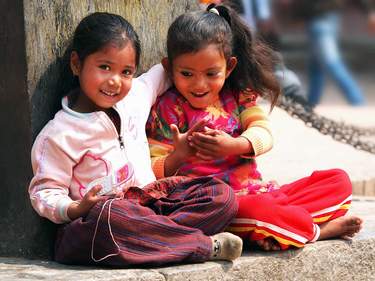
13 days / from 1950 USD
Himalayan Family Adventure
Experience Nepal's hill villages and jungle lowlands as you embark on a family-friendly adventure of a lifetime. Expect mini mountain treks, overnight camps, river rafting and wildlife safaris. Come here for action, stunning mountain scenery and a look around bustling Kathmandu too.

13 days / from 2200 USD
The UNESCO World Heritage Sites of Nepal
Set in the heart of the Himalayas, the landlocked South-Asian country of Nepal is home to a wealth of UNESCO World Heritage Sites. From wild jungles to ancient civilisations, Nepal offers a combination of history, culture and nature; perfect for the most well-seasoned of travellers.
Tailor-made trips for Nepal
Nepal’s cultural landscape is every bit as diverse as its physical one. Its peoples belong to a host of distinctive ethnic groups, and speak a host of languages. They live in everything from dense, ancient cities erupting with pagoda-roofed Hindu temples to villages perched on dizzying sweeps of rice-farming terraces and dusty highland settlements clustered around tiny monasteries. Religious practices range from Indian-style Hinduism to Tibetan Buddhism and from nature-worship to shamanism – the indigenous Newars, meanwhile, blend all these traditions with their own, intense tantric practices.
The cultural richness owes something to the shaping force of the landscape itself, and something else to the fact that it was never colonized. This is a country with profound national or ethnic pride, an astounding flair for festivals and pageantry and a powerful attachment to traditional ways. Its people famously display a charismatic blend of independent-mindedness and friendliness, toughness and courtesy – qualities that, through the reputations of Gurkha soldiers and Sherpa climbers in particular, have made them internationally renowned as people it’s a rare pleasure to work with or travel among.
But it would be misleading to portray Nepal as a fabled Shangri-la. Heavily reliant on its superpower neighbours, Nepal was, until 1990, the world’s last remaining absolute Hindu monarchy, run by a regime that combined China’s repressiveness and India’s bureaucracy. Long politically and economically backward, it has developed at uncomfortable speed in some areas while stagnating in others. Following a soul-scouring Maoist insurgency, which ended in 2006, it has ended up as a federal republic – governed, for the time at least, by Maoist rebels turned politicians. Nepal seems always to be racing to catch up with history, and the sense of political excitement in the country is thrillingly palpable.
Nepal’s capital, Kathmandu, is electrifyingly exotic, with its medieval warren of alleys, Hindu temples and Buddhist stupas, and its uniquely relaxed nightlife. The city is increasingly hectic, however, so many visitors make day-trips into the semi-rural Kathmandu Valley, and the astoundingly well-preserved medieval cities of Patan and Bhaktapur, or overnight at one of the mountain view-points on the valley rim, such as Nagarkot, in the Central Hills. A few explore the valley’s wealth of temples, towns and forested hilltops in more depth, or make road trips to the Tibet border or down the tortuous Tribhuwan Rajpath towards India. Most people will take the tourist bus six hours west of Kathmandu to Pokhara, an engagingly easygoing resort town in the Western Hills, set beside a lake and under a towering wall of white peaks. While many visitors are happy just to gaze at Pokhara’s views, or hang out in its bars, it also makes a great base for day-hikes and mountain-bike rides, yoga and meditation courses, and even paragliding and microlight flights. Other towns in the Western Hills – notably Gorkha with its impressive fortress, Manakamana with its wish-fulfilling temple, and Bandipur with its old-world bazaar – offer history and culture as well as scenery.

Few travellers head into the flat Terai, along the border with India, unless it’s to enter the deservedly popular Chitwan National Park with its endangered Asian one-horned rhinos. Bardia National Park and two other rarely visited wildlife reserves are out there for the more adventurous. In the Western Terai Lumbini, Buddha’s birthplace, is a world-class pilgrimage site, as is Janakpur, a Hindu holy city in the east.
Nepal is most renowned, however, for trekking – hiking from village to village, through massive hills and lush rhododendron forests and up to the peaks and glaciers of the high Himalayas. The thrillingly beautiful and culturally rich Annapurna and Everest regions are the most oriented to trekkers, but other, once-remote areas are opening up, notably Mustang and Manaslu. Rafting down Nepal’s rivers and mountain biking, meanwhile, offer not only adventure but also a different perspective on the countryside and wildlife.
Top image: Boudhanath stupa, one of the largest spherical stupas in in Kathmandu, Nepal © Happy Poppy/Shutterstock
Discover more places in Nepal

- The Eastern Terai and hills Travel Guide
- The Kathmandu Valley Travel Guide
- The Western Hills Travel Guide
- The Western Terai Travel Guide
- Trekking Travel Guide
To make a Tibetan carpet , typically Tibetan wool – from sheep bred for their unusually long, high-tensile wool – is blended with foreign processed wool. Once it is spun into yarn, much of the spinning is still done by hand, producing a distinctive, slightly irregular look. It is then dyed and rolled into balls. Tibetan-style carpets are produced by the cut-loop method, which bears little relation to the process employed by Middle Eastern and Chinese artisans. Rather than tying thousands of individual knots, the weaver loops the yarn in and out of the vertical warp threads and around a horizontally placed rod; when the row is finished, the weaver draws a knife across the loops, freeing the rod. Once the weaving is finished, the carpets are trimmed to give an even finish, in some cases embossed and then washed (an industrial process which pollutes local streams with chemicals linked with birth defects). Most carpets are made-to-order for the export market, with distribution controlled by a small collection of traders. Prices vary widely: at the bottom end expect to pay around $50 per square metre; top-of-the-range carpets can be three times this, or even more. (Many Nepali producers also produce Afghan, Middle Eastern and Kashmiri-style carpets, though these are rarely as fine as the originals.)
A uniquely Nepali institution found in every hill village, the chautaara is a resting place that serves important social and religious functions. The standard design consists of a rectangular flagstoned platform, built at just the right height for porters easily to set down their doko , or basket, while two trees provide shade.
Chautaara are erected and maintained by individuals as an act of public service, often to earn religious merit or in memory of a deceased parent. Commonly they’ll be found on sites associated with pre-Hindu nature deities, often indicated by stones smeared with red abhir and yellow keshori powder. The trees, too, are considered sacred. Invariably, one will be a pipal , whose Latin name ( Ficus religiosa ) recalls its role as the bodhi tree under which the Buddha attained enlightenment. Nepalis regard the pipal, with its heart-shaped leaves, as a female symbol and incarnation of Lakshmi, and women will sometimes fast and pray for children in front of one. It’s said that no one can tell a lie under the shade of a pipal, which makes the trees doubly useful for village assemblies. Its “husband”, representing Shiva Mahadev, is the bar or banyan ( Ficus bengalensis ), another member of the fig genus, which sends down Tarzan-vine-like aerial roots which, if not pruned, will eventually take root and establish satellite trunks. A chautaara is incomplete without the pair; occasionally you’ll see one with a single tree, but sooner or later someone will get around to planting the other.
• With a land area of 147,000 square kilometres, Nepal is about the size of England and Wales combined. Useable land, however, is in short supply due to the precipitous terrain and a growing population of 27 million or more, over a third of which is less than 15 years old.
• Eight of the world’s ten highest mountains are found in Nepal, including Everest, the tallest of them all.
• Prior to 1951, only a handful of Westerners had ever been allowed into Nepal. Today, the country receives as many as 500,000 tourists annually; increasingly they are coming from neighbouring India and China.
• Despite the fame of its Tibetan and Sherpa Buddhist communities, Nepal was long the world’s only Hindu kingdom, and Hindus still officially make up some eighty percent of the population. In truth, many Nepalis combine worship of Hindu gods with shamanic and animist practices.
• The decade-long Maoist insurgency ended in 2006, along with the career of the notorious King Gyanendra. Nepal‘s politics are now noisily turbulent but peaceful.
• With an average per-capita annual income of US$470, Nepal ranked 157th out of 186 countries in the UN’s 2011 Human Development Index. Half the population survives on little more than a dollar a day.
Nepal may be defined by the Himalayas, but it is much more than just mountains. The heartland is defined by the pahad , or middle hills, a wide belt running east–west along the length of the country, characterized by massive slopes and steep-sided valleys, and populated by rustic villages set amid terraced fields. The valley cities of Kathmandu and Pokhara are exceptions in these giant-scale hills, where the biggest stretch of flat land for miles around may well be the school volleyball court. Nepal’s southernmost strip is the Terai , a swathe of hot, flat farmland, with areas of jungle preserved in a trio of national parks. Culturally as well as geographically, the Terai forms part of the Gangetic Plain of northern India. As for the Himalayan chain , it guards the northern frontier, broken into a series of himal (snow-covered mountain ranges) and alpine valleys. Pockets of high, dry terrain lie in the rain shadow in the northwestern part of the country, extensions of the great Tibetan plateau . Cutting north–south across the grain of the land, meanwhile, are the country’s great, roaring rivers , laden with glacial minerals and sediment. The largest actually cut right through the Himalayan chain, with their sources in Tibet.
Nepal has a multitude of traditional and progressive disciplines, and though the country can seem something of a spiritual supermarket, its tolerant atmosphere makes it a great place to challenge your assumptions and study other systems of thought.
The past 25 years have seen an explosion of outfits teaching yoga and meditation to both foreigners and locals. The allied health fields of ayurvedic and Tibetan medicine are also an attraction for many travellers to Nepal. Many programmes don’t require a lengthy commitment, although any residential courses are worth booking well in advance.
Yoga is more than just exercises – it’s a system of spiritual, mental and physical self-discipline, designed to unify the individual’s consciousness with the universe. Techniques include Karma yoga (basically altruism), Bhakti yoga (devotion, recognizable by the chanting) and Jnana yoga (deep meditation, best practised only after mastering one of the other kinds).
What most westerners would recognize as yoga springs from Raja yoga , probably formulated around 600 BC. It has eight astanga , or limbs (not to be confused with the yoga style with the same name), each a step to realization. Three of these have a physical emphasis, and it is from this root that yoga’s reputation for pretzel poses and headstands comes. Whatever the name of a particular variation, be it Bikram, Kundalini, or Ashtanga, all types of yoga that use asanas (or positions) as an aid to developing the self are generally referred to as hatha yoga.
Most practices also include Pranayam – breathing exercises. You’ll find several kinds in Nepal, including the Sivanand school (a slow style with asanas and lots of spiritual guidance), Iyengar (a very exacting school that uses some props and focuses on alignment) and practices that follow particular gurus from India, usually including elements of Raja, Bhakti and Karma yoga.
Meditation is closely related to yoga, and the two often overlap: much of yoga involves meditation, and Buddhist meditation draws on many Hindu yogic practices. However, meditation centres in Nepal generally follow the Tibetan Buddhist tradition.
Buddhist meditation is a science of mind. To Buddhists, mind is the cause of confusion and ego, and the aim of meditation is to transcend these. Vipassana (“insight”) is the kernel of all forms of Buddhist meditation; related to hatha yoga, it emphasizes the minute observation of physical sensations and mental processes to achieve a clear understanding of mind. Another basic practice common to most schools of Buddhism, shamatha (“calm abiding”) attunes and sharpens the mind by means of coming back again and again to a meditative discipline. Several centres in the Kathmandu Valley run rigorous residential courses in this practice.
Tibetan Buddhist centres start students out with vipassana and shamatha as the foundation for a large armoury of meditation practices. An “adept” (novice) will cultivate Buddha-like qualities through visualization techniques – meditating on the deity that manifests a particular quality, while chanting the mantra and performing the mudra (hand gesture) associated with that deity. The Tibetan Buddhist path also involves numerous rituals, such as prayer, offerings, circumambulation and other meritorious acts; committed followers will take vows, too. Kathmandu has several centres offering introductory courses.
A big part of Tibetan Buddhism is the teacher-disciple relationship . More advanced students of the dharma will want to study under one of the lamas at Boudha , some of whom give discourses in English.
Ayurveda (often spelled “ayurved”) is the oldest school of medicine still practised. It is a holistic system that assumes the fundamental sameness of self and nature. Unlike the allopathic medicine of the West, which identifies what ails you and then kills it, ayurveda looks at the whole patient: disease is regarded as a symptom of imbalance, so it’s the imbalance that’s treated, not the disease.
To diagnose an imbalance, the ayurvedic doctor investigates the physical complaint but also family background, daily habits and emotional traits. Treatment is typically with inexpensive herbal remedies designed to alter whichever of the three forces is out of whack. In addition, the doctor may prescribe some yogic cleansing to rid the body of waste substances.
You’ll find ayurvedic doctors and clinics throughout the Hindu parts of Nepal, but those who are able to deal with foreigners are confined mainly to Kathmandu.
Medicine is one of the traditional branches of study for Tibetan Buddhist monks. Like ayurveda, from which it derives, Tibetan medicine promotes health by maintaining the correct balance of three humours: beken , phlegm, which when out of balance is responsible for disorders of the upper body; tiba , heat or bile, associated with intestinal diseases; and lung , meaning wind, which may produce nervousness or depression.
Nepali massage is a deep treatment that works mainly on the joints. It’s not all that relaxing, but it can be just the job after a trek. Nepalis themselves rarely receive massages after the age of about three, but numerous masseurs ply their services to foreigners. Many practitioners also offer shiatsu, Swedish or Thai massage, reflexology and so on. Others, especially in Thamel, are actually (or additionally) offering sexual services; the best advice is that if it looks or feels dodgy, it probably is.
A good thangka is the product of hundreds – or even thousands – of hours of painstaking work. A cotton canvas is first stretched across a frame and burnished to a smooth surface that will take the finest detail. The design is next drawn or traced in pencil; there is little room for deviation from accepted styles, for a thangka is an expression of religious truths, not an opportunity for artistic licence. Large areas of colour are then blocked in, often by an apprentice, and finally the master painter will take over, breathing life into the figure with lining, stippling, facial features, shading and, finally, the eyes of the main figure. Thangka can be grouped into four main genres. The Wheel of Life , perhaps the most common, places life and all its delusions inside a circle held firmly in the clutches of red-faced Yama, god of death. A second standard image is the Buddha’s life story . Many thangka feature tantric deities , either benign or menacing; such images serve as meditation tools in visualization techniques. Mandala (mystical diagrams) are also used in meditation. That’s just the tip of the iceberg. A full exposition of thangka iconography would fill volumes – ask a dealer or artist to lead you through a few images step by step, or visit somewhere like the Tsering Art School in Boudha to find out more.
In most parts of the country, women will be of interest mainly as foreigners rather than for their gender, but a few specific tips are given below.
For women travellers, most parts of Nepal are relatively easy: the atmosphere is tolerant and inquisitive rather than threatening or dangerous. Nepali society is on the whole chaste, almost prudish; men are mostly respectful to foreign women. Sexual harassment is unlikely to upset your travels: you might get staring and catcalling or a rare attempt to cop a feel in a crowd, but it’s not as bad as in India, or indeed most of the rest of the world, and seldom goes any further than words. The chief danger comes from the rare predatory trekking guide (see Sexual politics in the mountains).
Wearing revealing clothing will up the chances of receiving unwelcome advances. That doesn’t mean you have to wear Nepali clothes, though it may help – consider covering legs and breasts (and shoulders) and avoiding skin-tight garments.
A woman travelling or trekking alone won’t be hassled so much as pitied. Going alone ( eklai ) is most un-Nepali behaviour. Locals (of both sexes) will ask if you haven’t got a husband – usually out of genuine concern, not as a come-on. Teaming up with another female stops the comments as effectively as being with a man. If you find yourself on a public bus, you can make your way to the front compartment, where preference is usually given to women and children.
Terai cities and border towns are another matter, unfortunately. As in North India, misconceptions about Western women mean men may try for a surreptitious grope or even expose themselves. Travelling with a man generally shields you from this sort of behaviour. Don’t be afraid to make a public scene in the event of an untoward advance – that’s what a Nepali woman would do.
Of course, you may want to strike up a relationship with a Nepali man . There’s a long tradition of women travellers falling for trekking or rafting guides and Kathmandu has a small but growing community of women who have married and settled. However, Nepali men are not without their own agendas: exotic romance, conquest, perhaps even a ticket out of Nepal. Be aware also that many Nepali men use the services of sex workers and that HIV/AIDS is a growing and largely concealed problem.
A frustrating aspect of travelling in Nepal is the difficulty of making contact with Nepali women . Tourism is still controlled by men; women are expected to spend their time in the home, get fewer educational opportunities and speak much less English. If you’re lucky enough to be invited to a Nepali home for a meal, chances are the women of the house will remain in the kitchen while you eat. Upper-class women, who may even work with foreigners, are often well educated and free of these restrictions, but they have few encounters with travellers.
Sexual politics are different among highland ethnic groups . Along trekking routes, many women run teahouses single-handedly while their husbands are off guiding or portering. Proud, enterprising and flamboyant, these “ didis ” are some of the most wonderful people you’re likely to meet anywhere. There are a few female trekking guides now, too.
Travel advice for Nepal
From travel safety to visa requirements, discover the best tips for traveling to Nepal
- Culture and Etiquette in Nepal
- Eating and drinking in Nepal
- Getting around Nepal: Transportation Tips
- Travel Health Nepal
- Travel Tips Nepal for planning and on the go
- How to get to Nepal
- Best time to visit Nepal
The Rough Guides to Nepal and related travel guides
In-depth, easy-to-use travel guides filled with expert advice.

Find even more inspiration here

Planning your own trip? Prepare for your trip
Use Rough Guides' trusted partners for great rates
written by Rough Guides Editors
updated 26.04.2021
Ready to travel and discover Nepal?
Get support from our local experts for stress-free planning & worry-free travels.
- Where to stay
- Travel advice

- DESTINATIONS
- EXPERIENCES

Two Months in Nepal: Incredible Culture, Nature and Wildlife
My recent trip to Nepal wasn’t my first time visiting this amazing country. My first visit was back in 2014 with a friend of mine. We traveled around for two weeks. One year later I went back with my boyfriend on an incredible two month Nepal travel itinerary.
I was so impressed by the beauty of this country and the kindness of the people, that I wanted to show him what I experienced the first time. Our first impression wasn’t the best one because arriving in Kathmandu means arriving in an extremely dusty and noisy city. But after a few visits, I have learned to love Kathmandu and all its craziness.
Seeing the mighty Himalayas for the first time is something that grabs you. It’s huge and so extremely impressive. If you fly to Kathmandu during the daytime, be sure to sit on the right side of the plane (left if you fly from Europe/Middle-East). Just sit and enjoy the view.
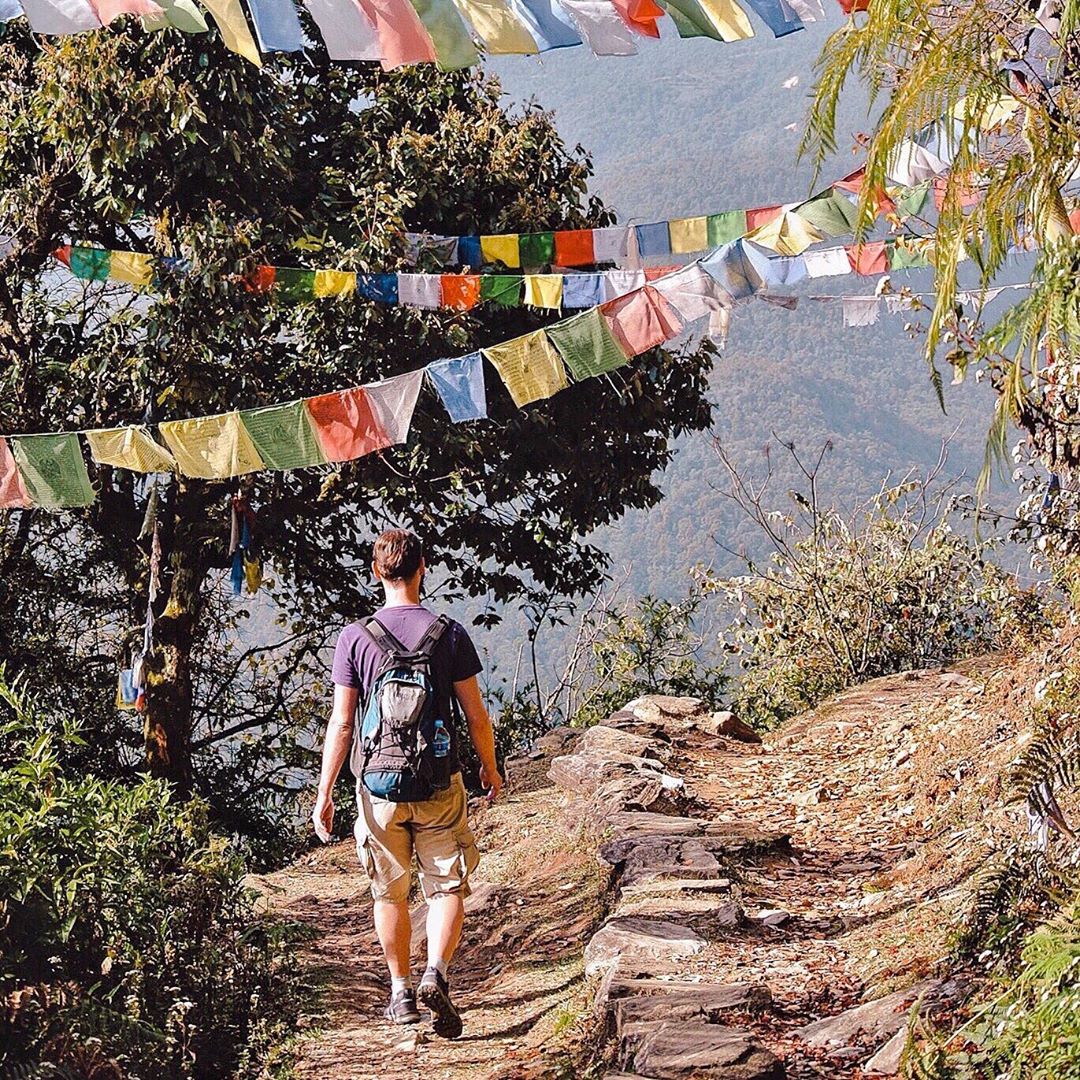
Nepal Travel Itinerary: Our Two Month Journey
If you are looking to design your Nepal travel itinerary then have a read of our incredible journey. Our recent trip was a two month journey from the Kathmandu Valley to the far west of Nepal. We started our trip in one of our favorite ancient cities Bhaktapur . From there we explored the Kathmandu Valley: Panauti, Patan and the old city of Kathmandu.
After two weeks we took the bus to Bandipur to celebrate Dashain , the most important festival in Nepal. It was a great and authentic experience.
On our way to one of Nepal’s most touristic destinations, Pokhara , we first made a stop at Lake Begnas. This lake isn’t very popular, but it’s incredibly beautiful. We made some amazing hikes over here.
After Lake Begnas we went to Pokhara where we stayed for two weeks. We loved this place and for us it was the perfect spot to take a little break and to work a little. Pokhara has a lot of nice bars and restaurants and the surroundings are stunning.
From Pokhara we traveled to Bardia National Park . On the way we took a two day break in Tansen because otherwise it would have been a long and uncomfortable ride. In Bardia National Park we tried to spot tigers in the wild. Unfortunately we didn’t see any, but we did see a rhino, many deer and some beautiful birds.
In Bardia we did a five day tour to the far west. We visited Tharu villages which hardly see any tourists and made a jeep safari in the lesser known Shuklaphanta National Park. Sleeping in a treehouse in Bardia’s buffer zone was an incredible experience.
After Bardia National Park we took the bus to one of our all time favorite national parks in the world, Chitwan National Park . Chitwan is a great place for wildlife spotting, especially for rhino. From Chitwan we travelled back to Kathmandu, from where we flew onwards to Thailand.
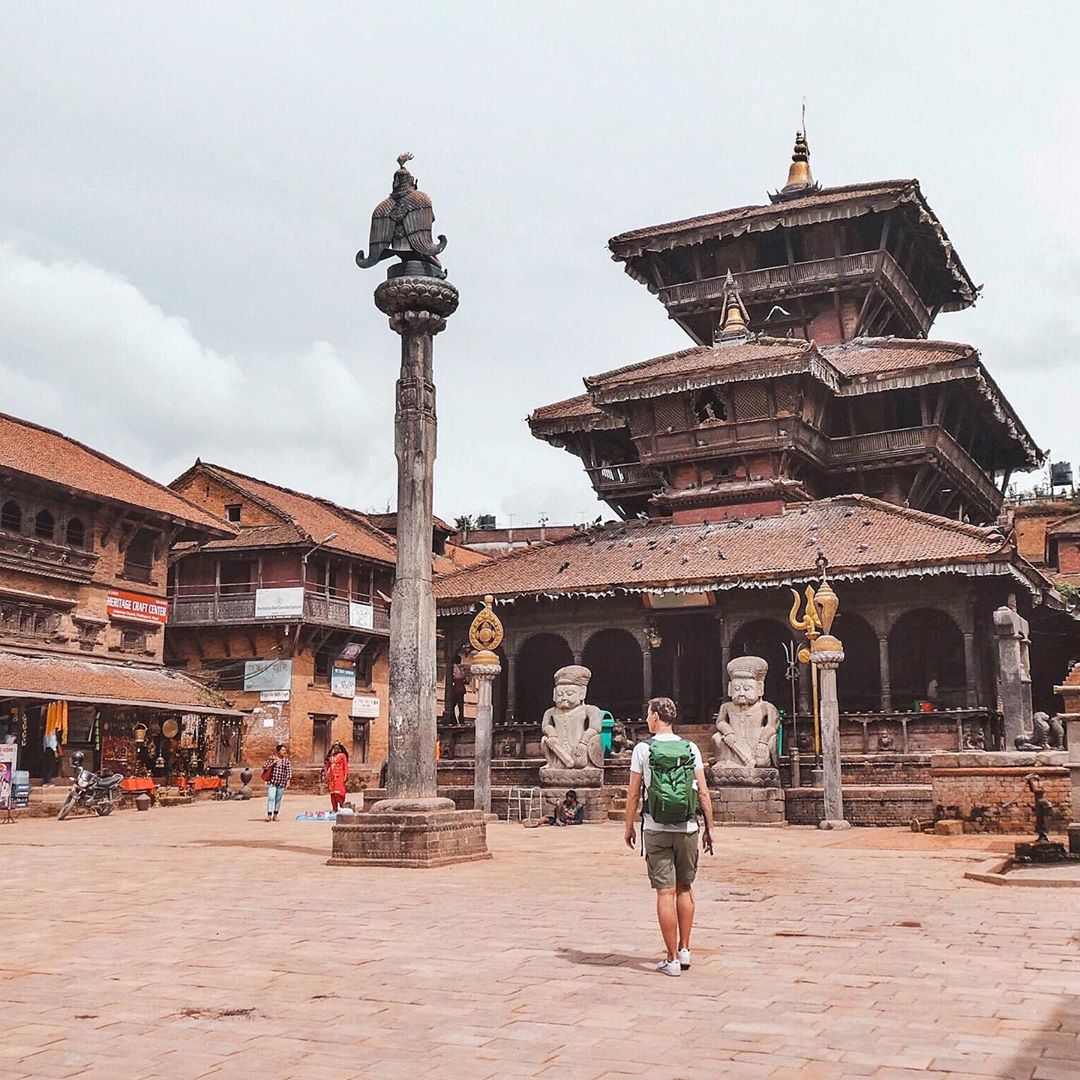
Best Destinations and Experiences in Nepal
Chitwan was my favorite place when it comes to wildlife spotting in Nepal. We also enjoyed the unknown Shuklaphanta National Park which surprised us big time. There were no tourists at all and we saw many wild animals like swamp deers, blue bulls and even a leopard. We also saw fresh tiger and rhino tracks.
Spotting a tiger in Chitwan National Park was by far my favourite memory of Nepal. We are huge wildlife lovers and seeing a tiger in Nepal was like a dream come true. It’s way harder than spotting tigers in India. We had to sit and wait for hours for two days straight. The moment the tiger finally appeared was so exciting and so extremely special.
Another great place was Lake Begnas. It’s a lesser known destination than the nearby Lake Phewa in Pokhara, but it’s equally as beautiful. On a clear day you have an amazing view of the Himalayas and it’s a great place to go hiking. I totally recommended staying here for a few nights.
Then there is Patan. I never visited this place before and I have truly no idea why. This ancient city can’t be missed when traveling through Nepal . It’s simply too beautiful.
If you want to experience the culture of Nepal I recommend these three ancient cities in the Kathmandu Valley: Patan, Bhaktapur and Kathmandu. I recommend to visit them all (if you have the time). They’re totally worth it and they give you a great impression of the Newari history.
Another spot that can’t be missed when visiting Kathmandu is the Boudhanath Stupa. It’s the biggest stupa in Nepal and the most important place for Buddhists in Kathmandu. It’s such a beautiful place. Take your time visiting this area. You’ll definitely love it.
Overall Nepal is an awesome cultural destination with a lot to explore. Step off the beaten track and visit some Tharu villages in the Western Terai or head to one of my favorite villages in Nepal, Bandipur. It will give you a great authentic experience.
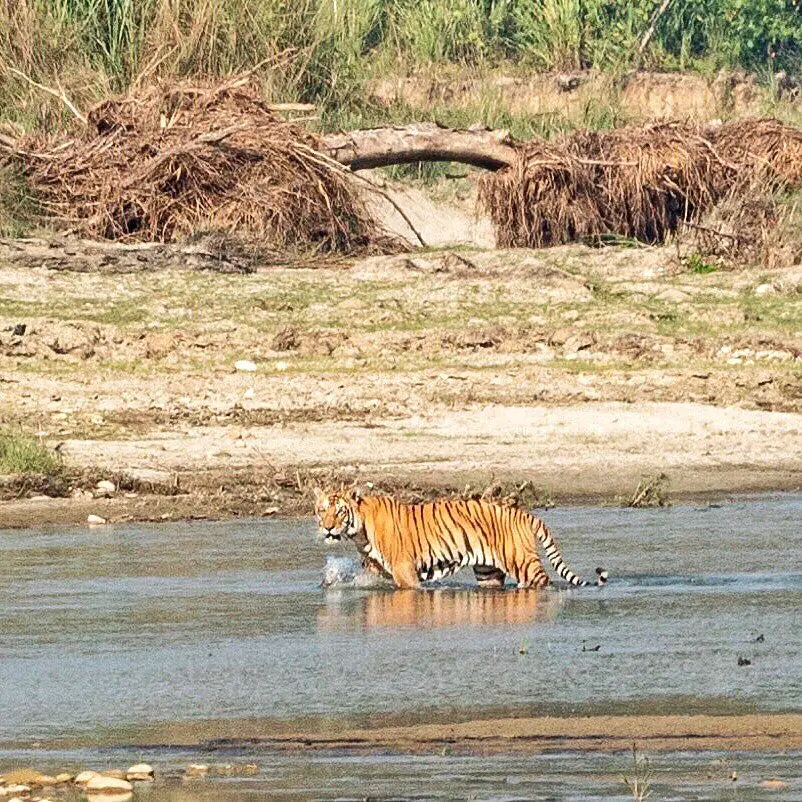
The Amazing People and Food of Nepal
The Nepali people are truly the most genuine people I’ve met during our travels. I just love them! They are super friendly, polite and always in for a little chat. Even when you visit places that hardly see any tourists, people are smiling and waving and giving you a friendly ‘namaste’.
In Nepal the people eat a lot of Dal Bhat, a cooked lentil soup with steamed rice and potato curry. It’s not my favorite dish in the world but it’s quite nice. What I do love are the Nepali momo’s , steamed or fried dumplings filled with vegetables or meat. My favorite are the steamed ones filled with cheese, tomato and onion. They’re so delicious!
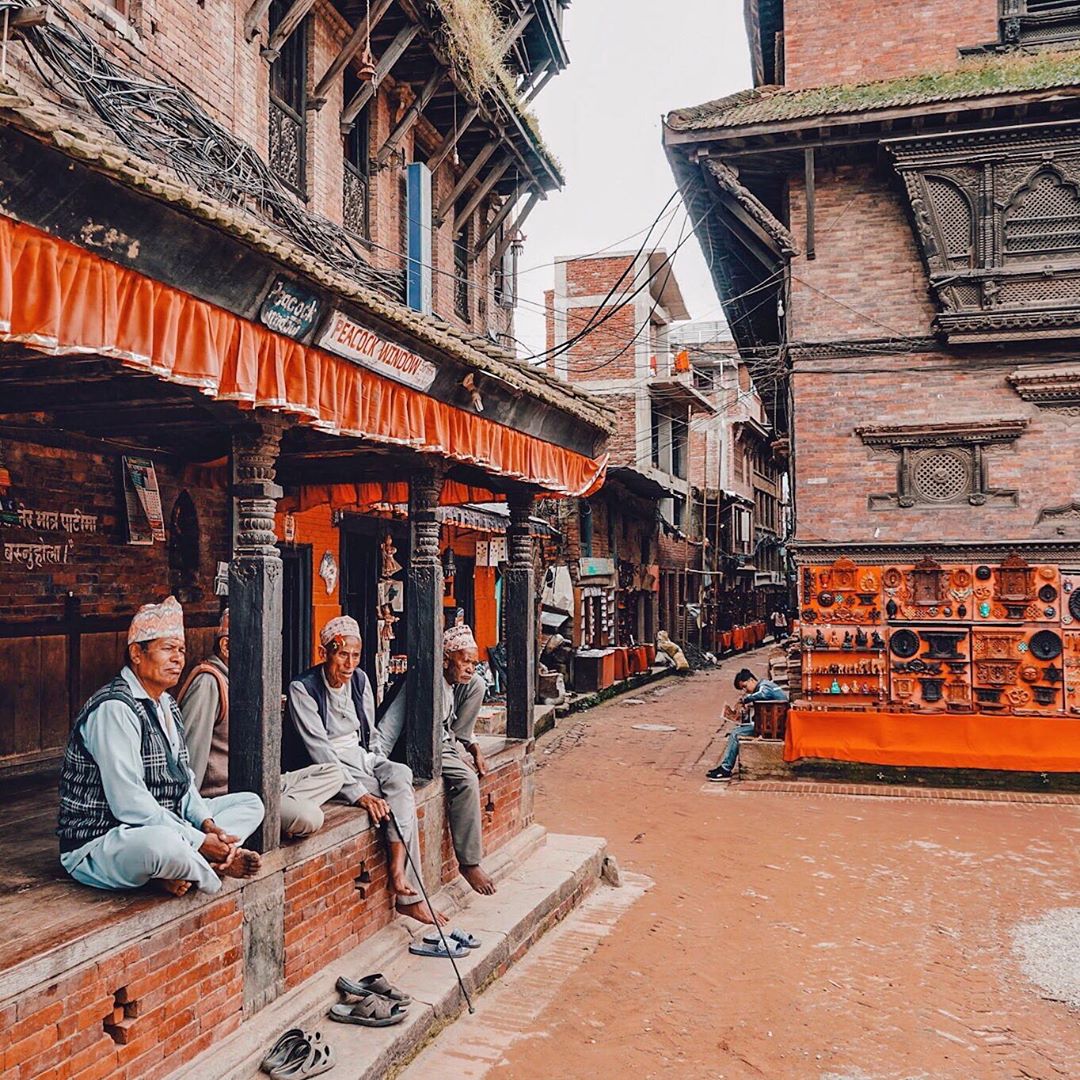
Tips for your Nepal Travel Itinerary
Nepal is an outstanding hiking destination but definitely not just a hiking destination. During our trip literally everyone asked us which trek we did and we almost felt ashamed that we had to admit that we just did some day hikes, nothing really adventurous.
For us Nepal is one of the best destinations in Asia to see wildlife and that was one of the reasons we came back. I recommend every traveler to at least visit Chitwan National Park. This park is easily accessible from Kathmandu and Pokhara and it’s the best place to spot rhino in the wild.
Traveling through Nepal can sometimes be a little challenging. The roads are pretty bad and it takes time to travel from one destination to another, especially when traveling with local transport. But between the main tourist spots you can always take a tourist bus which are more comfortable and not bad at all.
Nepal is a destination that should be on every traveler’s bucket list . It such a unique destination and the only way to experience it is to book that ticket and go! I can promise you, you won’t regret it. Thanks for reading about my two months in Nepal. I hope it has given you some inspiration to help you design your perfect Nepal travel itinerary!
About Me: Sigrid – My Travel Secret
Hi, my name is Sigrid. I grew up in a little town in the south of the Netherlands . When I was seven years old my parents adopted a little girl from Sri Lanka and since she came into my life I was fascinated by countries in the far east.
Ten years ago my boyfriend and I started to go backpacking through Southeast Asia and ever since we were hooked. Over the years we have visited so many incredible places, mostly in Asia, but also in Europe and Central America .
We love to be on the road and to explore new cultures and destinations. Five years ago I started my travel blog and Instagram account and exactly one year ago we both quit our jobs to start traveling full time. There are still so many places on our never ending bucket list!
BY SIGRID – MY TRAVEL SECRET IG: @MYTRAVELSECRET WWW.MYTRAVELSECRET.NL
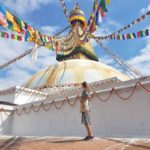
Author: Sigrid - My Travel Secret
My name is Sigrid. I work as a veterinary assistant in my daily life and in my free time I am mainly busy with planning my next trip and gaining travel inspiration. Together with my boyfriend I travel as much as possible. We love beautiful nature, spotting wildlife and we prefer to look for places that are not (yet) flooded with tourists.
Related posts

Leave a Reply Cancel reply
Your email address will not be published. Required fields are marked *
Save my name, email, and website in this browser for the next time I comment.
Post comment
Travel experiences
Accommodation.
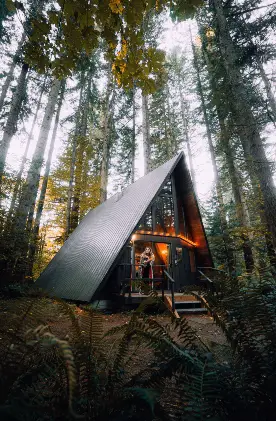
Beaches & Islands
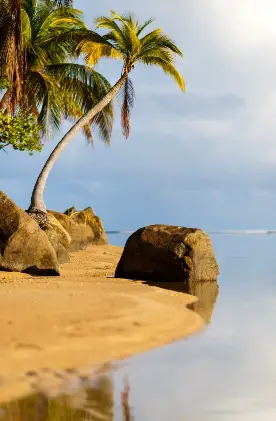
Food & Drink
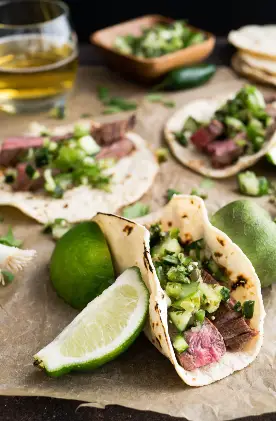
Historical Sites
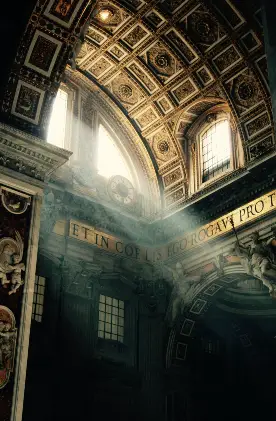
Living Abroad
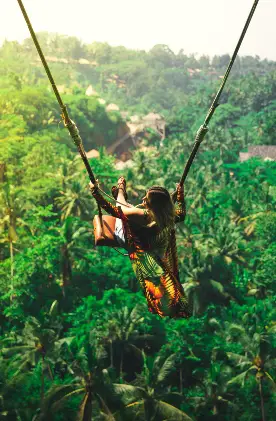
National Parks
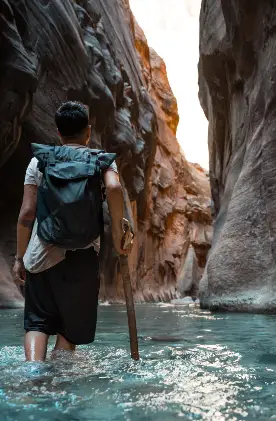
Towns & Villages
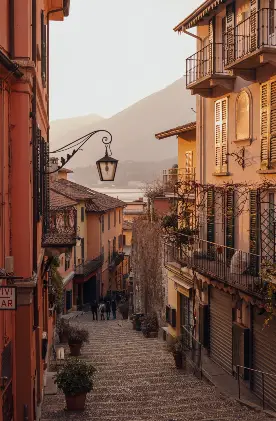
Travel Tips
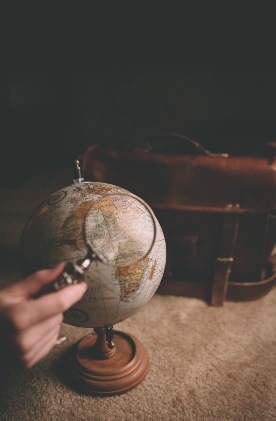
Sign up to our newsletter
- Tours >
- Destinations >
- Asia Itineraries >
Nepal Itineraries
Now you can find, compare, and share trips from 1,000+ operators and expert trip planners. Unlike most travel agencies and websites that only show options from large companies that pay big commissions, we show you all the options we can gather, and we’re adding more all the time. We want you to have all the available information to find your perfect trip, no matter who it’s with. Whether you’re looking for a short weekend getaway or a multi-country expedition, you can find it on Travelstride. About us.

...to foster a community connecting travelers to wonderful places, people, & experiences. Learn more.
Nepal in 1 Week
Nepal Trekking in 2 Weeks
Top Nepal Travel Packages
Nepal in 7-10 days, nepal in 1 week - first time visit.
With one week, you can embark on a sensory adventure through Nepal’s most vibrant cities, explore awe-filled temples and monasteries, and take in the splendor of the Himalayas.
Day 1, Kathmandu : Explore the delicious restaurants, cozy coffee shops, fantastic shopping, and friendly international vibe of Thamel, a colorful tourist-focused neighborhood on the west side of downtown Kathmandu. Take a rickshaw ride to nearby Durbar Square, where you can get a glimpse into the history of the Nepalese monarchy.
Day 2, Bhaktapur : Ten miles west of Kathmandu, the ancient city of Bhaktapur is a wonderful place to soak up some Nepalese culture. A hub for traditional crafts and art, this city also has a beautiful open market and some of the country’s most celebrated architecture. Walk along the wooded path to Suryabinyak, a Hindu temple outside of town that can only be reached on foot.
Day 3, Mount Everest : Skip the arduous, 9+ day hike to Everest Base Camp and hop onto a sightseeing flight to behold the beauty of the mighty Himalayas from the comfort of a seat in the sky. Flights are about an hour long, and a window seat is guaranteed. Morning flights leave the rest of the day free to further explore Kathmandu’s restaurants, temples, and museums.
Days 4-5, Chitwan National Park : Board a 20-minute flight from Kathmandu to Bharatpur, your jumping-off point for exploring the wildlife in Chitwan National Park. One-horned rhinos, Bengal tigers (elusive, but sometimes spotted by park visitors), and hundreds of other colorful species await you during your safari through this tropical hotspot for biodiversity.
Days 6-7, Pokhara : One more 20-minute flight delivers you to Pokhara, a celebrated city known for its access to some of Nepal’s best outdoor activities. Paddle a canoe across a lake, splash through a river in a whitewater raft, or hike through the Himalayan foothills to get up-close-and-personal views of the Himalayas on the northern horizon. Between adventures, visit Pokhara’s restaurants to fill your belly with traditional Nepalese foods like dhal bat (lentil stew) and momos (decadent dumplings).
See all 1 Week Nepal Tours »
Nepal in 2 Weeks - Trekking
Two weeks in Nepal allows enough time for a multi-day trek through the Himalayas, as well as a few days to explore the sights, smells, and tastes of Kathmandu and/or Pokhara.
Day 1, Kathmandu : Eat and shop in Thamel, picking up any clothing or supplies you’ll need for your high-altitude adventure during the next week.
Days 2-12, Trekking : Choose from 10-day trekking routes near Everest, Annapurna, or Langtang, all of which offer stunning explorations into the world’s most formidable mountain range.
Days 13-14, Kathmandu or Pokhara : Take your pick between Kathmandu and Pokhara to decompress from your alpine adventure. Daily flights between the two cities are only 20 minutes long.
See all 2 Week Trekking Tours in Nepal »
Travelstride featured in
Unlock Community Benefits
- Save favorite trips and itineraries
- Get insider insights
- Receive personalized recommendations ...and much more
Top Nepal Tours See all

Want a tailor-made trip instead?
- You choose budget, destinations, activities, transport & lodging type
- Expert designs the itinerary for you, and once approved, takes care of logistics
Nepal Tours Reviews & Ratings
Related categories.
- China tours
- Hiking & Walking tours
- Wildlife tours
- Trekking & Expeditions tours
- India tours
- Festivals & Special Events tours
- Climbing & Mountaineering tours
- Adventure tours
- River Rafting tours
- Private Guided tours
- Custom tours
Top Nepal Tour Companies
- Insight Vacations Reviews
- Exodus Travels Reviews
- Explore! Reviews
- G Adventures Reviews
- Intrepid Travel Reviews
- Trafalgar Reviews
- Outfitter Nepal Reviews
- Himalayan Sanctuary Adventure Reviews
- Exoticca Reviews
- Contiki Reviews
- Project Expedition Reviews
- Topdeck Reviews
- TruTravels Reviews
- Turban Adventures Reviews
- Epic Adventures Reviews
- SITA World Tours Reviews
- Travel Talk Reviews
- Global Basecamps Reviews
Why Travelstride
Click to send a new magic link to your inbox.
Welcome back!
By signing in, you agree to our Privacy Policy and Terms of Use
- Bookmark trips you like
- Share with your travel companions
- Track price changes
- Access private discounts on trips you save
TripFinder is a member-only feature. Dont worry, its free!
With a membership you:
- Save up to $700 per person!*
- Access private deals and offers
- See personalized trip recommendations
- Save favorite trips
Just use the email address and password provided in the email we sent.
With your free membership you:

What are you looking for?
Our ultimate 3 week nepal itinerary: the best places in 2024.
Nepal was the last country on our 3 month stint travelling through Asia in 2018.
After 3 weeks in India and 3 weeks in Sri Lanka , we were excited to visit the homeland of the infamous Himalayan mountain range and, of course, Mount Everest.
As well as this, it was a pleasant break from the heat of the south and we were eagerly awaiting the cool, clean mountain air of Nepal.
But with limited time to explore the country, we had to plan our trip carefully and design a 3 week Nepal itinerary that allowed us to visit all of Nepal's most famous areas, as well as provide a potential opportunity to go hiking in the Himalayas.
Well, after 3 weeks in Nepal, I can safely say that we achieved all of our aims in designing a route that allowed us to see everything we wanted … and more!
So sit back, relax and dig into the perfect 3 week backpacking route around Nepal .
Travellerspoint
A quick bit about Nepalese visas
Like most countries in Asia, Nepal requires tourists to secure a visa before being allowed into the country.
For us, and most people, this means flying into Kathmandu airport and filling out a visa upon arrival.
When you enter the arrivals building in the airport, the entire layout is actually very confusing.
But, there is a 3 step process to follow.
- Keep walking through until you discover the table containing thousands of small white forms. You will need to fill one of these out first of all. It is possible to fill out the bigger form, but to do so you need a photo. We actually wasted 5 minutes filling these big forms out unnecessarily because it is so unclear as to what you should be doing in there!
- After you fill out the small form, keep heading forward where, on the left, you will see 4 or 5 machines. Wait in the queue and, when it's your turn, you will need to re-input all of your details into this and then have your picture taken.
- Once done, it will print out a slip. Take this and your original form and head to the ticketing counters straight ahead and pay your fee. Afterwards, you can go to one of the official desks where your passport is stamped and you are free to enter Nepal.
A quick word of warning …
Through the website claims that they take most major currencies, it is actually illegal to use Indian Rupees in the airport.
We arrived with the necessary sum in Indian rupees after an official at the airport in Delhi assured us this was ok.
Well, it's not, and we were stuck with a whole bunch of worthless Indian currency.
Instead, we were able to use our card to pay.
It was $USD40 each and this is for a one month visa.
For up to date visa fees for all nationalities, check out the official page here .

The perfect 3 week Nepal itinerary circuit
We started our 3 week Nepal route in Kathmandu, as I imagine most people do.
This itinerary is slightly different from the exact one we took.
But I have tweaked it slightly because, after taking the direction we did, I think that this arrangement of stops and nights in each one makes the most sense.
Here’s a map of the ideal 3 week Nepal backpacking route ...

Stop 1: Kathmandu - 2 nights
There are quite a few temples and other religious sites to see in Kathmandu, so it’s worth taking a couple of nights here to explore them.
Also, after a presumably long flight here, it’s unlikely you're going to want to jump straight on a 8 hour bus and head to your first destination.
It’s a good city to get your bearings, book your bus tickets and see the sites.
Also, once you’re done exploring the rest of Nepal, Kathmandu will be the least appealing place to stay!
It’s highly polluted and incredibly busy, so it’s good to get it out of the way.
- Where we stayed in Kathmandu: Hotel Amaryllis

Stop 2: Pokhara - 3 nights
Pokhara turned out to be my favourite city in Nepal.
The best place to stay is in the outskirts of the city by Phewa lake.
Here, you will find tonnes of hotels and even more bars and restaurants all in a massive strip back from the lake.
You could stay here for a month and eat in another restaurant each night and, best of all, they are all so cheap.
There’s plenty to do in and around Pokhara, so I recommend taking one day to walk up to the Peace Pagoda , head out onto the lake and pursue the souvenir stalls all through town.
You can take another day for a day walk out to a popular local area like Sarangkot.
And another day could be spent doing something a little more high octane, such as white water rafting, taking a helicopter ride or paragliding near the Himalayas.
More importantly, Pokhara is the perfect landing point for heading out hiking into the Annapurna region.
- Where we stayed in Pokhara: Hotel Tulsi

Stop 3: Annapurna trek - 7 nights
The Annapurna region is a massively popular hiking spot in Nepal.
There are a total of 30 peaks that are above 6,000 metres high, with one being more than 8,000 metres.
Whilst in Pokhara, you’ll see perhaps 50 tour companies in town, all of which offer Annapurna hiking tours ranging from 2 days to 7 days and more.
The Annapurna Circuit is quite a popular route, but it takes up to 2 weeks and can, apparently, be very physically taxing.
In this 3 week Nepal itinerary, I’ve allowed for 7 days of hiking, but you could easily skip out one or two other stops if your main reason for visiting Nepal is hiking and you want to take a bit longer.

Stop 4: Lumbini - 2 nights
Once you’re done hiking, it’s time to head south to Lumbini.
This is an incredibly important spot in Nepal for one key reason: it's the birthplace of Buddha.
Every year it attracts thousands of international tourists and thousands more Buddhist pilgrims.
You’ll find a whole bunch of temples in Lumbini and there’s plenty to see in two days.
But it is also a nice place to relax for a night or more after your long, tiring time spent hiking further north.

Stop 5: Chitwan (Sauraha) - 3 nights
After leaving the cold mountainous Annapurna region just a few days before, you will feel like you’re in an entirely new country when in Chitwan!
It’s time to get the t-shirts and sunglasses out and bask in the sunlight.
To me, Chitwan seems like a small town that must have exploded in popularity in the last 5 or 10 years.
There is a main strip now filled with a good few dozen restaurants and cafes, not too unlike Pokhara.
But the most popular reason for going here is to explore the Chitwan National Park and try to spot a whole range of jungle animals; like leopards, elephants and rhinos.
As a side note, they do offer elephant riding and washing most mornings down by the lake.
We went there and were shocked by how many tourists still seem to think it’s OK to ride elephants ; all whilst a trainer is there stabbing the poor creatures in the side with a bullhook.
Alternatively, make the most of your time in Chitwan by booking onto a 2 or 3 day jungle safari, either by jeep or on foot.
- Where we stayed in Chitwan: Wild Horizons Guest House

Stop 6: Kathmandu - 1 night
After the long bus ride back from Chitwan, take it easy and relax.
There are no more long journeys ahead seeing as your final stop, Nagarkot, isn't very far from the city.
I recommend taking any time you have here to peruse the market streets in Thamel and pick up any souvenirs or gifts for friends and family back home.
It is entirely possible for you to skip this stop and as soon as you arrive back from Chitwan, book a taxi straight out to Nagarkot.

Stop 7: Nagarkot - 3 nights
As it’s only 1.5 hour drive away, this is a nice way to end your trip after a number of unpleasant bus journeys across the country.
We chose to get a taxi from Kathmandu to Nagarkot and, for reference, the fair going rate is 2500 rupees.
On our outward journey I managed to get it for 2000 rupees, but once we arrived I ended up paying 2500 instead.
Though it’s not massively far, the road out there is really awful and I felt the driver deserved the extra 500 rupees for his effort.
The last half of the road into Nagarkot is in almost complete disrepair.
Apparently, the government have been saying they will fix it for years now but, like most things in Nepal, it appears road construction runs very slowly.
But once you’re there you’ll feel like you’re in a world away from Kathmandu!
You are higher in the mountains, and you get wonderful views of the Himalayan mountain range.
On some clear days, you can also see Mount Everest far in the distance.
Well, that is of course, if you’re not us!
For the 2 nights we were there, there was mist all day long so we only got to see a couple of peaks.
Also, be aware that only the most expensive hotels in Nagarkot have heating. It is very, very, VERY cold (the climate is completely different to Chitwan)
But as long as you spend your day out hiking and enjoying the local trails, then you’ll be warm.
- Where we stayed in Nagarkot: Everest Window View
Total = 21 Nights = 3 Weeks

How do you get around Nepal?
You have a few different options when it comes to getting around Nepal. These include:
Buses are the most common and most affordable way to get to and from all of the spots listed above.
You can pick up affordable bus tickets in all major cities and, as long as it's not a peak season, you can usually get bus tickets all the way up until a day or 2 before leaving; at least in December this was the case.
Do be warned that the roads in Nepal are perhaps the worst we have seen anywhere in the world.
They are notoriously deadly and a number of buses do go over cliff edges every year. And it’s really no surprise when the drivers of the local tourist buses drive like lunatics.
It's not uncommon to see buses and cars overtaking each other on sharp bends with massive drops.
As such, make sure you book onto a trusted, high quality tourist bus, rather than local buses.
Finally, if like us you suffer from motion sickness, then take anti-sickness pills beforehand and prepare yourself, as the journeys in Nepal take twice as long as everywhere else; purely because of how winding and hilly all the roads are.
2. Private car
On the way from Chitwan to Kathmandu, we ended up hiring a private car to drive us.
This was because Cazzy had seriously injured her foot the day before and needed to get to a hospital to get it x-rayed; we figured a private car would be much quicker and less bumpy.
Which turned out to be true!
Instead of paying 800 rupees each, we paid 4,500 each for a modern, 4x4 vehicle that turned out to be very comfortable and about two hours quicker than bus.
So if money’s not an issue, then I would highly, highly, HIGHLY recommend this option.
Though we never took this mode of transport ourselves, there are a large number of small airports located all across Nepal.
Yes, it does cost a lot more money to fly, rather than drive from places like Kathmandu to Pokhara; however, it is a lot faster and more comfortable.
You can read more about internal air travel in Nepal in this article .

Planning the perfect 3 week Nepal itinerary for you
Though this 3 week itinerary through Nepal suited us well, it can, of course, be changed to suit your needs!
For example, if you are more interested in hiking and have no desire to see temples or monuments, then I recommend getting out of Kathmandu as fast as possible.
You could instead spend more time in Pokhara, doing a longer hike and also skip out on Lumbini.
There are plenty of other backpackers I know who would much rather spend a few nights more in Nagarkot, simply because it’s so quiet and peaceful and offers plenty of relaxing day hikes.
So before settling on your own 3 week Nepal itinerary, I recommend deciding exactly what it is you want to gain from your time in Nepal.
You can then adjust your duration in each place to suit you best and make the most of your limited time in this truly breathtaking country.
If you have any more questions or suggestions about places to visit in Nepal, then please do let me know below!
Also, be sure to check out:
- Our 90 Top Travel Tips!

Leave a comment
Let us know what you think.

5 million people can't be wrong

Nepal itinerary: how to spend one month in Nepal
This post helps you in planning your Nepal itinerary. Nepal is a unique and memorable country. Most people know Nepal because of the Himalayas. But the country has so much more to offer than mountains alone.
Its natural beauty is outstanding and much more diverse than you would think. From lush tropical jungles, rolling hills with terraced rice paddies, high-altitude deserts and frozen glaciers.
Any Nepal itinerary can include a wide range of outdoor activities, including trekking , hiking, white water rafting, and paragliding. It also offers a great opportunity for wildlife safari and birdwatching.
Nature is one of the main reasons to visit Nepal , but there is lots of culture as well. Nepal is a multicultural country with a rich history and cultural heritage, reflected in its many temples, shrines, monasteries, and palaces.

Your Nepal itinerary
Since 2006 I have visited Nepal a couple of times. Everytime my Nepal itinerary was different. Besides the tourist highlights like the Annapurnas, the Everest and Kathmandu there are also plenty of lesser known places to explore.
In my experience, you would need at least one month in Nepal to see the major highlights and do one of the famous treks in the Himalaya.
A one Month Nepal itinerary
Day 1-2: kathmandu.
Kathmandu is the capital and largest city of Nepal. Most start their Nepal itinerary here and only stay enough time to arrange the permits for their treks. But Kathmandu is certainly worth a couple of days.
Kathmandu is home to a number of historical sites, including the UNESCO World Heritage site of Durbar Square. It is changing fast and while modern shopping malls pop up everywhere, you can also still find lots of traditional architecture in the small backstreets. Throughout the city you will find ancient temples, shrines and stupas.
Kathmandu also offers plenty of opportunities to experience local culture and traditions. From trying Nepalese food, staying with a Nepalese family in a homestay, watching prayers at the local temples to participating in festivals and celebrations.
In other words it is a great start to any Nepal itinerary and a good introduction to the country. Kathmandu is also a great base to explore the ancient Kathmandu valley

Day 3: Bhaktapur
One of the most recommended day trips from Kathmandu is the old Newari city of Bhaktapur. Bhaktapur is often referred to as the “cultural gem” of the Kathmandu valley. The main square is a UNESCO World Heritage site, and is home to a number of temples, palaces, and other historical buildings.
The city has some of the most beautiful traditional Newari architecture, which is characterized by intricate wood carving, brickwork, and pagoda-style roofs. walking through the streets of Bhaktapur feels like a journey back in time.
You should certainly visit Bhaktapur during one of its local festivals. The Nepali new year called Bisket Jatra as well as Gai jatra are celebrated with lots of festivities. During the festivals, large wooden chariots are paraded through the streets, accompanied by music, dance, and other performances.
If you have time for only one day trip in your Nepal itinerary, let it be Bhaktapur.

Day 4-5: Kathmandu valley
Bhaktapur is not the only day trip possible from Kathmandu. The beautiful Kathmandu valley has plenty of charming and authentic villages that you can visit if you have more time in your Nepal itinerary.
The Kathmandu valley is at the heart of the ancient Licchavi dynasty that ruled the valley from the 5th till the 8th century as well as the Malla dynasty from the 12th till the 17th century.
These ancient kingdoms have left behind hundreds of medieval temples, shrines and palaces. The indigenous Newar people still have their own culture and follow ancient customs that are very different from the Hindus that came to the Kathmandu valley later on. It was only in the late 18th century that Hindu king Prithvi Narayan Shah conquered the valley and it became part of present day Nepal.
Kathmandu became the new capital of Nepal and changed tremendously. However, the rest of the Kathmandu valley kept its own ancient traditions. The Newari architecture with its intricate wood carvings and multi roofed pagoda style temples is still present in many of the villages of the valley.

Day 6-7: Bandipur
In Between Kathmandu and Pokhara you will find Bandipur . A must stop in your Nepal itinerary if you travel in between these cities.
Bandipur is one of the few traditional Newari towns outside of the Kathmandu valley. It’s only been a few years that tourism is promoted here and due to its distance from the capital it gets only a handful of visitors. As a result, the town has an authentic feel and offers a good insight into the well-preserved Newari culture.
Bandipur is a charming village with traditional architecture and beautiful views of the surrounding hills. The village is only 1000 meters high, which is not high for Nepal. However, it is one of the highest points in the valley.
Bandipur is on a ridge with beautiful views all around you. The stunning sunsets and sunrises are one of the reasons to spend at least one night in the village. During the day you can explore one of the easygoing hikes or you can visit one of the nearby caves.

Day 8-9: Pokhara
Almost every traveler includes Pokhara in their Nepal itinerary. Pokhara is the gateway to the Annapurna mountains. The city itself isn’t particularly beautiful, but it is a great place to relax and unwind after a trek. Because of the relaxed atmosphere, travelers often stay a couple of days.
Pokhara offers everything that a backpacker might want. Cheap places to stay, good food, spas, yoga courses as well as adventure sport centers. Paragliding is hugely popular, but you can also arrange white water rafting trips or kayaking trips.
At the heart of Pokhara is the scenic Phewa Lake that is a popular spot for boating and swimming. Here you have beautiful views over the Annapurna mountains.

Day 10-12: Chitwan
Chitwan National Park is a protected area in the southern part of Nepal. It is home to a diverse array of flora and fauna and a popular spot for wildlife watching when backpacking Nepal.
The park is particularly known for its population of Bengal tigers and rhinoceroses, as well as other wildlife such as leopards, crocodiles, and over 450 species of birds. It is the best place in Asia to see the one-horned rhinos in their natural habitats.
Chitwan Park is a popular tourist destination. You can choose from a variety of activities including jungle safaris and canoeing on the Rapti and Narayani rivers.

Day 13 – 30: Himalaya
Most people go to Nepal to see the Himalayas. One of the reasons that I recommend at least one month in Nepal is that this allows you to do one of the tea house treks that Nepal is famous for.
The most popular treks are the Annapurna Circuit trek and Everest Base camp trek. Other treks include the Poon hill trek, the Gokyo lakes trek or the Langtang trek.
I often get the question whether to go to the Everest region or Annapurna region. A very difficult choice as both are spectacular. I might have a small preference for the Annapurnas due to the cultural aspect and the bigger diversity in landscapes. That said, the Gokyo Lakes trek in the Everest region is one of my favorite treks too.
In this Nepal itinerary you have two weeks for trekking. This is tight for the Everest and Annapurna Circuit trek. I would actually recommend at least three weeks to give you enough time for acclimatization as both treks go over 4000 meters.
If you prefer treks that don’t go that high I would suggest the Poon hill trek in the Annapurnas or the Langtang trek . These treks are more realistic if you have only two weeks.

Nepal itinerary extensions
Bardiya (4-5 days).
Bardiya National Park is located in the Terai region of western Nepal. It is considered as one of the most remote and undisturbed wilderness areas in Nepal.
Bardiya has a large population of Bengal tigers, as well as other wildlife like the Asiatic elephant, greater one-horned rhinoceros, Gaur(Indian Bison), crocodiles and swamp deer. It is also a bird watcher’s paradise and home to over 500 species of birds, including the endangered Bengal florican and Sarus crane. Bardiya is a remote and rural area with traditional Tharu villages. The indigenous Tharu people are famous for their hospitality and welcoming nature, which makes visiting a Tharu village a truly unique and memorable experience.
Bardiya National Park is less touristy and commercialized compared to Chitwan National Park, which makes it a great place for those looking for a more secluded and authentic wilderness experience.

Sustainable Travel in Nepal
Nepal is seeing more tourists every year. While Tourism is a welcome source of income it can also have negative consequences. Traveling sustainably in the country, involves conscious choices that minimize your environmental impact and support the local community.
Support the local community : You can support the community by purchasing goods and services from local vendors, artisans, and restaurants. It is better to try Nepali Cuisine that uses local ingredients rather than imported foreign foods. Nepali food is vegetarian friendly and it is very easy to follow a vegetarian or vegan diet.
Stay in small scale sustainable hotels : It is also better to stay in locally-owned guesthouses or homestays to support the local economy directly. These accommodations often have a more positive impact on the environment compared to large hotels.
Nepal has a number of community based tourism initiatives with excellent homestays. Where possible, I can recommend staying in a homestay for an authentic cultural experience. You might want to bring a small book with pictures of your family to break the ice.
You can try to look for guesthouses or homestays that prioritizes sustainable practices. That said, environmental awareness is still low. It’s up to you to use water sparsely, turn off lights, air conditioning, and heating when leaving your accommodation.
Use public transportation : Nepal has a well-developed public transportation system with buses and minivans. Opt for public transport, whenever possible, instead of taxis or private cars to reduce carbon emissions. Avoid internal flights. The journeys on road might be long, but the views are spectacular.
Leave no Trace principle : Nepal is famous for its natural beauty and mountains. When hiking, stick to designated trails when they are there, avoid disturbing wildlife or picking plants, and leave no trace of your presence. Ensure you take all your trash back with you and dispose of it responsibly.
To avoid single-use plastics, invest in reusable items. For example, you can bring your own water bottle with a filter that you can refill at your accomodation. At last, use biodegradable and eco-friendly personal care products to minimize pollution of water sources.
Respect the culture : Besides environmental concerns it is also important to respect the culture. Nepal is an incredibly multicultural country with different ethnicities that each speak their own language. Nevertheless, it is good to learn about common local customs and traditions beforehand and be mindful of your behavior.
People will appreciate it, if you dress modestly, especially at religious sites. Learning a few basic phrases in Nepali, can go a long way in building meaningful connections and to learn more about the local culture. Not everybody is happy to have their picture taken. When in doubt, ask permission.
Disclaimer : This post with a one month Nepal itinerary contains affiliate links. If you buy any service through any of my links, I will get a small commission at no extra cost to you. These earnings help me to keep Backpack Adventures alive! Thanks for your support!

Leave a Reply Cancel reply
Your email address will not be published. Required fields are marked *
- Kale by LyraThemes.com.

A Complete DIY Nepal Travel Guide for planning your trip
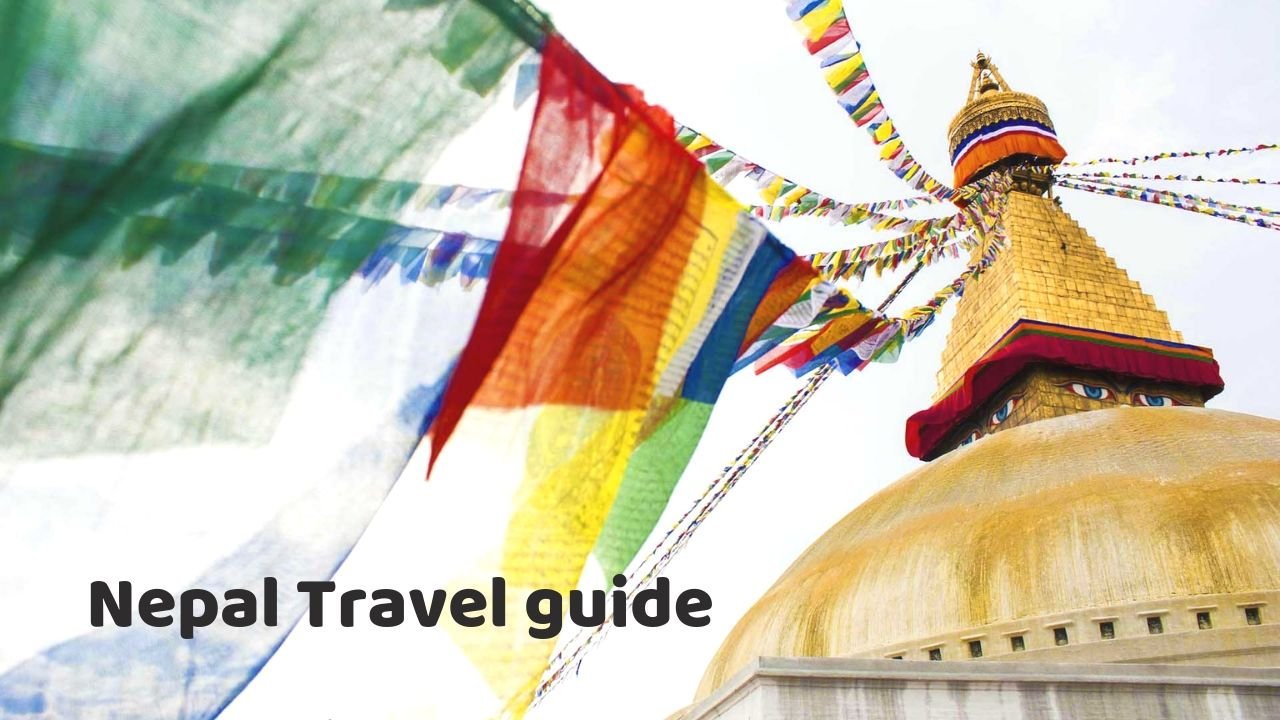
Last Updated on: Mar 20, 2024
It was only in the late 1950s that Nepal opened its borders to outsiders. Since then, Nepal has been alluring travellers with its mystical charm and diverse landscapes. Home to world’s highest peak, the Mt. Everest, this small Himalayan kingdom is known for its incredible mountain, snowy peaks and some of the best trekking trails of the Himalayas. Mountains, jungles, quaint mountain villages, ancient cities and diverse and interesting culture makes Nepal one of the world’s greatest and most interesting travel destinations. Since you are here, a Nepal trip must be on your mind. Here is our comprehensive Nepal travel guide with all the important information to help your Nepal trip plan. And, even if it is not, we urge you to read on. Nepal might just creep into your heart and then to your travel plans!
Where is Nepal located?
Located in South Asia and home to the highest mountain range in the world, the Himalayas, Nepal is a landlocked country sharing its borders with Tibet in the north and India in the east, west and south. Mt. Everest, the highest peak in the world is located in the northern region, while the southern parts of the country have tropical lowlands.
Just as many parts of India like Darjeeling and Sikkim is influenced a lot by Nepali culture, Nepal too has imbibed a lot of Indian culture and way in it.
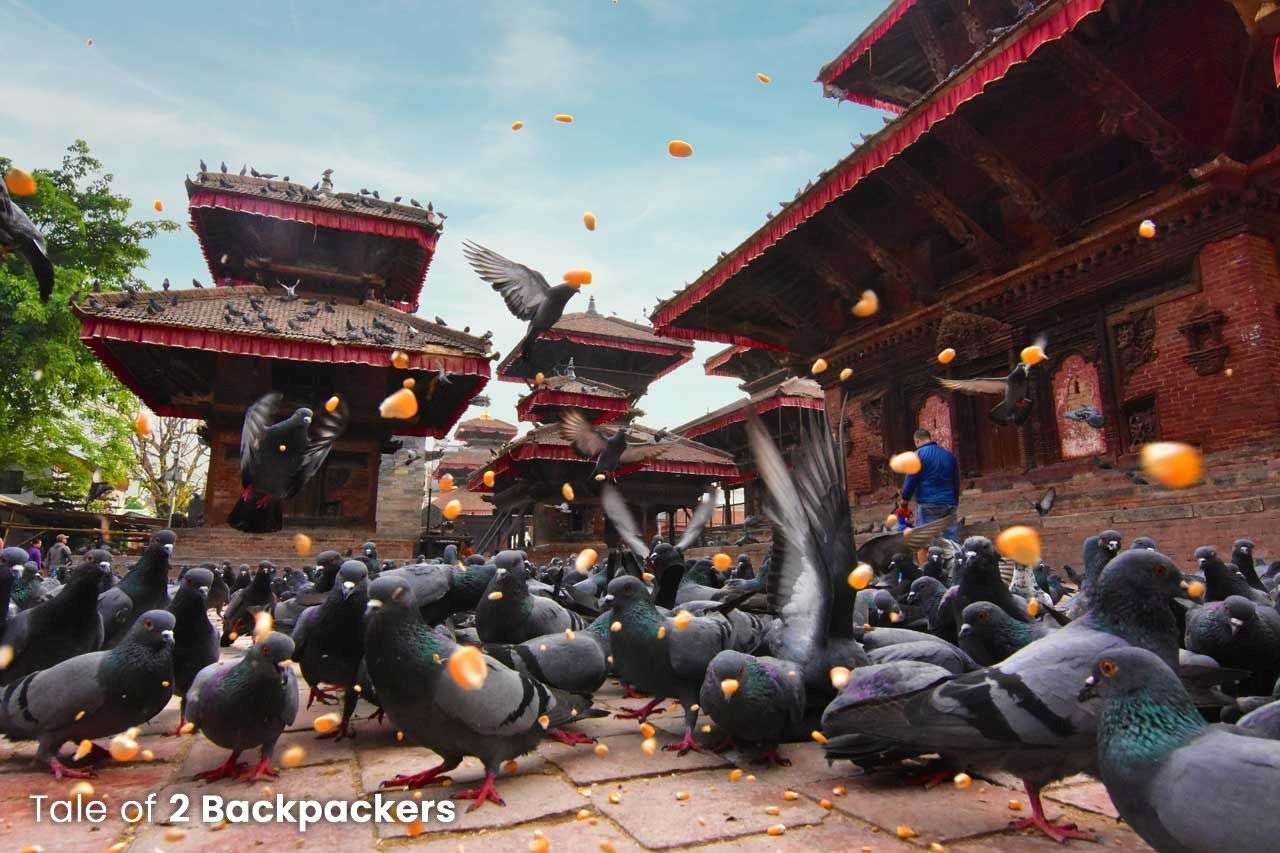
Why should you visit Nepal?
Wedged between the mystical world of Tibet and the steamy jungles of India, Nepal is the land of snow peaks and Sherpas. Yaks and yetis rule the bedtime stories in Nepal. And those stories of yaks and yetis also crept into our bedtime stories. Being from the neighbouring country of Nepal, we heard a lot of interesting stories about yetis during our childhood days. It is a place where you can not only attain travel nirvana but also spiritual nirvana . Just as we mentioned before, let us give you a few reasons why you should visit Nepal.
- Nepal is a trekkers’ paradise: Home to eight of the world’s highest peaks, there is no dearth of trekking options in Nepal. There are treks for beginners as well as experienced ones. And finally, the holy grail for mountaineers, Mt. Everest is also located in Nepal.
- Adventure in Nepal : Apart from trekking, Nepal will make your heart skip a beat with its adventure activities. Paragliding, white water rafting, bungee jumping are some of the adrenaline rushing activities that you can do in Nepal.
- Nepal has a rich wildlife: Visit the Chitwan National Park having a rich wildlife.
- Nepal is culturally diverse and exciting: the cultural landscape of Nepal is as diverse as its natural. There are a number of ethnic groups in Nepal that has made the land culturally rich. From Hinduism and Tibetan Buddhism to nature-worshipping shamanism, Nepali culture has integrated all in itself very well.
- Nepal is the birthplace of Lord Buddha: Lumbini is the birthplace of Gautam Buddha and is definitely one of the must-visit places in Nepal. This fact also makes Nepal culturally unique yet diverse.
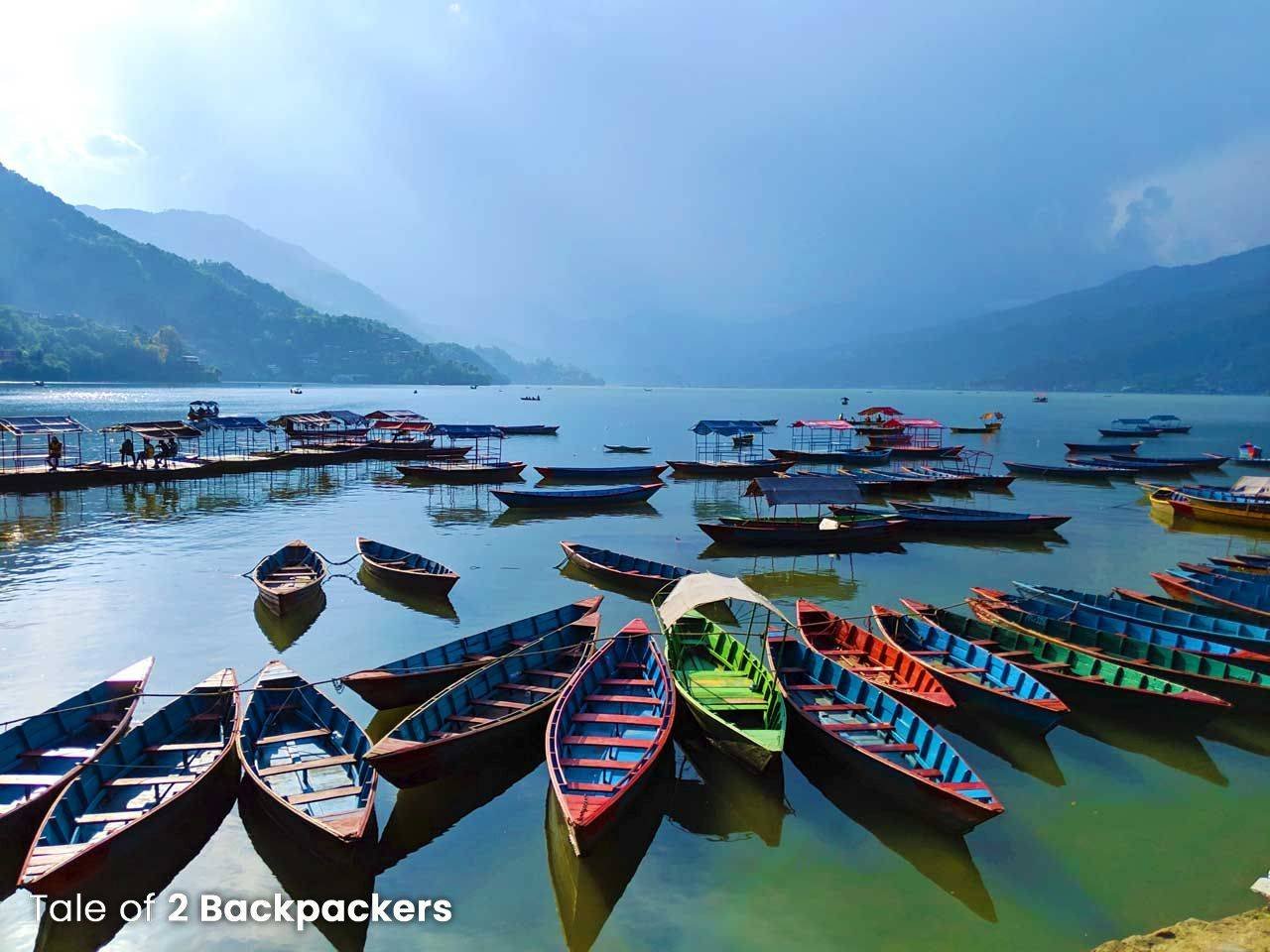
How to get a Visa for Nepal?
Tourist Visa for Nepal can be obtained on arrival at the Tribhuvan Airport at Kathmandu as well as all land border crossings. A few countries are not given visa on arrival. You are advised to check the list before visiting.
You can also apply for online visa upto 15 days before your arrival and travel within 6 months of the visa being approved.
The visa fees are as follows:
15 Days (multiple entries) : USD 30
30 Days (multiple entries) : USD 50
90 Days (multiple entries) : USD 125
Tourist visa extension is done for minimum 15 days with USD 45 and USD 3 per day for additional days. The visa can be extended maximum upto 150 days in a calendar year, but you will have to visit the immigration office before the expiry of your current visa.
For obtaining a visa on arrival, you will need a passport size photo and 6 months validity on your passport.
The steps for obtaining a visa on arrival:
- Fill in the “ Arrival Card ”
- Fill in the online ‘Tourist Visa’ Form (you can fill it up prior to your arrival visiting official website of Department of Immigration). If you fill it from the website, you will get submission receipt with barcode. Get a printout of it for getting the visa. It works for fifteen days and becomes invalid then after. Alternatively, you can fill the form at the kiosk machines upon your arrival at the airport.
- Next, make payment at the counter to the right of your visa kiosk as per your visa requirement. You can pay with Debit card, but it is always good to keep some cash handy.
- Get the receipt.
- Proceed to the Immigration Desk with your online form, payment receipts and passport and hand in your documents to the immigration officer and get your visa done.
- If you are crossing the land border, only cash payment is accepted.
Nepal Tourist Visa for Indians
Indians do not require a Visa for Nepal. As per recent agreement between the 2 countries, your Adhaar Card is sufficient for getting an entry into Nepal . If you are crossing through the land border, you just have to show your Adhaar card and gain an entry into Nepal. As easy as that! But to get a SIM Card in Nepal, you will need a copy of your passport and a passport size photograph. So it is always good to keep your passport handy.
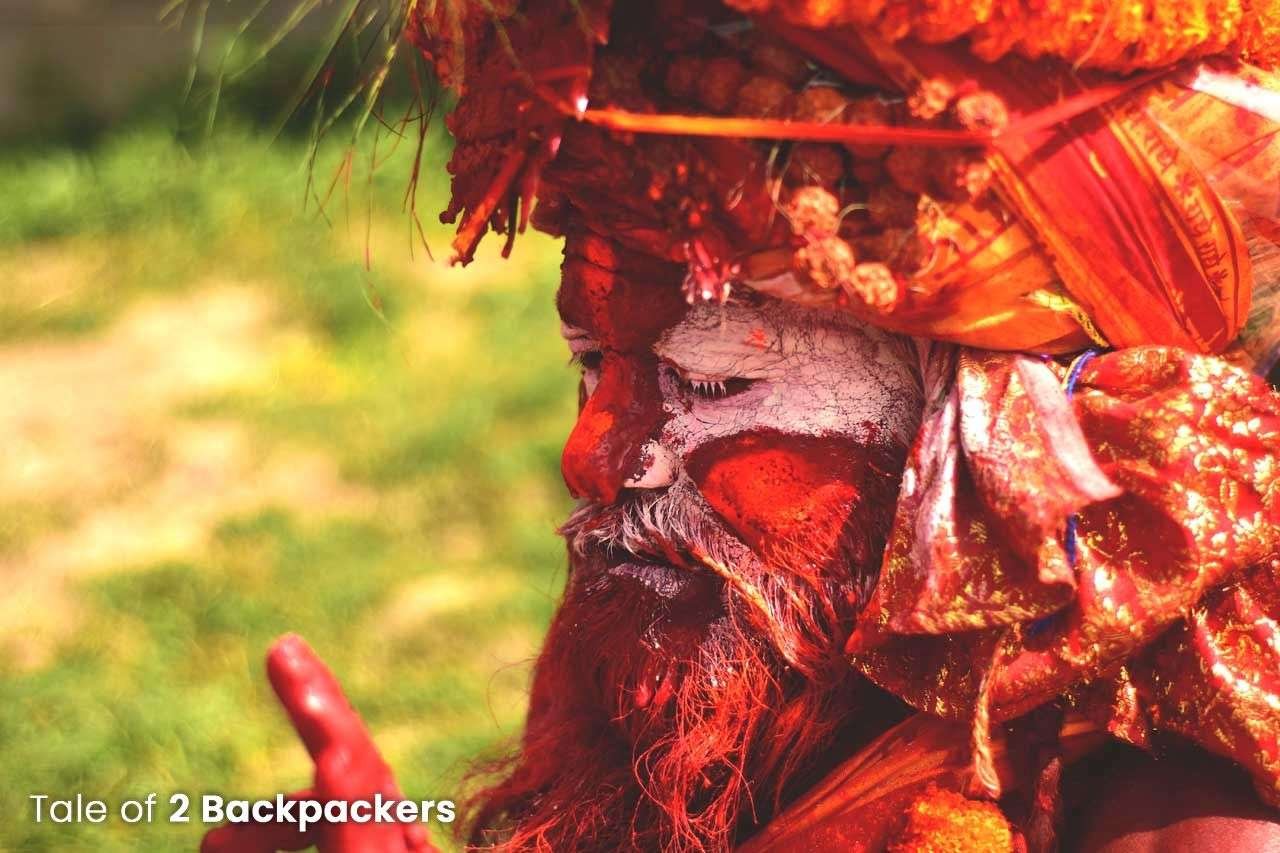
How to reach Nepal?
Nepal has only one international airport in Kathmandu. So if you are flying in, you will arrive at Kathmandu’s Tribhuvan Airport . The flight fares depend on the seasons. Expect high costs especially during the Christmas time and autumn, which is a peak season in Nepal. Also, the rate of flight cost depends on where you are coming from.
Do expect long queues at the immigration lines if you are getting Visa on arrival at the Tribhuvan Airport.
Prepaid taxis are available at the airport terminal to take you to your hotel. Sometimes, a few hotels also provide free pick-up and drop from the airport.
Getting into Nepal from neighbouring countries by border crossing
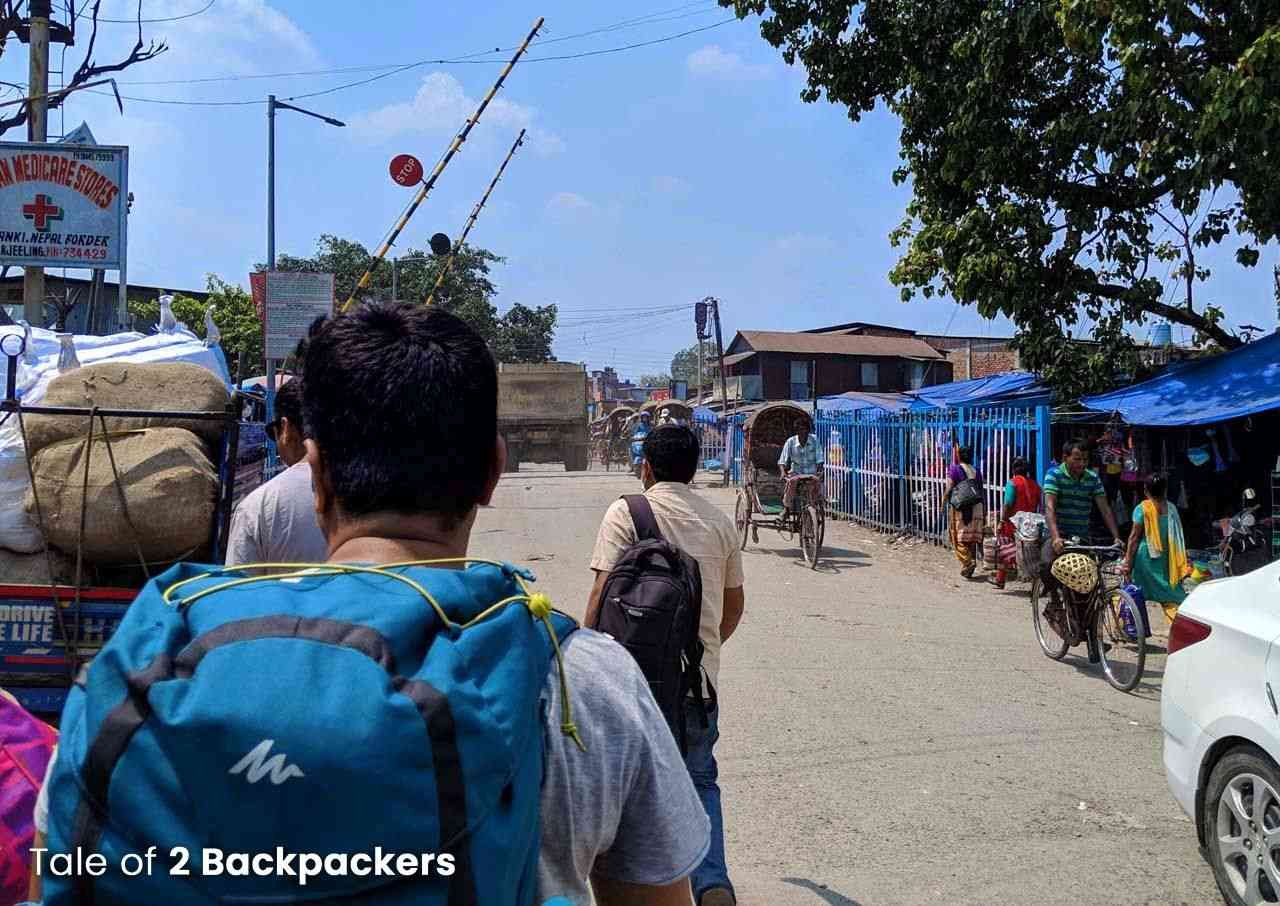
Many travellers often combine a trip to Nepal with that of India. Those in India can also consider getting into Nepal by crossing the road borders. There are a number of border crossings between India and Nepal and an overland route can be easily planned. The most common border crossing between India and Nepal includes the following:
- Raxaul (India side) – Birgunj (Nepal side): The nearest main town is Patna (6 hours). From Birgunj, buses are available to Kathmandu (136 km).
- Panitanki (India side) – Kakarbhitta (Nepal side) : The nearest main town is SIliguri. Those who are coming from Darjeeling can take this border crossing route. From Kakarbhitta, you will get buses to Kathmandu (458 km) and Pokhara (600 km)
- Sunauli (India side)- Belahiya (Nepal side) : The nearest main town is Varanasi. Belahiya is nearest to Lumbini (30 km). So if you are entering by this route, consider stopping at Lumbini first and then carry on your journey to Nepal. Like all the other border towns, buses to Kathmandu and Pokhara are available from here.
- Jogbani (India side) – Biratnagar (Nepal side) : The nearest main town is Katihar (3 hours). From Biratnagar, you will get a bus to Kathmandu. The distance is 240 km. Biratnagar also has an airport and you will get flights to Kathmandu and Pokhara from Biratnagar airport.
Getting around in Nepal | Nepal Travel Guide
Well, getting around in Nepal is a bit tricky. Distances between cities are not that great, but the roads are poor, travelling is slow and the buses are not in the best of conditions. Some of the roads are pretty decent, but there are few that do not deserve to be called roads! Air travel in Nepal is said to be a bit risky. For moving from one town to another, you have tourist buses, local buses, minibuses and jeeps for remote places. There are flights connecting Kathmandu, Pokhara, Jomson and Lukla as well.
Tourist buses in Nepal
Tourist buses are the most common way of travelling across Nepal. There are AC buses with reclining seats, as well as non-AC buses. These buses connect the border town like Kakkarbhitta, Sunauli, Birgunj and Biratnagar with Kathmandu and Pokhara. They also run between all the major towns like Kathmandu, Pokhara, Sauraha (Chitwan National Park), Lumbini, Jomson etc. These vehicles are generally in better conditions than the local buses. In high seasons, it is better to get the tickets to these buses a day in advance, as they tend to get filled. You can get the tickets from the bus stations or bus parks. But all the travel agencies and hotels also can book the ticket for you. They usually charge a 10% commission on the price of the tickets.
We had taken a tourist bus from Kakkarbhitta to Kathmandu. The distance of 458 km was covered in 15 hours. The bus did not have an AC but had reclining seats. Though we would not say that we had a great bus journey, but it was also not uncomfortable altogether. 2 tickets costed us NPR 1600.
Also, we would recommend you to have a look at the bus before booking your tickets.
Express Bus/ Deluxe Bus
These days, a few buses run between the major towns of Nepal that are faster and more comfortable. These deluxe buses have AC and reclining seats with cushions and are quite comfortable. These buses usually run between Kathmandu and Pokhara and also between Kathmandu/Pokhara and Chitwan National Park or Lumbini. These buses usually run during 2 times – day and night. The day buses usually start in the morning and reach the destination by afternoon while the night buses starts in the evening and reach the destination the next morning.
We had taken a deluxe bus from Kathmandu to Pokhara. The bus was quite a comfortable one and the tickets cost us NPR 1200 per head. Yes, these buses are comparatively costlier, but you will have a comfortable journey.
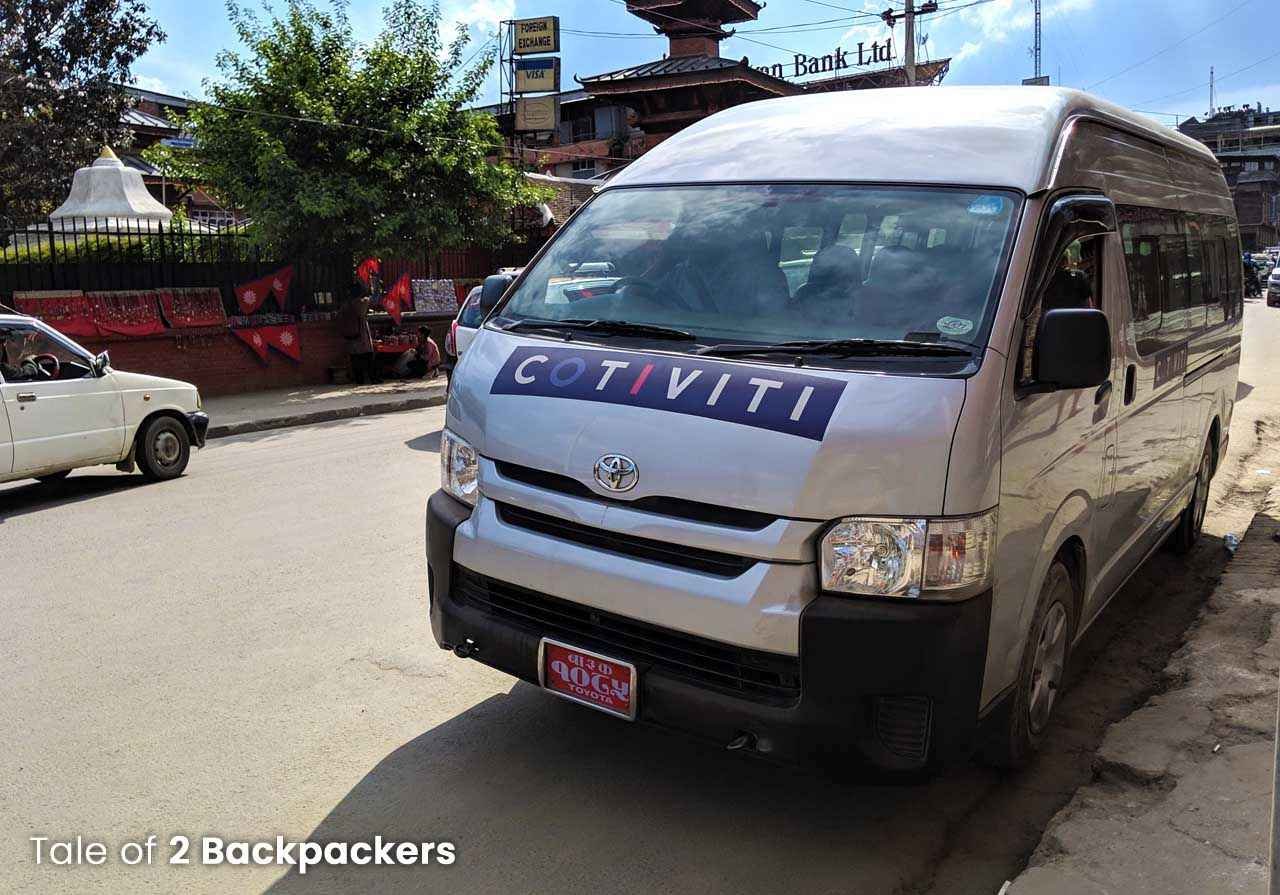
Minibuses travel on all the routes as the tourist buses and also on other routes. They are generally a bit faster, cheaper and a little less comfortable. Unlike the tourist buses, the minibuses run throughout the day. If you plan to go by minibus, then there is no need to get a ticket beforehand. Infact, you should get the tickets directly from the bus conductor and not from any vendors who might try to sell you a ticket at an inflated price.
Local buses
You need to be really adventurous if you try to travel across Nepal in local buses. Travelling within the city is all fine, but we would not recommend you to travel between cities on a local bus. These buses are definitely much cheaper but are old, slow and uncomfortable and prone to breakdown. Also, the buses will be cramped with passengers and you might find it hard to travel with all your luggage.
Jeep or 4WD
You might not need to ride a jeep or 4WD unless you are off to the remote places. Jeeps are the only mode of transport in the remote places where the roads are mere mud tracks. On the roughest routes you might even find a tractor! These jeeps are usually used to carry local supplies along with people, so you might find yourself huddled with groceries and goods! The price of a jeep ride depends on the place and region of your travel and the season.
Just like any other place, you will get taxis to take you from one city to another. Do bargain with the driver before deciding on the price.
Air travel is an essential part of Nepal transport network. But air safety record is worse than the road safety record. A flight over the Himalayas can be a visual treat to the eyes and exhilarating, but it can also be quite scary. You might have to take flights in Nepal from Kathmandu to Lukla (for Everest Base Camp trek ) or Pokhara to Jomson (For Annapurna Circuit Trek). If you are a part of a package tour or hike, then the flight cost is usually included. But if you are looking for flight tickets yourself, you can look into Buddha Air, Yeti Airlines and Sita Air .
Be prepared for bad weather and delays when you are flying in Nepal. Cancellations are also quite common. Also, book your tickets well in advance during the peak trekking seasons.
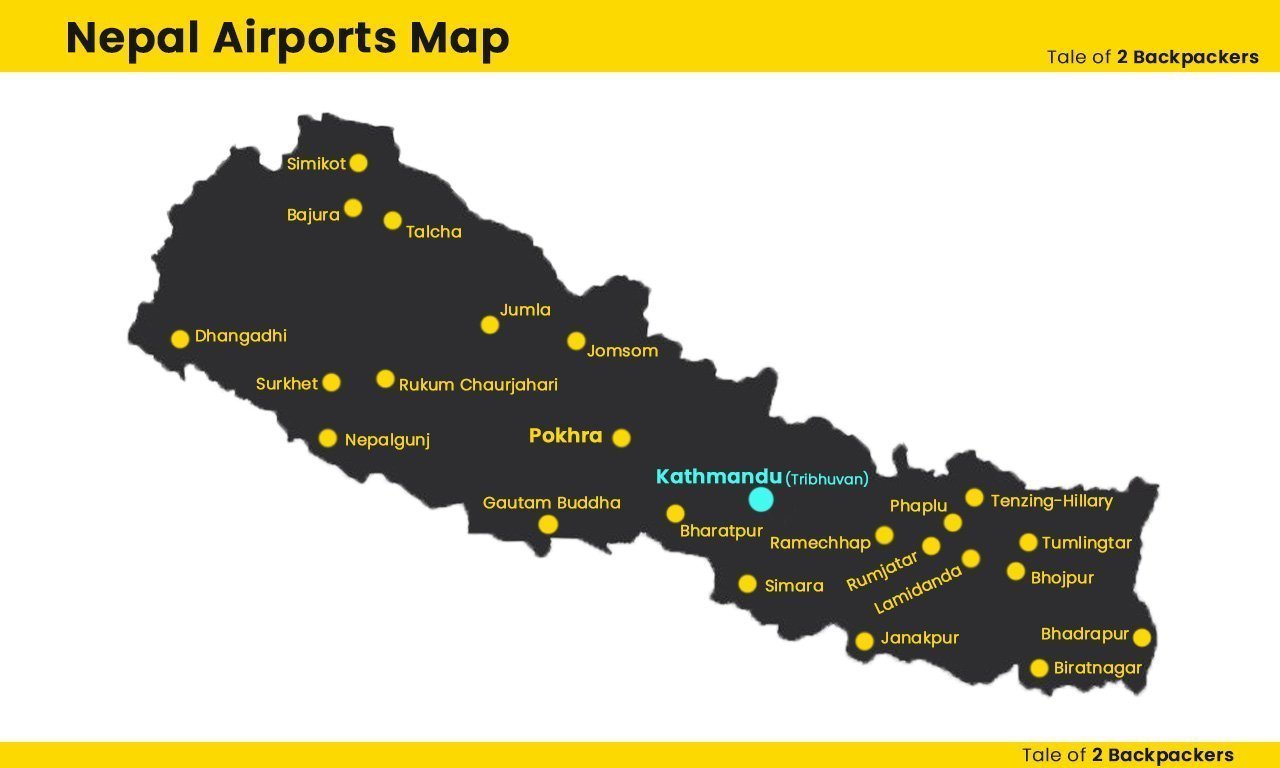
Travelling within the city – how to get around cities? | Nepal Travel Guide
In Kathmandu and Pokhara, going around by car is a great option. They are quicker and much more comfortable than the local buses. Also, they will take you to the exact location of your destination. Although these taxis have a meter, they always refuse to go by meter and will quote a price. You do have to bargain with the driver. And yes, there are no Ubers here!
Local buses are super cheap but are often crowded and packed to the brim. In most of the cities, the standard fare is NPR 20-25 for a ride within the city. Well, if you are okay with the crowd, then a bus ride is a fun way to observe the local Nepali people and their culture.
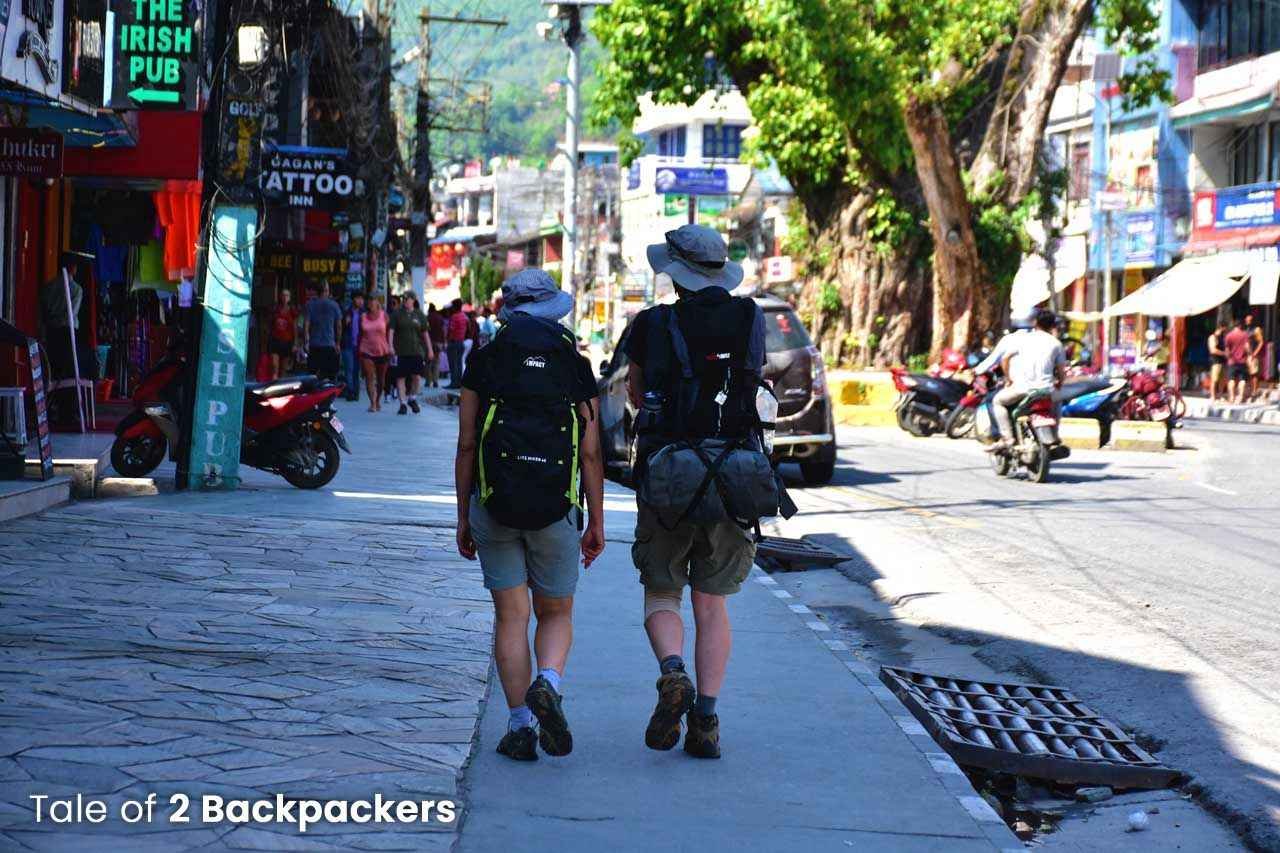
Motorcycles and cycles
You will get motorcycles and cycles on rent on per day basis. For renting a motorcycle, you need to have a valid driving license. You might have to leave your passport or return ticket as a deposit for renting a 2-wheeler. Motorcycles can be rented at NPR 700-800 per day based on the type. This rate is excluding fuel. Keep in mind that there is a shortage of fuel in Nepal. So if you are visiting the offbeat tracks, then get your tanks full.
Bicycles will cost you around NPR 200-300 per day.
Driving is on the left-hand side of the road. Indians will probably not face many problems because road rules are just like that in India. Tourists from the West might face a problem with the traffic, road conditions and vehicles or people jumping in front of yours while driving.
What is the best time to visit Nepal?
The best time to visit Nepal depends on the where you want to visit and what you want to do. Nepal has a temperate climate with four main seasons centred around the summer and monsoon. Before your Nepal trip plan, decide when you want to visit the country.
Autumn (late September to late November)
Autumn is the peak season in Nepal when the weather is clear and dry. It is neither too cold in the higher altitudes, not too hot in the Terai region. The rains have already cleared away the pollution and dust and you will get a clear view of the mountain peaks. This is also the best time for trekking. Thousands of trekkers hit the Everest and Annapurna region during this time. Prices at Kathmandu are also at their peak.
Winter (December and January)
The weather is most stable and clear during this time. During this time, the trekking trails are relatively less crowded as the temperature becomes quite low at those places. If you can bear the cold, then it is an excellent time to be near the mountains. Otherwise, the Terai region or the plains have a fantastic climate. This is a good time to explore the cities of Nepal.

Spring (February to mid-April)
This is the second-best time to visit Nepal. The weather is warmer and the days are longer. Rhododendrons bloom in the higher altitude areas. This is the best time for viewing the wildlife. This is also a good time for the trekkers. However, during April and May, a haze sits over most of Nepal due to crop burn. So visibility can be low especially in Kathmandu valley and Pokhara.
Monsoon (June to September)
This is the lean season for trekkers in Nepal. Monsoon brings heavy rains, landslides and clouds obscure the mountain views. The countryside though takes a fresh green look. July and August is also the best time to visit the Mustang Valley that falls in the rain shadow area.
Places to visit in Nepal

Kathmandu Valley
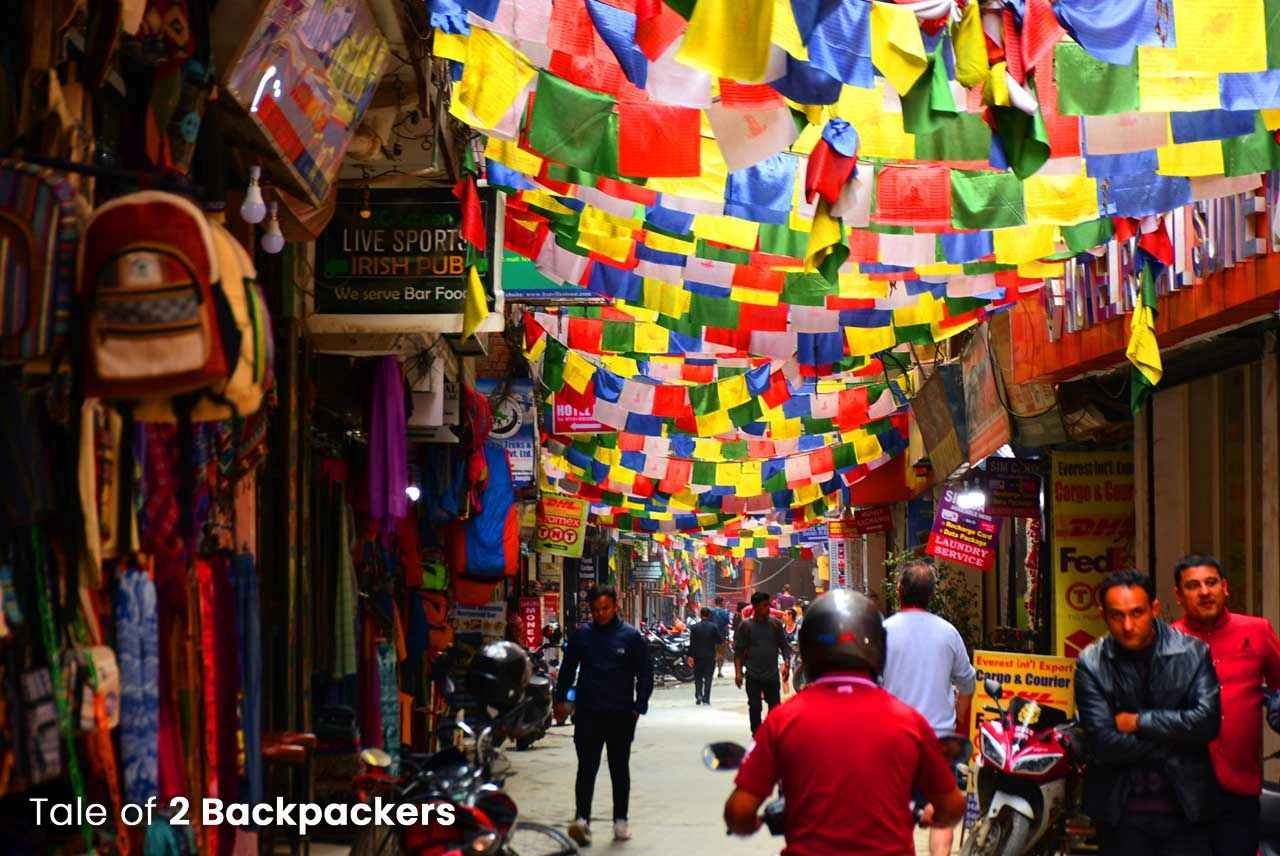
Kathmandu, the capital city of Nepal is an electrifying mix of medieval alleys, Hindu temples, Buddhist stupas and vibrant city life. There is an entire list of UNESCO World Heritage sites in Kathmandu city itself. Kathmandu is crowded, noisy and dusty, but is also unique in its diversity. While in Kathmandu, do not miss the UNESCO World Heritage Site Kathmandu Durbar Square. After the earthquake in 2015, many of the ancient buildings were thoroughly damaged, but now the majority of the buildings are being restored gradually, mainly with the help of China. You will see bid signboards saying the donation and help of China in restoring these ancient monuments. Well, China seems to have reached everywhere.
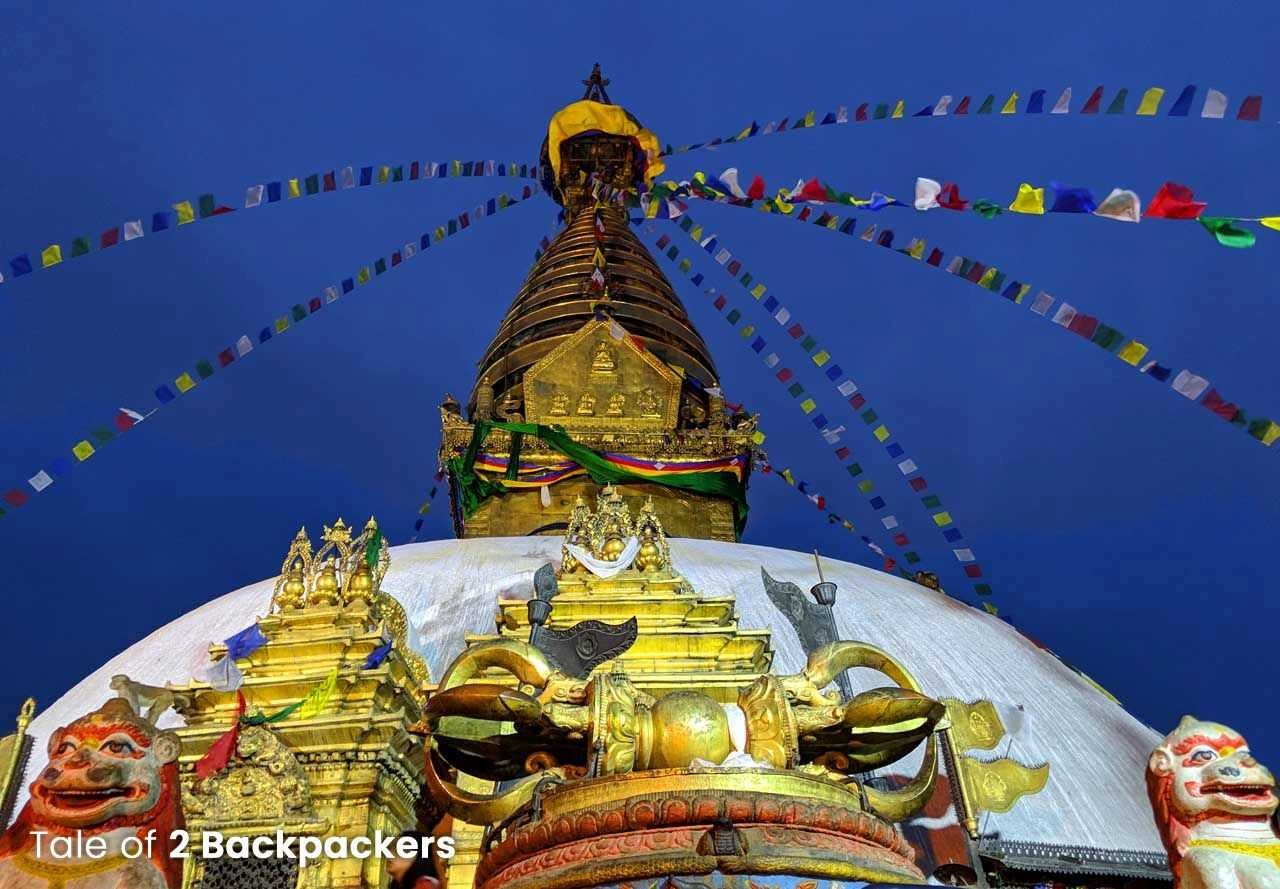
The other places of attraction in Kathmandu city are Pashupatinath Temple , the sacred Hindu pilgrimage site, Boudhanath Stupa and Swayambhunath Stupa , the two Buddhist sites. The Narayanhiti Palace , Garden of Dreams are 2 other interesting places to visit in Kathmandu. And of course, do not miss to visit the Thamel market . Thamel is definitely your one-stop solution for all your trekking and hiking needs.
After you have explored Kathmandu city, visit the 2 other UNESCO Heritage sites Patan and Bhaktapur Durbar Squares . Kathmandu, Patan and Bhaktapur were the 3 ancient kingdoms of Nepal. All the 3 Durbar Squares are beautiful and magnificent in their own rights.
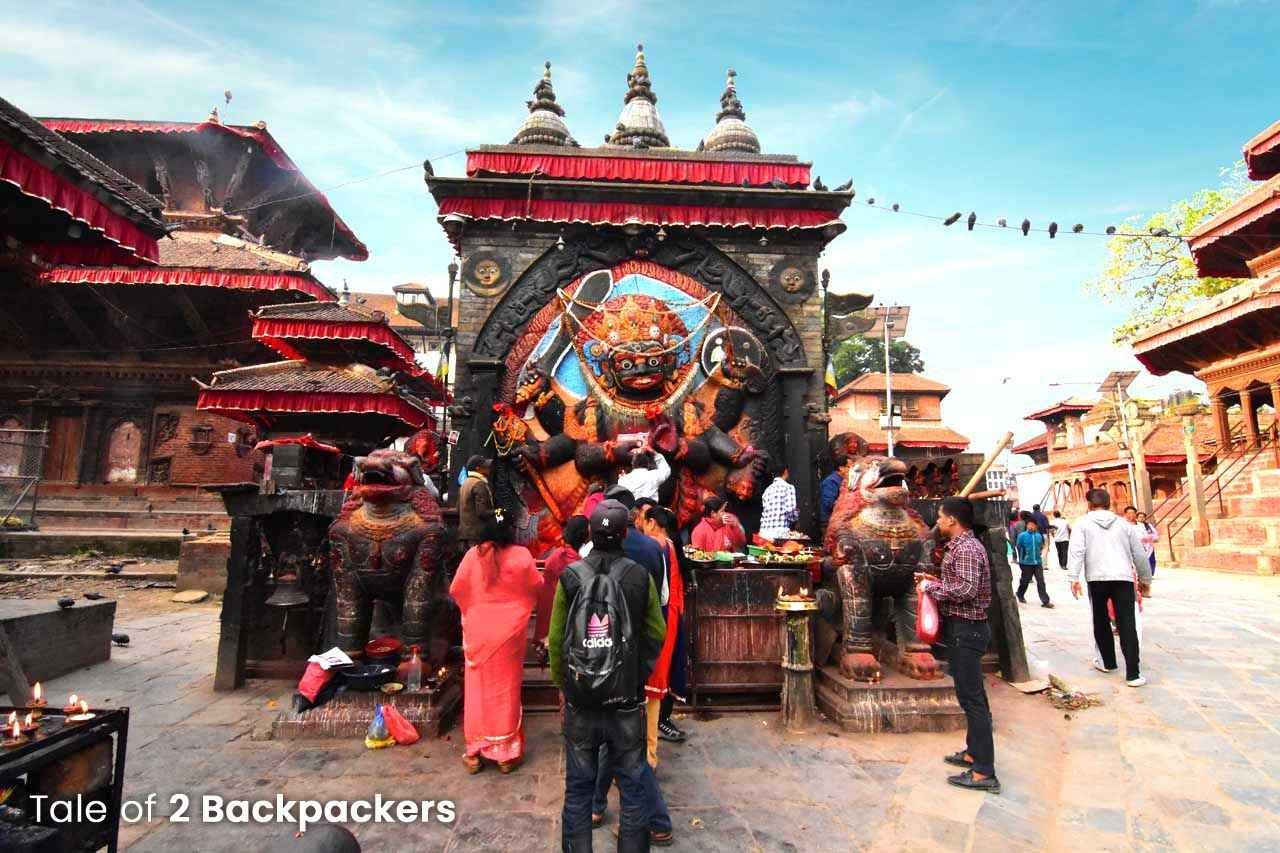
While many have complained Kathmandu to be crowded and noisy (which I agree completely), I found Kathmandu totally fascinating. Infact, there is a sense of calm amidst all the chaos in the city. It is something just as we felt when we were in Varanasi . Interestingly, there is a Nepali temple in one of the Ghats of Varanasi built by a Nepali King.
If you do not at all prefer the chaos of Kathmandu, you can visit the rural landscape of Kathmandu valley. A visit to Nagarkot will take you close to the mountains and give you a sense of serenity. Although Nagarkot has now become quite commercialized with many hotels cropping out here and there and is no longer offbeat, still the place is much more serene than Kathmandu.
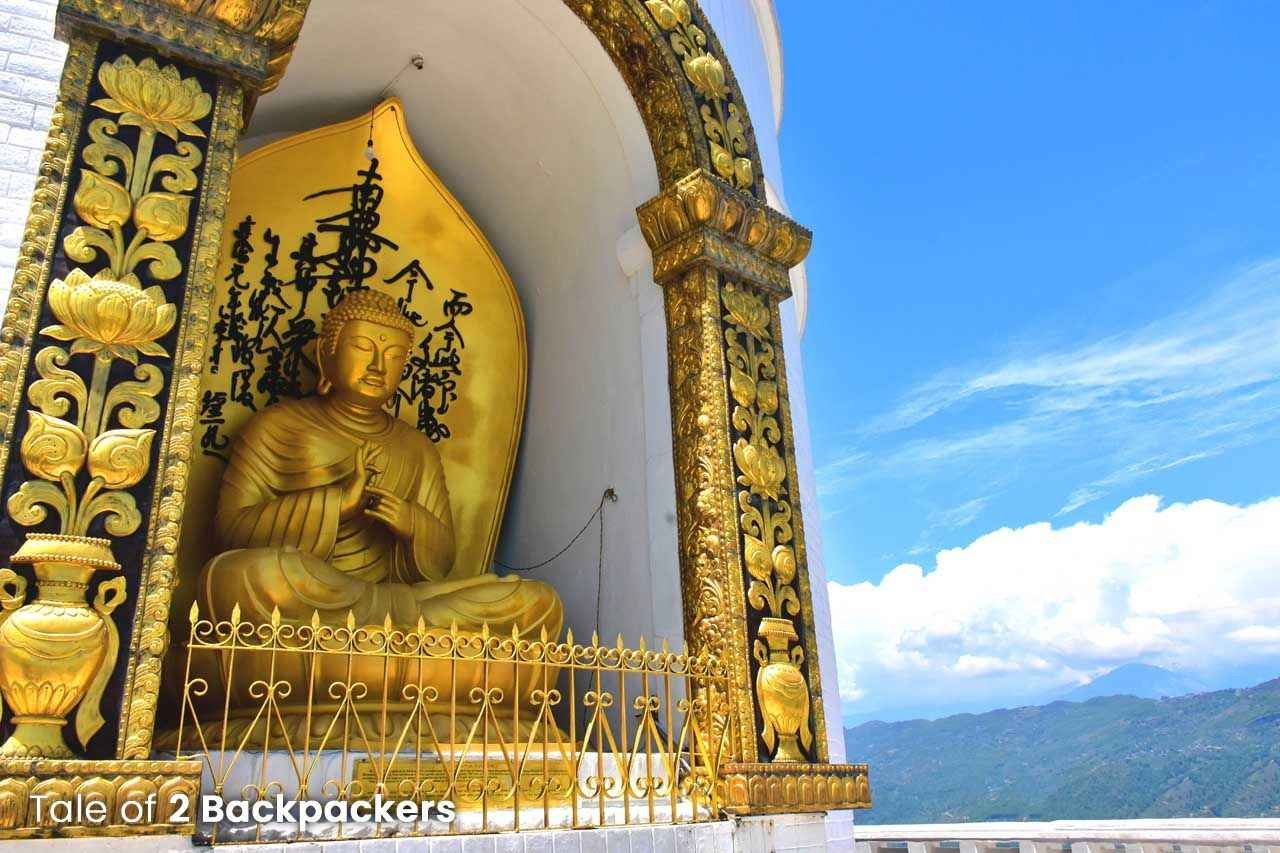
Pokhara is perhaps the next most visited place in Nepal. While Pokhara downtown can be quite crowded and noisy, the lakeside Pokhara is the epitome of tranquillity. Located around the Fewa Lake with the Macchapucchre Peak (Fishtail Peak) at the backdrop, Pokhara is a paradise for the laidback travellers, backpackers, trekkers and the adventure enthusiasts. Afterall, treks to the Annapurna circuit, Ghorepani Poon Hill Trek , Mustang valley – all starts from Pokhara. You can also indulge in various adventure activities like paragliding. There are few other touristy things to do in Pokhara as well. The best place, however, is the Peace Pagoda located high up on a hill. It was definitely one of our favourite places.
Evening in Pokhara lakeside is completely chilled. There are shacks and restaurants lining the lake where you can simply sit down, enjoy the sunset and have a beer. Pokhara is the perfect antidote to the crowded Kathmandu.
Read about our complete guide on Places to visit in Pokhara .
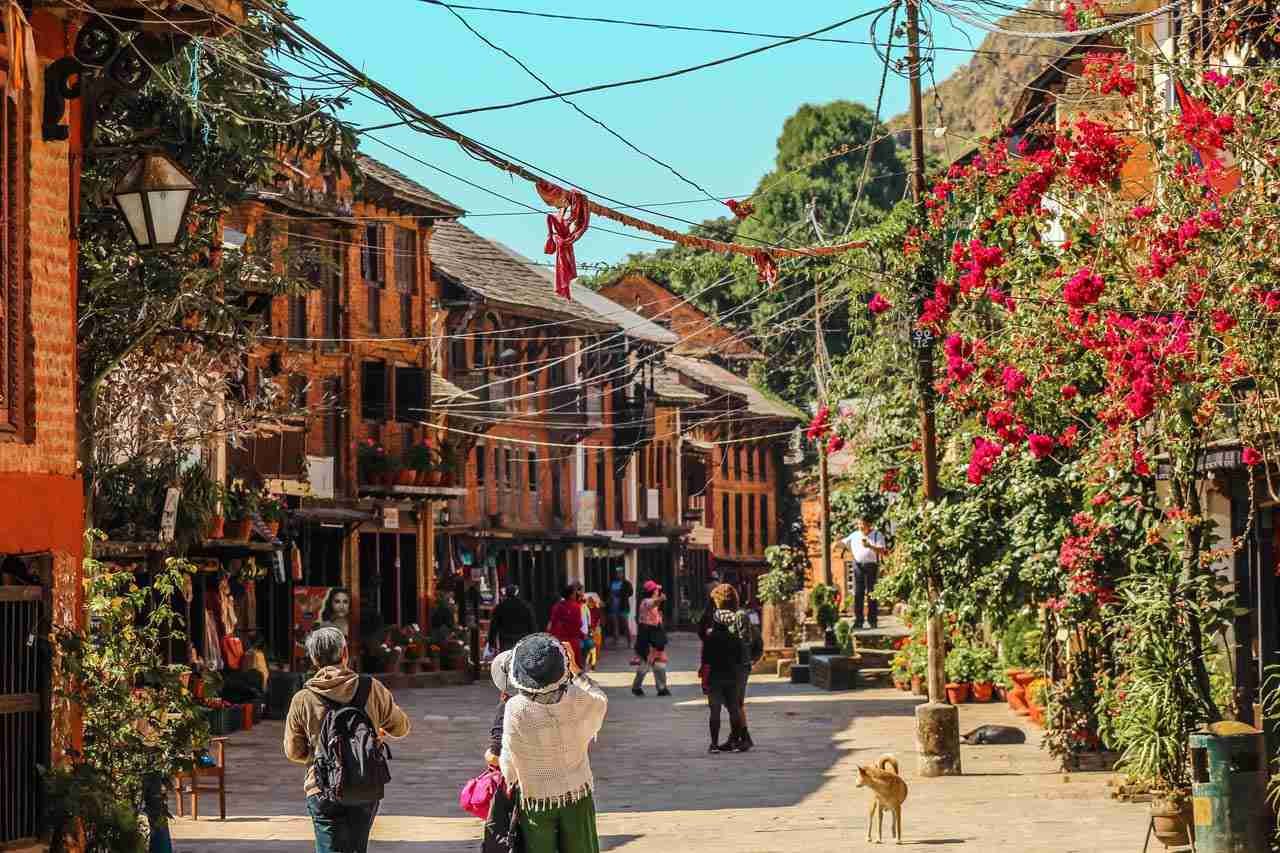
The ancient Newari village of Bandipur is often overlooked by tourists due to its slight offbeat route, but the place is worth visiting. Bandipur is the living open-air museum of the ancient Newari culture of Nepal. The town was once the stopping point on the Indo-Tibet trade route.
The village has beautifully preserved traditional Newari houses having intricate woodwork (Newari houses are known for their elaborate woodworks. You can also see a few of them in the old alleys of Kathmandu). The town has a distinctly European feel to it with quaint houses and vehicle-free streets. You can also visit the nearby peak to get a great view of the surrounding valleys.
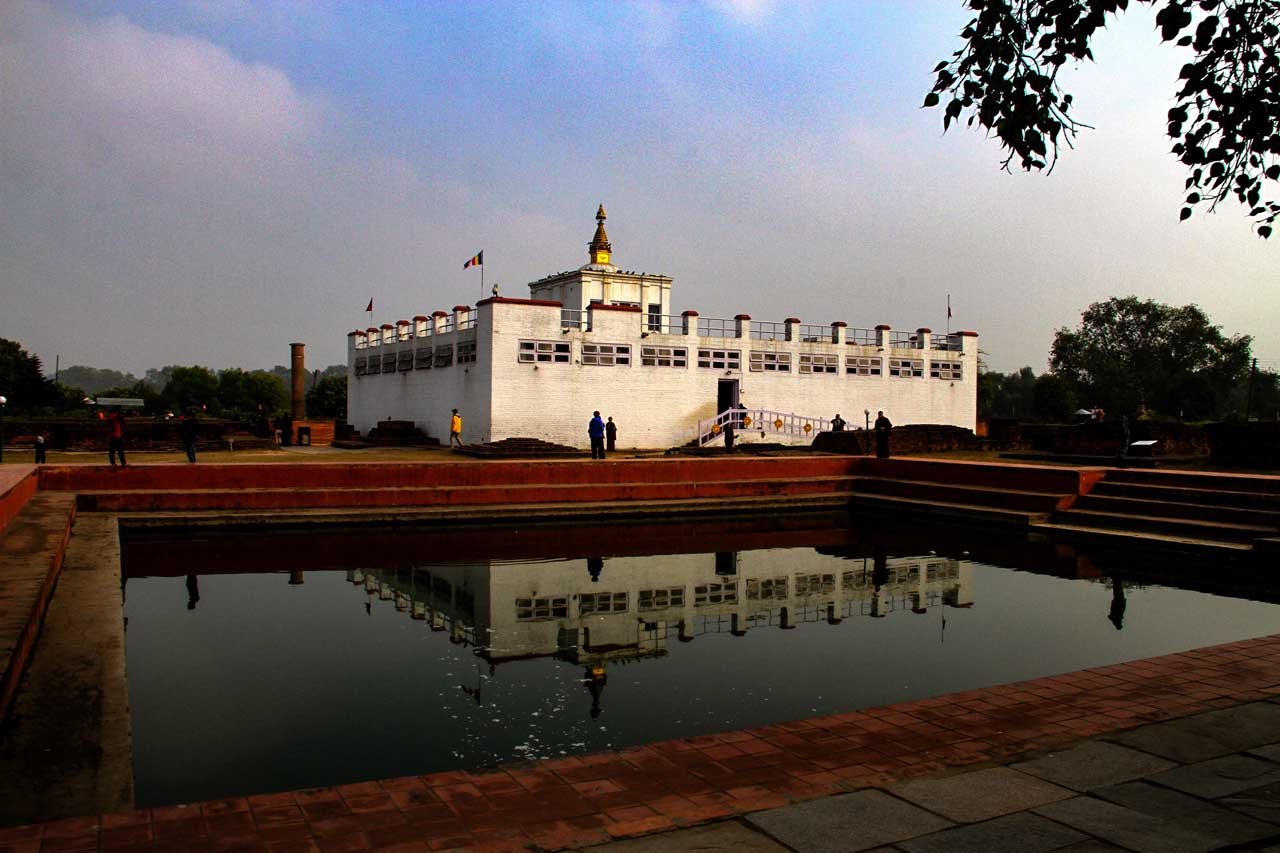
When you are Nepal, you will see quite a few graffiti on walls, buses saying “Buddha was born in Nepal”. Well, Lumbini is the place where Gautam Buddha was born. We thought that our Nepal Travel Guide can never be completed unless we mention about Lumbini. A UNESCO World Heritage Site of immense global significance, Lumbini is visited by thousands of Buddhists every year. The Maya Devi Temple is the most significant place in Lumbini. The place also has a number of monasteries, stupas and temples constructed by the Buddhist community.
Didn’t we tell you before that Nepal is an incredible mix of cultures?
Chitwan National Park
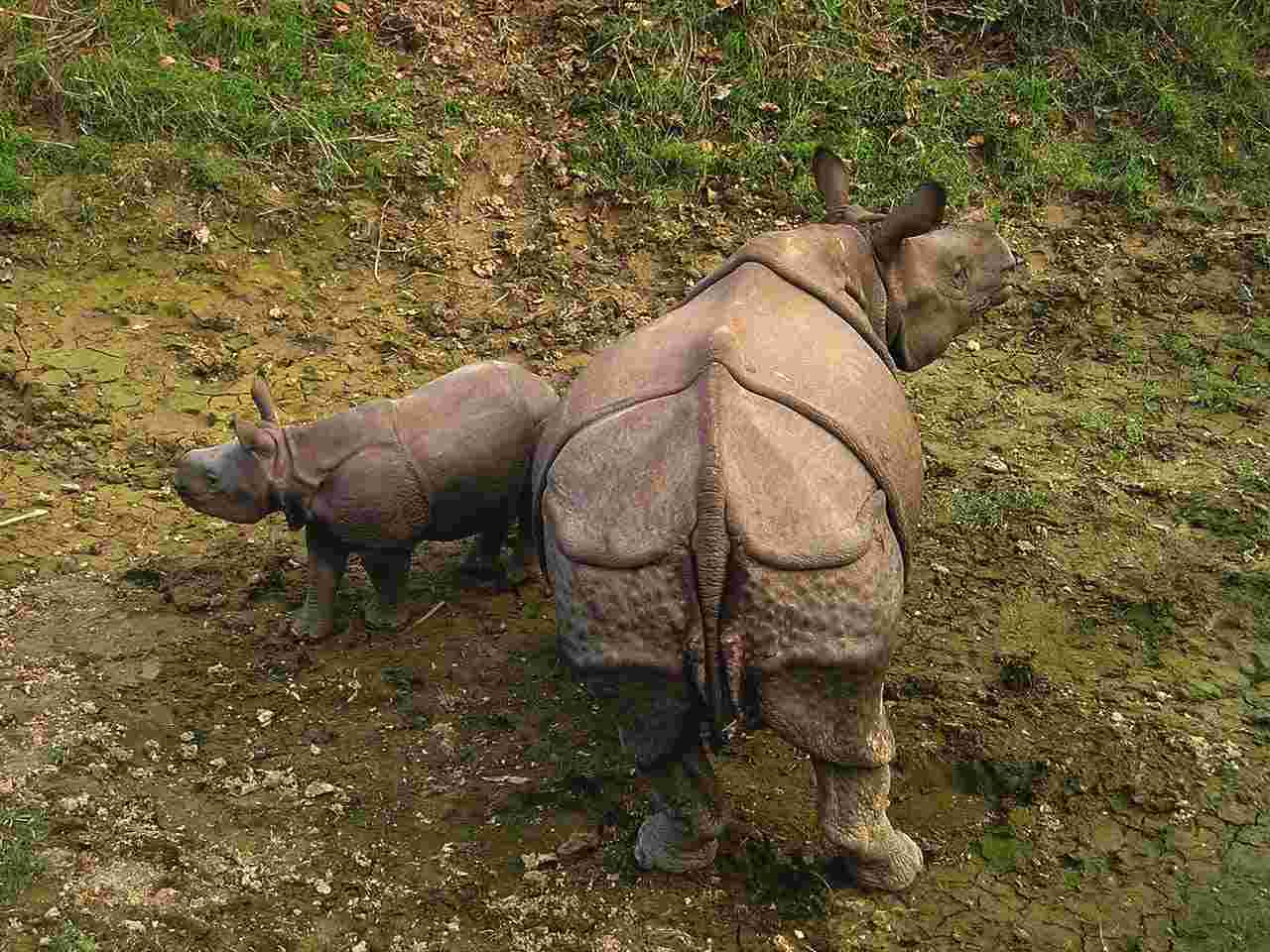
Located in the lowlands of Nepal bordering India, Chitwan National Park is one of the most beautiful national parks of Nepal. It once served as the royal hunting ground, but presently it had achieved the distinction of being a zero poaching place in 2015. You can see the one-horned rhino, sloth bear, crocodile, gharial and monkeys on a game safari. Having said that, try to avoid doing an elephant safari. We had done it once and decided to do it never again!
Adventure in Nepal | Nepal Travel Guide

Nepal is a heaven for the adventure enthusiast. Being the home to the world’s highest mountain ranges, trekking is no doubt one of the main reasons that people visit Nepal. Apart from trekking, Nepal also offers numerous activities for the adventure junkies. Nepal is surely a Disneyland for the adventure enthusiasts. Here is a list of the best adventure in Nepal:
- Bungee Jumping and canyon swing
- White water Rafting
- Paragliding
- Mountain flight over Everest
- Jungle safari
Trekking in Nepal | Nepal Travel Guide
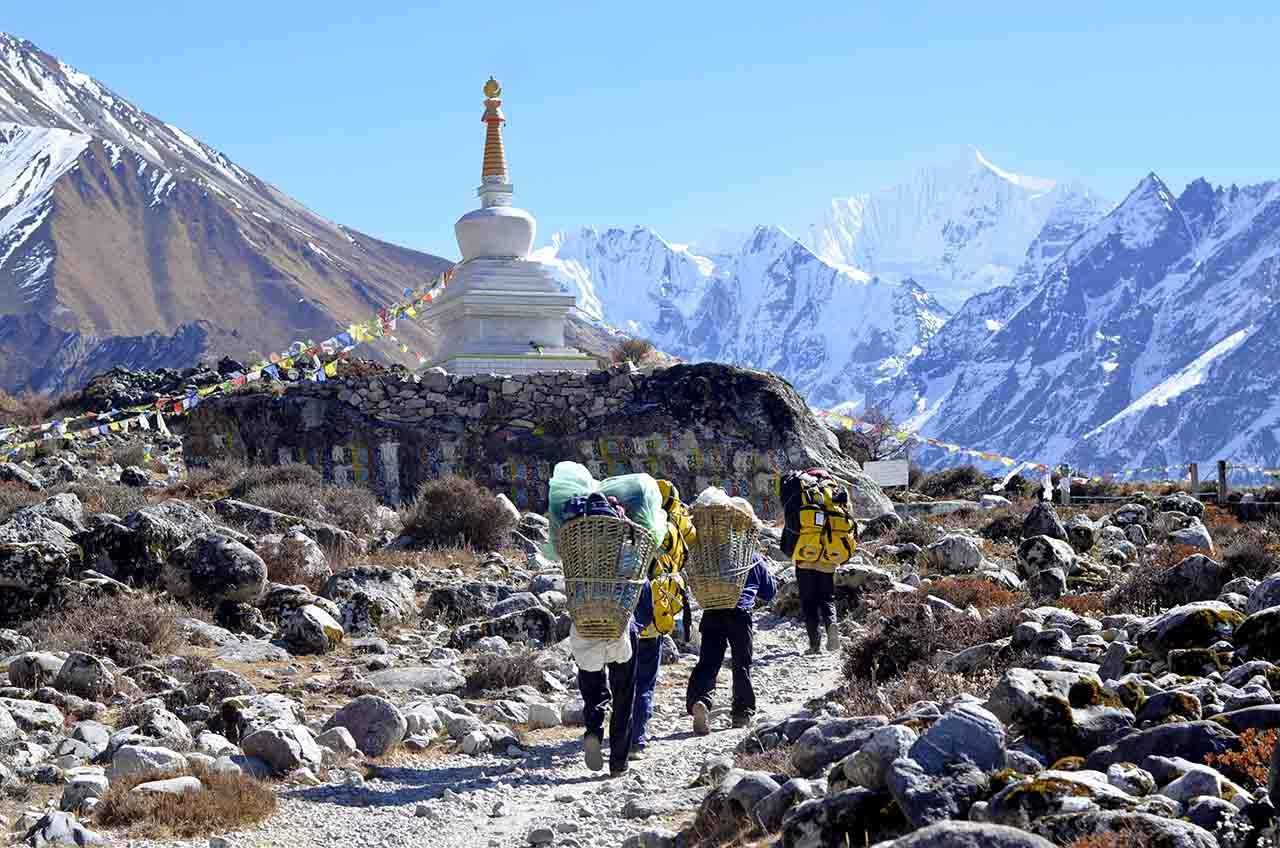
Trekking in Nepal is perhaps the greatest thing to do. We believe that all the mountaineers and trekking enthusiasts visit Nepal at least once in their lifetime. There is something about trekking in Nepal that gives you a sense of accomplishment. It might be the majestic Himalayas that makes trekking so memorable and enriching experience.
Read about our complete guide on Trekking in Nepal along with 14 Best Treks in Nepal .
The best thing about trekking in Nepal is that it has trails for everyone. Of course, Everest Base Camp Trek is one of the ultimate experiences, but in Nepal, there are smaller trails like Poon Hill Trek for all those who do not have much time.
The Annapurna Circuit Trek takes about 16 days and goes through the picturesque Nepali mountain hamlets and gives you a glimpse of the local life in Nepal. However, we feel that Mustang Valley bordering Tibet is one of the ultimate experiences in trekking. The Upper Mustang valley is not frequented by many trekkers because of the high permit fees (USD 500 for 10 days) but it is worth all of it.
Some Quick Information for your Nepal trip plan
Money matters.
The currency of Nepal is Nepalese Rupee (NPR).
You can convert all the major currencies at Kathmandu and Pokhara. You will find many currency exchange shops there. You can also exchange currencies at the airport and near the land borders.
ATMs in Nepal
Debit cards and credit cards are accepted in most of the hotels and restaurants these days. ATMs are widely available in all the major cities of Nepal. Most ATMs have a maximum withdrawal limit of NPR 10,000; however, some NABIL machines have an NPR 35,000 limit. But if you are travelling to interior places, then it is advisable to carry cash.
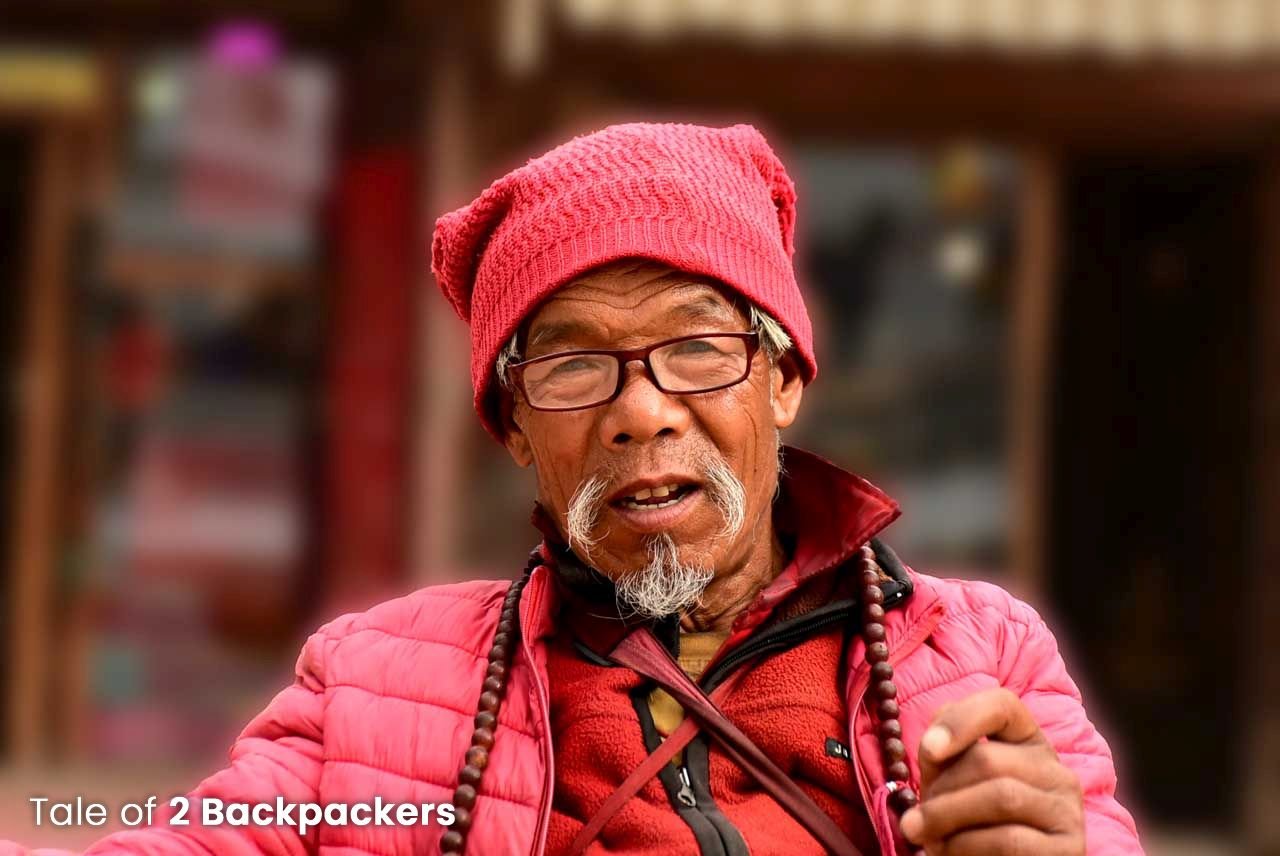
For Indians
You can exchange Indian Rupee to Nepalese rupee near the border. But do inquire about the exchange rate beforehand. We had exchanged INR to NPR near Panitanki-Kakarbhitta border and got quite a good rate.
You can also withdraw money from the ATMs. Usually, NPR 400 per withdrawal is charged. If you have a State Bank of India Debit Card, then you can withdraw money from State Bank of Nepal at a nominal rate. Usually, Indian rupees of smaller denomination (Rs50 & 100) are accepted in Nepal. Do not carry high denomination currency (Rs500 & 2000) to Nepal. You will find it difficult to exchange them.
Electricity
Power cuts are quite normal in Nepal. While most of the bigger hotels will have generator facilities for power backup, it is always better to keep your mobiles and cameras charged. Do keep a power bank with you.
Electricity Socket: The power outlets are compatible with European plugs (three prongs). Do carry a universal travel adapter with you so that you can use your electronic gadgets.
What is the language of Nepal?
Nepali and Newari is the main language of Nepal. Hindi is also spoken widely, and so is English. Since Nepal receives a lot of foreign tourists, most of the trek operators and sherpas understand and speaks English.
What to eat in Nepal?
Food in Nepal has a lot of Indian influence. Indian travellers will probably feel at home in Nepal. The food in Nepal is extremely good having both Indian and Tibetan influence. A few of the must try dishes in Nepal are:
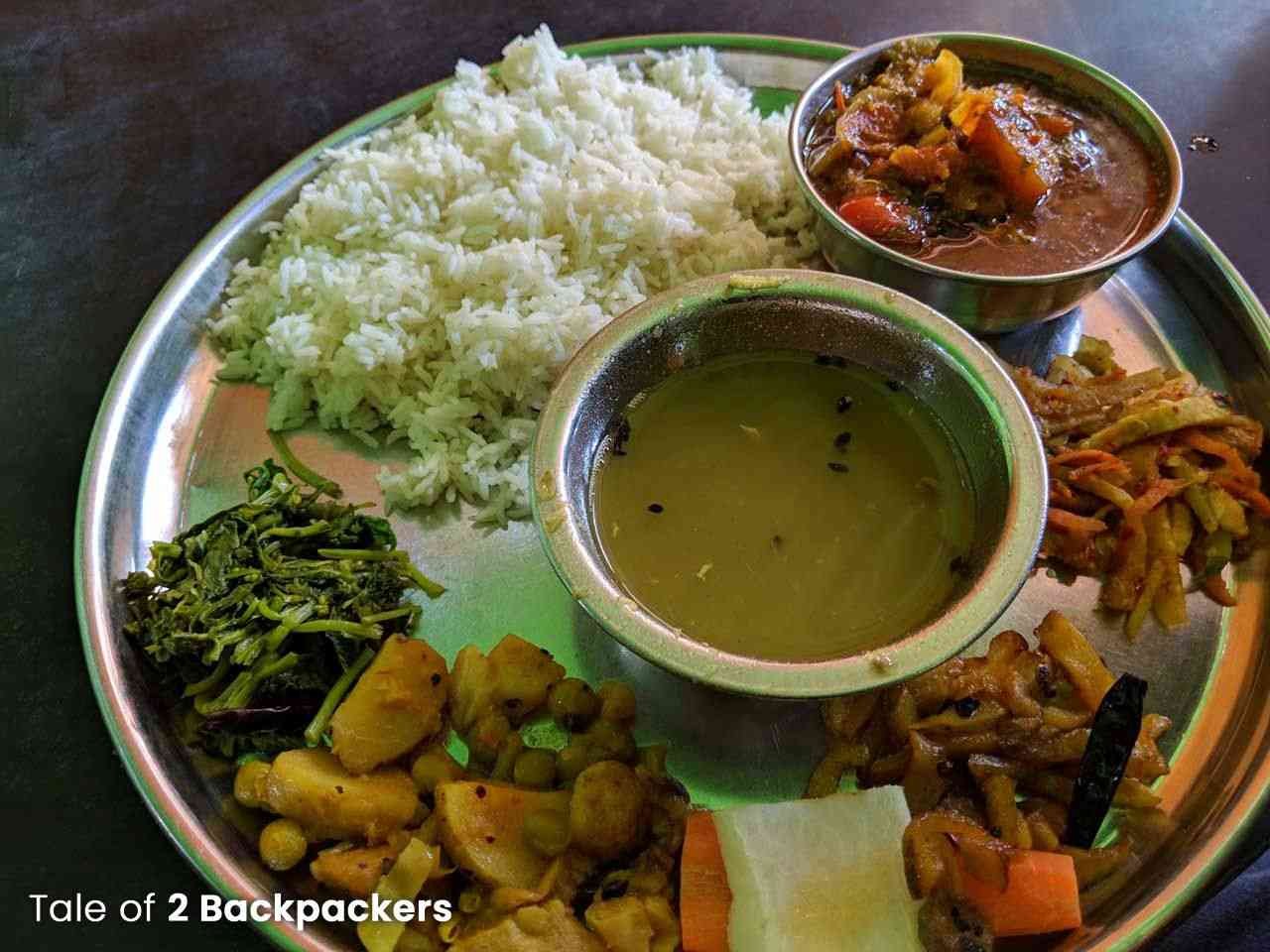
Yes, Dah Bhat is the staple food in Nepal. You will get it all over Nepal and you will also see people wearing tee-shirts with the slogan written on it “Dal Bhat Power, 24 hour” ! Dal Bhat is a set meal consisting of rice, curry and veggies and dal (soup-like serving of lentils). You can also add some non-veg items with you if you want. Dal Bhat is stomach filling and a serving of Dal Bhat is enough to carry you through the day. Personally, we both are also fond of the Dal Bhat power!

As Indians, we are all familiarized with momos. They are the Nepali version of dumplings filled with veggies or meat and served with spicy chutney. Steamed or fried, momos are the best snacks that you can get in Nepal. It was also our comfort food there.
Where to stay in Nepal?
Tourism has been on the rise in Nepal and so there are a number of hotels, hostels, guesthouses and homestays in Nepal. There are tree-houses in the trekking areas for accommodation.
You will find stays catering to almost all kind of budgets in all the major cities and towns in Nepal. During the peak season, you can pre-book your accommodation. But in cities like Kathmandu and Pokhara, you will probably get a place to stay at all the time. We usually do not pre book hotels and prefer looking for deals once we arrive at the place. If we have to do a booking online, we prefer booking.com
Major Festivals of Nepal

Hindus are known for their many festivals. Nepal, being a Hindu nation has a number of festivals celebrated all around the year. Also, Buddhist festivals are celebrated with lots of vigor and enthusiasm. Nepal is such a place where the Hindu and Buddhist culture has been inexorably mixed. Both the communities have borrowed practices, traditions from each other and they coexist seamlessly.
Nepali New Year celebration is one of the major festivals of the country. This usually occurs in the 2 nd week of April and New Year is a time for week-long celebration all over Nepal. We happened to visit Nepal during this time and witnessed the interesting and visually stunning festivals like Bisket Jatra and Sindur Jatra.
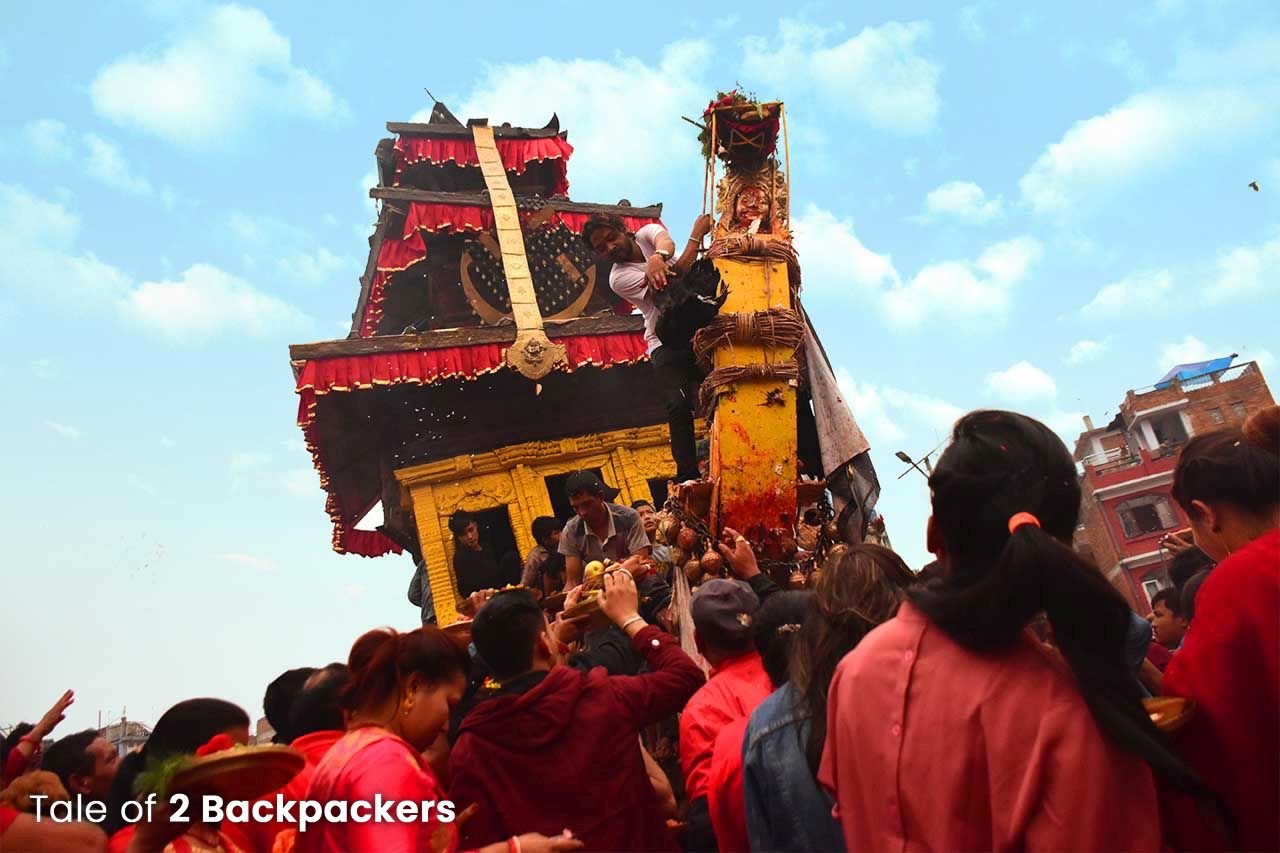
Indra Jatra is another important festival in Nepal when the Kumari, Living Goddess of Nepal comes out in front of the common people. Indra Jatra is celebrated usually in the month of September. Dasain or Dussehra and Holi are also celebrated with great pomp.
How much does it cost to travel to Nepal? | Nepal Travel Guide
Nepal can be as cheap and as expensive as you want it to be. But yes, Nepal is an extremely affordable country to visit. Nepal caters to all types of tourists – budget to luxury.
Being a tourist in Nepal can be cheap, but cost of trekking and mountaineering in Nepal can be quite high depending on the type of the trek you choose and what comfort level you want. Trekking permits come at a high cost in Nepal.
The typical cost of travelling in Nepal is given:
Accommodation:
- Dorms in a hostel with shared bathroom: NPR 500-800
- Budget hotels (with DBR) & homestays : NPR 1200 – 2000
- Mid-range hotels: NPR 2000 – 4000
- Luxury hotels: NPR 5000 onwards (available only in main cities like Kathmandu and Pokhara)
- Tea houses/ trekking lodges: NPR 500 – 2500
Cost of food
- Local meal in guesthouses and small eateries: NPR 150 – 250
- Snacks: NPR 50 – 200
- Three-course meal in fancy restaurants : NPR 600+
- Water bottle (1 litre) : NPR 20-25
Remember, the cost of food and things will increase as you go higher up the altitude. Be prepared to pay almost 10 times the price at higher altitudes than you would pay at Kathmandu or Pokhara.
Cost of transport in Nepal
- Local buses within city : NPR 25-50
- Taxi: NPR 150 onwards depending on the distance
- Tourist buses: NPR 800 – 2200
- Everest Experience Flight cost: USD 180-195
Cost of Hiking in Nepal:
- Porter /guide: NPR 800 – 1500 per day
- Organised Trek: NPR 4000 – 600 per day
- Trekking permit:
TIMS Card: NPR 1000 for Group trekker and NPR 2000 for free individual trekker per trekking route per person per entry.
For SAARC countries TIMS Card fees are as follows – Group trekker: NPR 300; FITs: NPR 600, per trekking route per person per entry.
Books to read about Nepal
Sometimes a book you read can inspire you to visit the place. I love reading and I first read about Kathmandu in a Bengali detective novel “Joto Kando Kathmandu te” by Satyajit Ray. I first read about the vibrancy of Kathmandu in the book which tells the story about Bengali’s most famous sleuth Feluda. So if you are the one who loves to read before travelling a place, here are a few books about Nepal that you might want to read.
Into the Thin Air by John Krakauer
Into the Thin Air is the personal account of Krakauer about his Everest expedition which turned out into a disaster. The book is a fantastic read about the incredible power of mother nature. You can buy the book from here.
Arresting God in Kathmandu by Samrat Upadhyay
Arresting God in Kathmandu by Samrat Upadhaya is the first Nepali author writing in English to be published in the West. The book explores the nature of desire and spirituality in the changing society.
The Snow Leopard by Peter Matthiessen
The Snow Leopard is an account of Matthiessen and naturalist George Schaller’s search of the elusive snow leopard in the Dolpo region of Nepal.
From Goddess to Mortal by Rashmila Shakya
The Royal Kumari of Nepal is a fascinating aspect of Nepal and its religious beliefs. In this book, From Goddess to Mortal by Rashmila Shakya, the erstwhile Kumari recounts her days as the living Goddess in the temple at Kathmandu and her life after post-Kumari status.
Is Nepal safe for travel?
Nepal is quite safe to travel.
After a period of political turmoil and Maoist insurgencies, Nepal has now relatively stable and making strides towards peace. Although demonstrations and strikes (known as Banda in Nepal) can occur anytime anywhere. We were stuck in one such strike during our trip. But overall, tourism is not usually affected. The locals are also quite friendly and warm and will help you. There are no issues about personal safety as such.
Problems might occur during trekking in the Himalayas, but that is also related to unforeseen natural disasters. So while trekking, be in groups, adhere to all the safety precautions and listen to whatever your guide instructs. They know the place well and will give you better advice.
For women travellers, Nepal is quite safe. We would recommend you not to trek alone or walk alone at night. Also, dress conservatively. Infact, these tips go for all the places you visit, not only Nepal!
Recomended read: Best Nepal Quotes that captures its spirit, mysticism and charm .
We have tried to cover all the major questions that had cropped in our mind before travelling to Nepal. Hope you find this Nepal travel Guide useful and it will help you in Nepal trip plan. If you have any other questions about Nepal, ask us in the comments below and send us a mail. Also if you liked the post, share it with others. Pin it for a later read!
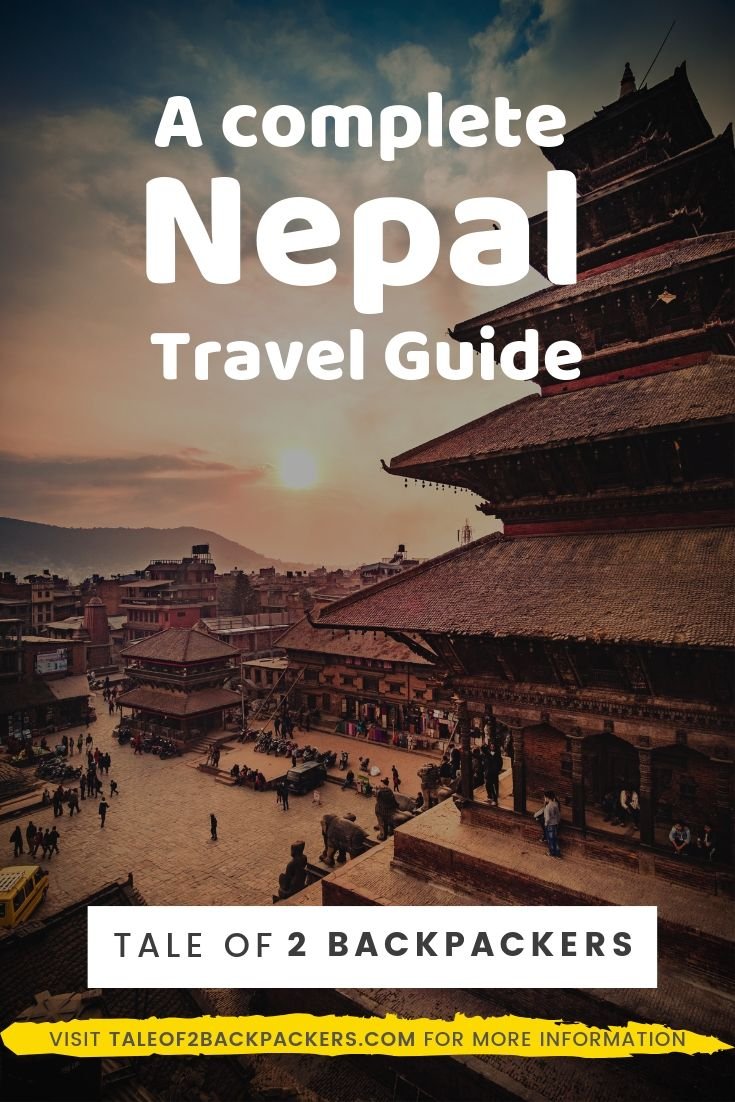
Enjoyed reading? Please share it with others.
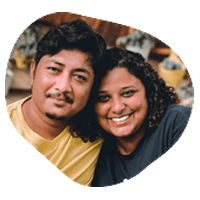
Agni Amrita
Related posts.
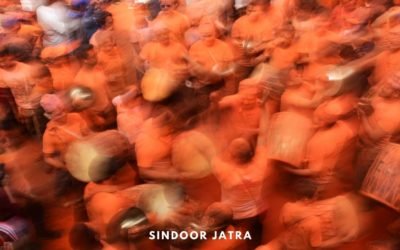
Sindoor Jatra – A Frenzy of Colours at Thimi, Nepal
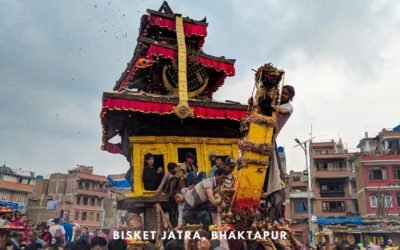
Bisket Jatra, Bhaktapur – A Visually Stunning Festival in Nepal
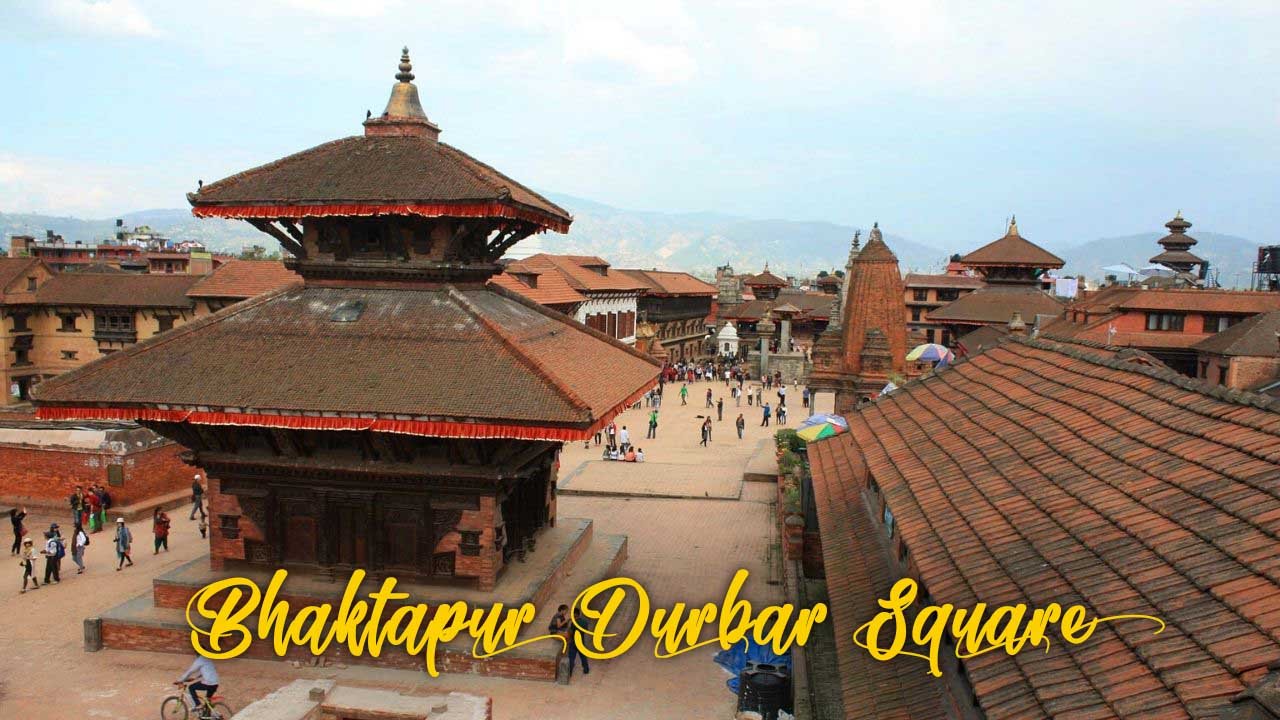
Bhaktapur Durbar Square – things to do in and around
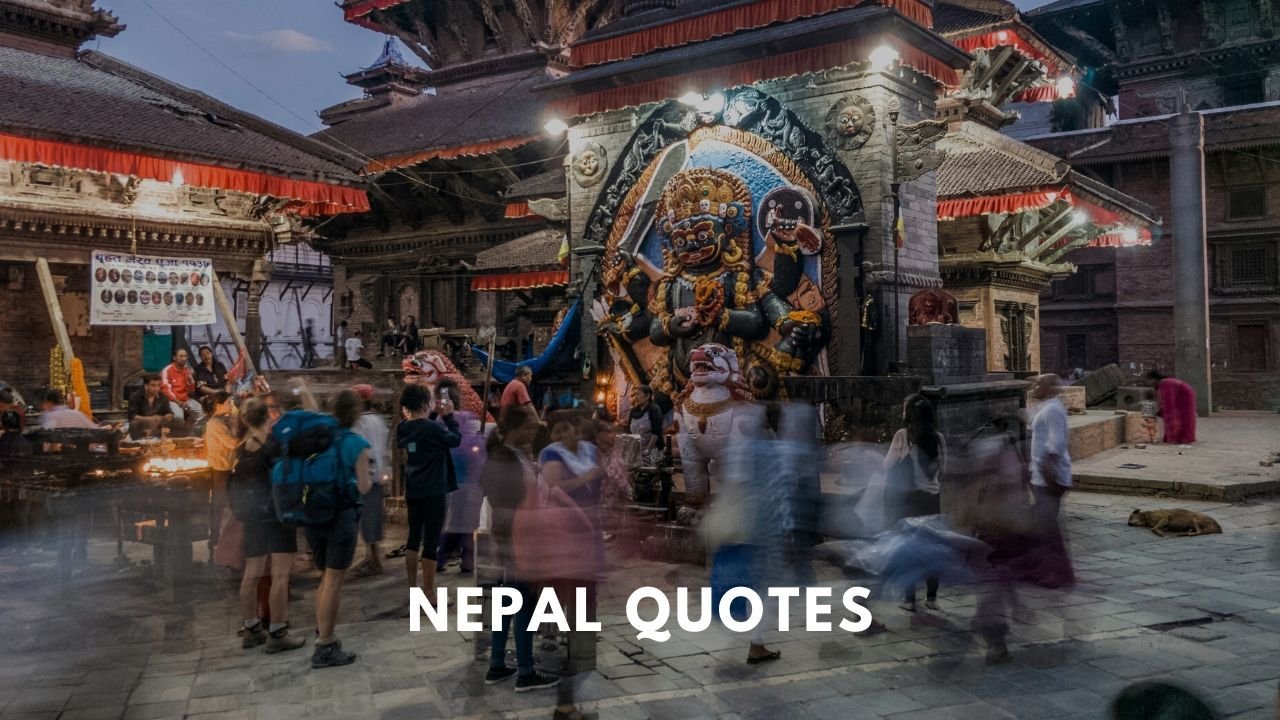
Best Nepal Quotes that captures its spirit, mysticism and charm
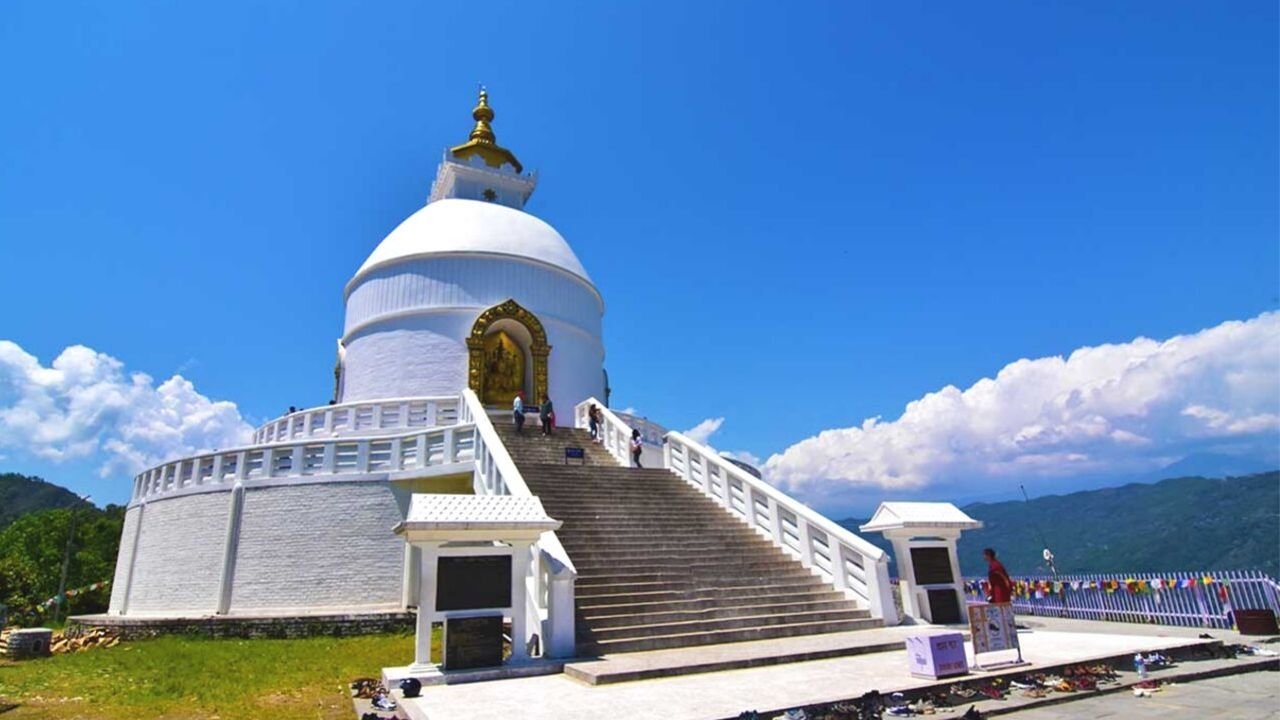
Places to visit in Pokhara – Travel Guide
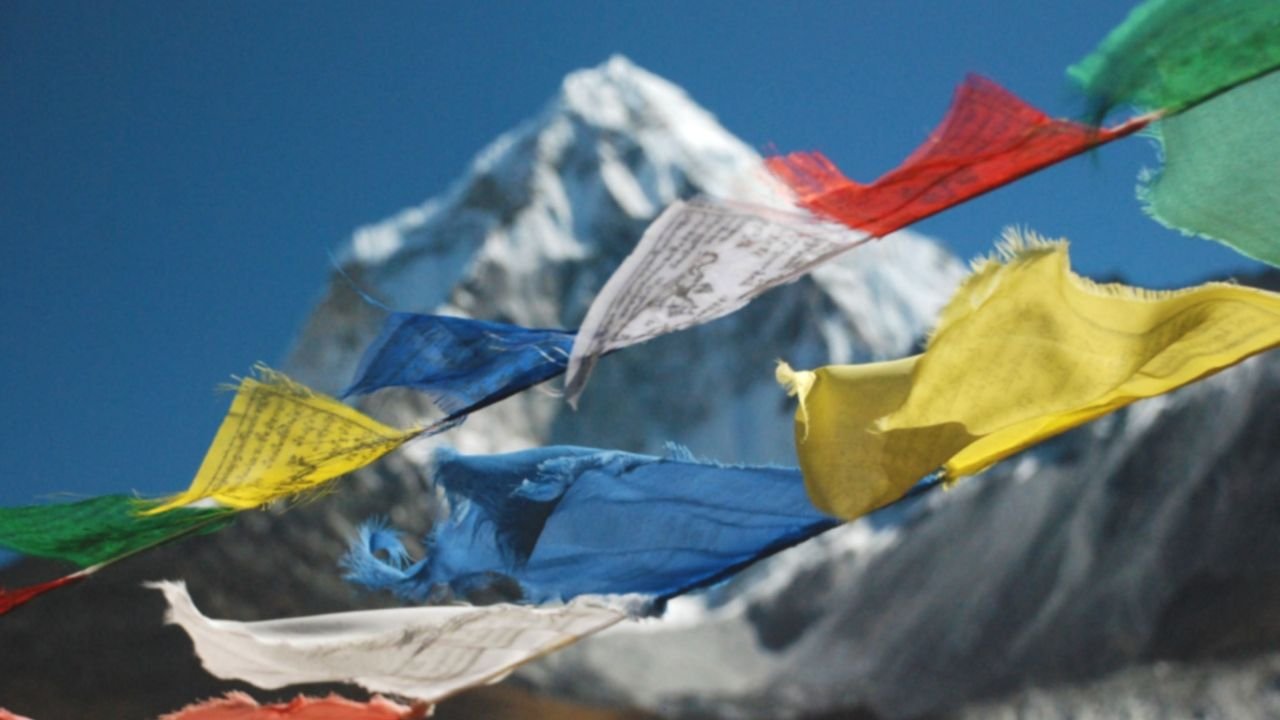
Trekking in Nepal: 15 Best Treks and all that you want to know
45 comments.
I have read many blogs regarding Nepal Visit but i found this is such an informative. Glad to read your blog. Thank you so much for sharing with us.
This DIY Nepal travel guide is a valuable resource for anyone planning a Nepal tour. It provides essential information on the best time to visit, visa requirements, and helpful tips. From the majestic Himalayas to vibrant markets, Nepal has something for every traveler. An excellent guide for a memorable trip!
This is great information and thanks you for the helpful article.
thank you for the detailed article…..
Great infomaction about Nepal tourism given. I love that you have provide so much practical information such as visas, transport and climate, before covering the sights. I knew about Kathmandu and Chitwan Pakhara, Nagarkot but less about , Bandipur and Lumbini!
Thanks for sharing this article it is very helpful for those who want to travel to Nepal. Through your blog, People easily understand Nepal and its culture.
Wounderful blog about Nepal.Thank you very much for sharing your travel experience in Nepal.
Wow this was such a thorough and helpful guide to Nepal. On top of that, your photography is just amazing! I think I would be most interested in visiting Kathmandu and the ancient village of Bandipur.
Thank you author for your article. Keep it up.
Hi Agni & Amrita Thank you so much for sharing your informative post, it is imperative who is willing to Visit the Himalayan country.
Thank you so much!
Why do you advise against elephant rides? Just curious. And thank you for the informative article.
We usually do not take an elephant ride because most of the animals are not treated well in the elephant camps. But we do not stop others if they want to take a ride! 🙂
This is really great blog about Nepal. All the needed information about traveling to Nepal is included. How to get visa to transportation, Cost to the best book about the travel information about Nepal. Thank you for such a great article.
Nice blog author. Thank you. Keep it up.
This is an old post but I found it very useful, Thanks for sharing!
Happy to hear from you Agni & Amrita…very informative… useful also… Thank you so much…
Thank you so much, Sarbari. Glad that you liked the post.
This was super informative! Nepal looks like a great destination to visit. So glad I came across your post to find out all this info!
Thank you so much, Stephanie. Glad that you liked the article.
I love Nepal, and I’ve been three times. Although each time I have had someone else making the arrangements. This is super helpful when I go back!!
Oh wow! 3 times. I am envious. 🙂
This is a real complete guide. After reading it, I feel like I am ready to go to Nepal! I love it – and also the photos are so vibrant and beautiful.
Thank you Adele. Please visit Nepal, I am sure you will love the place.
Thank you for sharing these detailed travel guide. We have been planning on visiting Nepal but was a bit concerned with the visa.
Happy to know that we can apply for an online visa and the fees are affordable.
Can’t wait to get started with the travel planning.
Oh wow! I am excited that you are planning to visit Nepal. It is a beautiful country.
What a nice guide to the country! It is nice to learn that the country is safe to travel.But does the earthquake take place often as well?
Thank you, Mijia. Well, it is difficult to predict nature. No major earthquake happened after that. Hope it remains such.
Nice information
I’ve read many blog about Nepal, and never I read any negative thoughts about this country. Truly rich in traditional culture, this is another destination that is worth visiting by anyone with open-minded heart. Thanks for spreading good news and views about Nepal. Those foods are making me hungry 🙂
Nepal is truly a lovely place. Thanks for liking it.
Wow this was such a thorough and helpful guide to Nepal. On top of that, your photography is just amazing! I think I would be most interested in visiting Kathmandu and the ancient village of Bandipur. I like the contrast of being able to see a well known and busy city contrasted with a quieter authentic village.
Thank you so much! Bandipur is realy an interesting place. The architecture there is simply mindblowing.
Since seeing the Dali Lama talk last year, I’ve always wanted to visit Nepal
Please do visit Nepal. It is a wonderful place.
What an amazingly comprehensive guide to Nepal. I love that you have provide so much practical information such as visas, transport and climate, before covering the sights. I knew about Kathmandu and Chitwan Park but less about Pokhara, Bandipur and Lumbini!
Thank you Kavita. We are glad that you liked the article.
Submit a Comment Cancel reply
Your email address will not be published. Required fields are marked *
Submit Comment
This site uses Akismet to reduce spam. Learn how your comment data is processed .
Pin It on Pinterest

Travel to Nepal – Episode 861
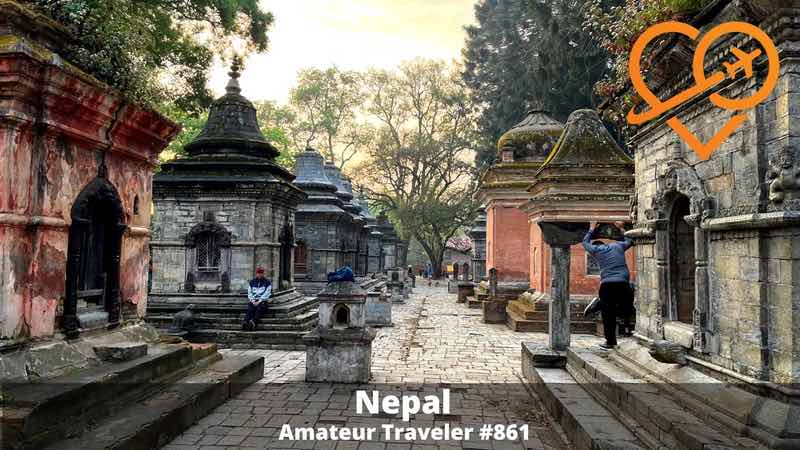
Hear about a 10-day itinerary for travel to Nepal as the Amateur Traveler talks to Sean Hira about this beautiful country.
Why should someone go to Nepal?
Sean says, “Nepal’s a little bit of an underrated destination. It’s a landlocked country in the Himalayas sandwiched between two powerhouses, China. In India. My favorite part about Nepal is really the harmony between Hinduism and Buddhism and seeing those cultures coexist so peacefully from a tourist perspective. A lot of people go there for the trekking and the intense base camp trekking and the first thing that probably comes to your mind is Mount Everest, but there is so much more to Nepal than Mount Everest or Annapurna. The Himalayas are ingrained in the culture there, but you can see so much more than just trekking in Everest.”
Sean lays out this itinerary:
Day 1: Kathmandu
- Orientation walk around Patan Durbar Square.
- Explore local bazaars and historical sites.
- Sunset at a rooftop restaurant overlooking Durbar Square.
Day 2: Kathmandu
- Early morning visit to Boudhanath Stupa for monk rituals.
- Breakfast at a restaurant overlooking the stupa.
- Visit Pashupatinath Temple and experience Hindu rituals.
- Optional: Visit Bhaktapur and Nagarkot (extra day trip).
Day 3: Transfer to Bandipur
- Private transfer from Kathmandu to Bandipur.
- Orientation walk around Bandipur village.
- Sunset at a rooftop restaurant overlooking the Himalayan foothills.
Day 4: Bandipur
- Sunrise viewpoint over the Annapurna region.
- Breakfast and leisure time.
- Easy hike to the “Great Wall of Bandipur” viewpoint.
Day 5: Transfer to Pokhara and Uluru Village
- Transfer to Pokhara, stop for lunch, and rent trekking gear.
- Continue to Uluru Village, north of Pokhara.
- Prepare for the upcoming trekking adventure.
Day 6-8: Trek to Poon Hill in Annapurna Region
- Begin a three-day moderate trek to Poon Hill.
- Experience stunning landscapes, forests, and villages.
- Stay in village homestays along the route.
- Reach Poon Hill for panoramic Himalayan views.
- Trekking altitudes vary from around 1,000 to 3,200 meters.
Day 9: Return to Pokhara
- Complete the trek and return to Pokhara.
- Relax and enjoy Pokhara’s amenities after trekking.
Day 10: Fly back to Kathmandu
- Fly back to Kathmandu from Pokhara.
- Revisit attractions or experiences missed earlier.
- Last-minute shopping or exploration in Kathmandu.
Day 11: Departure
- Depending on your flight schedule, free time in the morning.
- Depart from Kathmandu’s International Airport.
Sean also talks about some extensions you could do including a Panauti Community Homestay.
If you are looking for an adventure, Nepal could be the place to go.

Travel Oregon
If Oregon isn’t on your travel itinerary for this year, it’s time to add it because Oregon is a state that offers so much to do for so many travelers. Learn more at TravelOregon.com .
subscribe: rss feed | Apple podcasts
FaroutTraveling.com Nepal Kathmandu Thamel Patan Durbar Square Patan Durbar Square tours Stepwell Traditional Stay – A Boutique Hotel Boudhanath Pashupatinath Temple Thamel Sadhu Fat Monk’s Rooftop (Kathmandu) Yog Hostel New Orleans Cafe (Kathmandu) Bhaktapur Bhaktapur tours Nagarkot tours Bandipur Rural Municipality Bandipur Village Inn Bandipur’s Mini Great Wall Ramkot, Nepal Pokhara Ulleri Annapurna Circuit Trekking Route and Map Ghorepani Poon Hill Hotel Lake Star, Pokhara Pumdikot Shiva Statue World Peace Pagoda (Shanti Stupa, Pokhara) Kathmandu Marriott Hotel Phewa Lake Swayambhunath Panauti Community Homestay Panauti Top Places to Visit in Nepal
Hi Chris, I just wanted to send an email of thanks for your wonderful podcast. Unfortunately ill health means I have been unable to travel to any of the fascinating destination you feature for a little while. However by researching, reading and viewing other people’s videos & photos online i can make a virtual visit which gives me a pretty representative experience. Art Galleries and Museums for example have their exhibits available to view online (with lots of info and no one to get in the way of your viewing). Many of my friends have suggested New Zealand as a place i should (virtually) visit next so this week i will be doing that with episode 797 (Wellington with Kate) as a very thorough guide. It was a particularly great episode of the podcast. thank you. Looking forward to going on more virtual holidays with you in the future. Best wishes. From Frank
Please take our listener survey
Amateur Traveler Trips
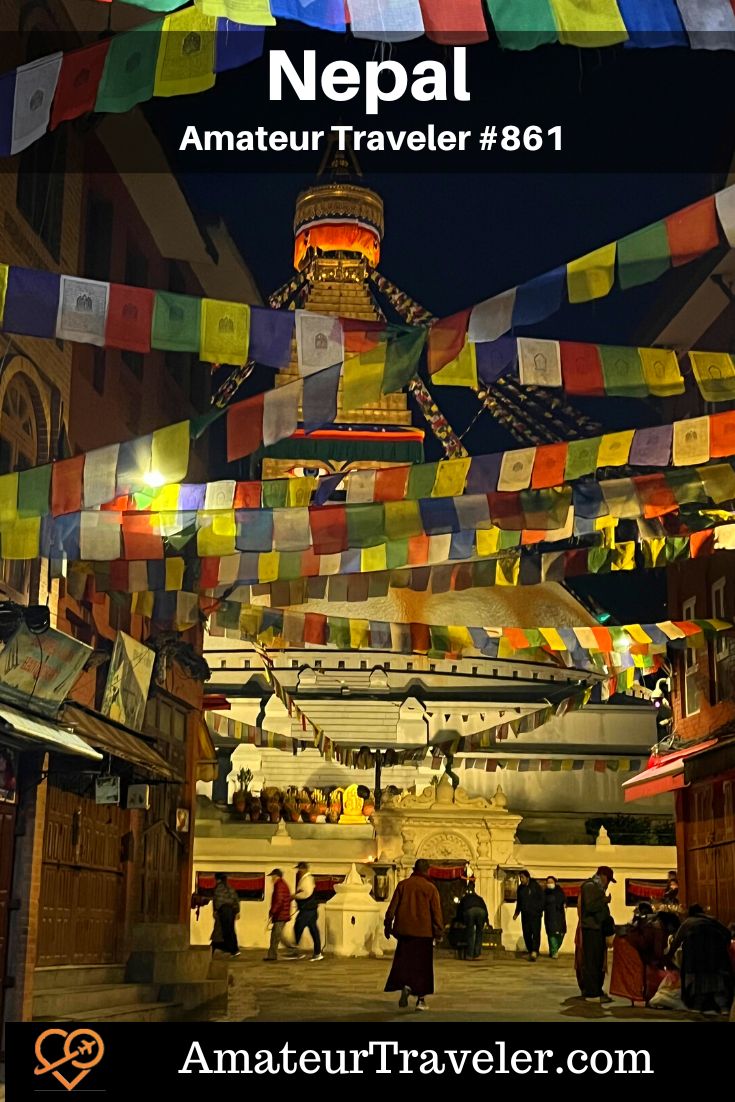
Related Posts

by Chris Christensen
+Chris Christensen | @chris2x | facebook
One Response to “Travel to Nepal – Episode 861”
Padam Timsina
Perfect itinerary for Nepal Tour.
Leave a Reply
Name (must be a real name) (required)
Mail (will not be published) (required)
Tags: audio travel podcast , kathmandu , nepal , podcast

Guides / Resources
- Getting Started Traveling
- Guide to Round The World (RTW) Tickets
- 27 Websites for Booking Hotels and Alternate Accommodations
- First Time Cruise Tips – Planning a Cruise
- How to Start an Airbnb – Tips from an Airbnb Superhost
- Travel Resources – What I Pack
- Map of San Francisco by Neighborhood and What to See by Neighborhood
- Guide to the Monterey Peninsula
- Missions of California Map – All 21 California Missions from South to North

Sign up for our newsletter and get the eBook "How To Save Money Booking Your Travel Online"
World Regions

- BloggerBridge
- California Travel
- Episode Map
- Inside Chris's Head Blog
- My CafePress Store
- My Etsy Store
- The Bible Study Podcast
- Tourism Marketing Consulting
- Privacy Policy
- Amateur Traveler Media Kit
- Working with Amateur Traveler
- Pitch me a Podcast Episode
- Guest Post Guidelines
- Travel with Amateur Traveler group
- The Amateur Traveler Manifesto
- find me on BloggerBridge.com
- The Netherlands
- Switzerland
- The Philippines
- South Africa
- The United States of America
- New Zealand
- French Polynesia
- Our destination wedding
- Budget tips
- Travel photography
- Packing lists
- Hotel guides
- Travel guides
- Itineraries
- Work with us
- Search for: Search Button
Nepal itinerary: the best itineraries for 2, 3 or 4 weeks traveling through Nepal!
Are you planning your tour of Nepal and orienting yourself on a possible itinerary through Nepal? Then you are in the right place. In this blog, we give three different itineraries for Nepal. In this way, we hope to inspire you to eventually put together your ultimate Nepal itinerary!
The ultimate itinerary for Nepal!
We absolutely love Nepal! The beautiful country has been high on our bucket list for years. And for a reason: some of the most beautiful hikes in the world lead through the Nepalese Himalayas. Nepal is a paradise for hikers, with short and longer treks. You can climb the famous Mount Everest from Nepal. We hiked a large part of the Annapurna circuit. An experience we will never forget!
But the Himalayas are by no means the only reason to go to Nepal. The spiritual character, with Buddhism at its centre, also is a great attraction for travellers. White stupas, richly decorated temples and of course the birthplace of Buddha are reasons for a trip Nepal. Including relaxing yoga retreats and meditation courses.
As you see, a trip through Nepal can be super varied! Because it is quite difficult to choose which destinations to include in your Nepal itinerary, we have written this blog. Here we help you on your way with three unique Nepal itineraries + a handy overview with the different destinations and highlights of Nepal. We describe a 2 week Nepal itinerary, a tour of 3 weeks and a Nepal round trip of 4 weeks. Enjoy your travel planning!
How many days do you need for Nepal?
Our tour of nepal.
We started our itinerary through Nepal in Kathmandu in mid-October. Then we quickly travelled to Pokhara. From Pokhara, we started the multi-day trek of the Annapurna Circuit . We took 12 days to complete this multi-day trek. At the end of October and beginning of November, it is not yet very cold and the chances of snow are relatively small. If we only started this trek at the end of November, it would have been much colder.
After this beautiful trek, we spend a week in Pokhara . Here we relaxed with delicious food (Pokhara is the city for food lovers! ) And great massages! Then we drove back to Kathmandu via the mountain village of Bandipur . We took the time to explore Kathmandu and the surrounding area. If you think our hunger for travel to Nepal has been satisfied, you are wrong. We can’t wait to go back and do a multi-day trek to Mount Everest Base Camp and the Gokyo Valley .
Nepal itinerary 2 weeks:
This itinerary takes you to the highlights of Nepal. You will visit Bhaktapur , by far the best kept historical place in Kathmandu Valley , full of temples and pagodas. Then you go on a safari in search of tigers, elephants and rhinos. You admire Lumbini , the birthplace of Buddha. You also have the chance to see the beautiful Himalaya mountains. Several mountain peaks are clearly visible from Pokhara . Especially from viewpoint Sarangkot, near Pokhara, the view is breathtaking. After Pokhara, you will travel to the traditional village of Bandipur. A great way to get an idea of how people have lived in the foothills of the Himalayas for centuries and the place for a nice day hike. Your itinerary ends in the capital city Kathmandu.
This 2-week Nepal itinerary is as follows:
Kathmandu – Bhaktapur – Chitwan National Park – Lumbini – Pokhara – Bandipur – Kathmandu
Day planning itinerary Nepal 2 weeks
Day 1: Kathmandu (arrival) Day 2: Kathmandu Day 3: Kathmandu – Bhaktapur (1 hours driving) Day 4: Bhaktapur – Chitwan National Park (6 hours driving) Day 5: Chitwan National Park Day 6: Chitwan National Park – Lumbini (4 hours driving)
Day 7: Lumbini Day 8: Lumbini – Pokhara (7 hours driving) Day 9: Pokhara Day 10: Pokhara (Sarangkot) Day 11: Pokhara – Bandipur (4 hours driving) Day 12: Bandipur Day 13: Bandipur – Kathmandu (6 hours driving) Day 14: Kathmandu (departure)
Itinerary Nepal 3 weeks
The journey starts in the capital Kathmandu . A chaotic city with a lot of culture and beautiful temples. From Kathmandu, you travel on to Bhaktapur . Bhaktapur is a small town with a maze of narrow alleys and several historically well-preserved spiritual squares. Then you visit Patan , the old royal city where the Tibetan influences are clearly visible. Time for nature: you will make a safari in Chitwan National Park followed by a visit to the beautiful 18th-century mountain village of Bandipur . An ideal place to prepare for your trekking in the Annapurna Mountains. The Nepal itinerary continues to the relaxed city of Pokhara from where you make a multi-day trek . A special multi-day trek could be to Poon Hill, for example. You end up via Pokhara in Kathmandu where you say goodbye to this beautiful country.
This Nepal travel itinerary is as follows:
Kathmandu – Bhaktapur – Patan – Chitwan National Park – Bandipur – Pokhara – Annapurna multi-day hike – Pokhara – Kathmandu
Day planning itinerary Nepal 3 weeks
Day 1: Kathmandu (arrival) Day 2: Kathmandu Day 3: Kathmandu – Bhaktapur (1 hours driving) Day 4: Bhaktapur Day 5: Bhaktapur – Patan (20 min driving) Day 6: Patan – Chitwan National Park (6 hours driving) Day 7: Chitwan National Park Day 8: Chitwan National Park Day 9: Chitwan National Park – Bandipur (3 hours driving) Day 10: Bandipur
Day 11: Bandipur – Pokhara (3 hours driving) Day 12: Pokhara – trekking dag Day 13: Trekking dag Day 14: Trekking dag Day 15: Trekking dag Day 16: Trekking dag – Pokhara Day 17: Pokhara Day 18: Pokhara Day 19: Pokhara – Kathmandu (7 hours driving) Day 20: Kathmandu Day 21: Kathmandu (departure)
Is Nepal an expensive country to travel? Read all about travel costs & budget in Nepal here!
Itinerary Nepal 4 weeks
This itinerary combines a multi-day trek to Mount Everest with the fantastically remote Bardia National Park . You start your trip with the multi-day trek, for example, the Mt Everest Base Camp trekking, for which you fly to Lukla (including a spectacular landing between the mountain tops). After this breathtaking hike, relax for a few days in Kathmandu and get ready for your next flight (or long travel day). This time with the destination Bardia National Park . This park is so remote that there are hardly any tourists! Here you can spot the Bengal tiger and rhinos.
On the way back you will travel by bus to Pokhara from where you will see a different part of the Himalaya Mountains, but also take the time to relax. Via Bandipur , a beautiful 18th-century mountain village you eventually travel to Kathmandu and your time in Nepal is over.
Tip: it often happens that flights to and from Lukla are cancelled or postponed. We, therefore, recommend that you plan extra days in case your flight does not depart several times. If you are really short in time, skip Bandipur or replace Bardia with Chitwan.
This Nepal backpacking route is as follows:
Kathmandu – Lukla – Multi-day trekking around Mt. Everest – Lukla – Kathmandu – Bardia National Park – Pokhara – Bandipur – Kathmandu
Day planning itinerary Nepal 4 weeks
Day 1: Kathmandu (arrival) Day 2: Kathmandu Day 3: Kathmandu – Lukla (30 minutes flying) Day 4: Lukla – Mount Everest BC Day 5: Mount Everest BC Day 6: Mount Everest BC Day 7: Mount Everest BC Day 8: Mount Everest BC Day 9: Mount Everest BC Day 10: Mount Everest BC Day 11: Mount Everest BC Day 12 : Mount Everest BC Day 13 : Mount Everest BC Day 14 : Mount Everest BC Day 15: Mount Everest BC
Dag 16: Mount Everest BC Dag 17: Mount Everest BC – Lukla Dag 18: Lukla – Katmandu (30 minutes flying) Dag 19: Kathmandu – Bardia National Park (12 hours driving of 30 min flying + 3 hours driving) Dag 20: Bardia National Park Dag 21: Bardia National Park Dag 22: Bardia National Park – Pokhara (12 hours driving) Dag 23: Pokhara Dag 24: Pokhara Dag 25: Pokhara – Bandipur (3 hours driving) Dag 26: Bandipur Dag 27 : Bandipur – Kathmandu (5 hours driving) Dag 28 : Kathmandu (departure)
Need inspiration for the most special places to sleep in Nepal? Our Nepal hotel guide will help you find fine and budget proof hotels!
Highlights Nepal: all destinations in a row!
Nepal has many beautiful sights! For your convenience, we have made a map showing all of Nepal’s top attractions.
Map showing the highlights of Nepal
Kathmandu: capital of nepal.
It may not be love at first sight with the busy city of Kathmandu. The smog, traffic and general chaos mask the beauty of the city: medieval temples, pagodas and narrow streets with delicious food. A must here is to do a food tour! Stroll through the old town called Thamel. Thamel is a maze of narrow streets and here you will find all kinds of shops, temples, mini-restaurants, street vendors and Nepali. You can find all our tips in our travel guide: what to do in three days Kathmandu ?
Bhaktapur: historical city
Bhaktapur is located in the Kathmandu Valley. Not far from Kathmandu. The village is known for its busy street life and many red temples and pagodas, including the Nyatapola Temple. The narrowest temple in Nepal. If you look closely, you can still see damage from the earthquake here. Bhaktapur is a small city with a maze of narrow alleys and several ancient temple squares.
Patan: the city of the Newari merchants
Bandipur: traditional mountain village from the 18th century, pokhara: relaxing & hiking.
Pokhara is the 2nd largest city in Nepal and is located on the beautiful Pokhara Lake. From the city, you can see the snowy peaks of the Himalayas on clear days. Pokhara is known for its relaxed laidback vibe. Enjoy good food (here you will find the best restaurants in Pokhara! ), have a massage or participate in a yoga retreat . And finally, Pokhara is the base for various hikes such as the Annapurna Circuit. Curious about what you can do in Pokhara? Here you will find our blog about Pokhara .
Multi-day trek through the Himalayas
Curious about what we all packed for a multi-day hike? Read our packing list for a multi-day trekking in Nepal here!
Lumbini: Birthplace of Buddha
Lumbini is the birthplace of Buddha. This spiritual place is visited by many pilgrims every year. Interesting if you are involved in Buddhism or want to learn to meditate.
Chitwan National Park: on safari in Nepal
Chitwan National Park is a UNESCO heritage site. This nature park protects many mammals, bird species and reptiles. Special animals that live here are the Bengal tiger, leopards, elephants, bison and even bears! More than a third of Nepal’s total wildlife population can be found in this national park. It is, therefore, a good place for a safari.
Bardia National Park: A safari park all to yourself
Bardia National Park is far away from all other top attractions in Nepal. The big advantage of this is that you are probably one of the few visitors. In Bardia National Park you can go on safari on foot, by boat or by jeep. Here too you can spot the Bengal tiger, leopards and rhinos.
Like this post? Pin it!
More blogs about Nepal
Food guide nepal: 16 times the best restaurants in pokhara, the best yoga and yoga studio's in pokhara in nepal: personal experiences, bandipur: authentic village and beautiful hidden gem in nepal, 12 tips for walking the annapurna circuit in nepal, annapurna circuit trek: a 10 day itinerary for the annapurna circuit in nepal, travel guide nepal: what to do and see in kathmandu in three days, annapurna circuit packing list: what to pack for a trek in the himalaya of nepal.
Hi Thank you so much for sharing an Informative post about Nepal. I look forward to seeing the next post.
Did you drive yourself around on your 4 week tour? Is it safe for a female traveling solo to do such? Just started looking into going in November and yours is the 1st suggested itinerary I am looking at ...noted it would be colder in November
Hi Holly, No we took public transport. Yes we met multiple women traveling by themselves. Yes, in November it will be colder indeed. Kind regards, Charlotte
Leave a reply Cancel reply
Your email address will not be published.
- Nepal Tourism
- Nepal Hotels
- Nepal Bed and Breakfast
- Nepal Vacation Rentals
- Flights to Nepal
- Nepal Restaurants
- Things to Do in Nepal
- Nepal Travel Forum
- Nepal Photos
- All Nepal Hotels
- Nepal Hotel Deals
- Last Minute Hotels in Nepal
- Things to Do
- Restaurants
- Vacation Rentals
- Travel Stories
- Rental Cars
- Add a Place
- Travel Forum
- Travelers' Choice
- Help Center
itinerary for nepal travel - Nepal Forum
- Asia
- Nepal
itinerary for nepal travel
- United States Forums
- Europe Forums
- Canada Forums
- Asia Forums
- Central America Forums
- Africa Forums
- Caribbean Forums
- Mexico Forums
- South Pacific Forums
- South America Forums
- Middle East Forums
- Honeymoons and Romance
- Business Travel
- Train Travel
- Traveling With Disabilities
- Tripadvisor Support
- Solo Travel
- Bargain Travel
- Timeshares / Vacation Rentals
- Asia forums
- Nepal forum

Hi, I am a solo traveller. My planned itinerary for nepal tour on 3rd week of november 2024 is:
Day 2 - Local sightseeing in Kathmandu and around it (whatever possible in 1 day). Stay in Kathmandu.
Day 3 - Leave for Pokhara by bus. Reach Pokhara and check in a hotel.
Day 4 - Local sightseeing in Pokhara and around it (whatever possible in 1 day). Stay in Pokhara.
Day 5 - Leave for Muktinath temple. I think it is not possible to return the same day to Pokhara after visiting Muktinath temple. So, I have planned to stay in any hotel near Muktinath temple.
Day 6 - Visit the Muktinath temple and return to Pokhara. Stay in Pokhara. End of my journey.
Day 7 - Leave for Sonauli (Uttar Pradesh, India ) by road.
My questions are:
1. I have planned to stay in some hotel of my budget near Tribhuvan airport. Please suggest me whether my decision is correct. Because I came to know that buses for Pokhara leave during early morning from Sorhakhutte, which is far from the airport. My question is whether buses for Pokhara leave from Sorhakhutte only or from other places in Kathmandu. Whether these buses have pickup points in Kathmandu or after starting from Sorhakhutte these buses proceed towards Pokhara. Please suggest whether it is advisable/correct to stay in some hotel near Sorhakhutte.
2. From Pokhara to Muktinath whether buses or shared cars /scorpios/SUVs are available from Pokhara to the Muktinath temple. If I have to take a single car /SUV for myself, then it would be costly.
3. Which is/are localities in Pokhara best to stay?
4 replies to this topic

NOTE: travelling Pokhara to Muktinath in 1 day and sleeping at Muktinath altitude is unsafe (altitude illness). Sleep lower in Kagbeni (nice) , Jomsom (convenient but not so nice), or Marpha (nice).

Road from KTM to PKR is hellish even for Indians as its under construction. So better avoid if you can by flying to LKO
Sunauli to PKR is relatively better although not very comfortable by any standards.
This way you will have 2-3 days extra in PKR. I doubt if you can reach Muktinath same day from PKR. Hence break your journey at any of the three places indicated above.
Also unless you are travelling in an AC Scorpio types....the road travel will be very exhausting. Hence space accordingly
Both KTM and PKR are touristy places and hence thousands of hotel rooms. Try booking.com or similar websites. They cater to all sorts of budgets

2. You can find lots of local bus, sharing jeep and private jeep from Pokhara that will go to Jomsom. Private Jeep will cost around NPR 34000 (for both way).
3. Probably Lakeside or Damsite is the best place to stay in Pokhara.
- Pheriche, Deboche, Pangboche? 7:13 am
- 10 days family trip itinerary 6:39 am
- itinerary for nepal travel 6:35 am
- Kathmundu to Tal/Darapani 6:28 am
- Advice on Private Guide and Porter 4:06 am
- Is Covid Vaccine Certificate still required yesterday
- EBC trek recommendation, who to use, what to bring/weather. yesterday
- Encash USD to Nepalese Rupees in Nepal or in my country? yesterday
- A picture says a thousand words….A blog yesterday
- A (Much) Better Gokyo Itinerary yesterday
- Prepare for trip EBC + Gokyo Lake yesterday
- Jiri - Three Passes. Itinerary and ideas Apr 08, 2024
- Bringing rupee into Nepal Apr 08, 2024
- Solo Trekking on EBC and accommodation Apr 07, 2024
- World Expeditions- anyone used them? 7 replies
- Kolkata to Nepal/Kathmandu transport options 3 replies
- Nepal tour operators 5 replies
- Accommodation in Boudha, near the Stupa 3 replies
- Flight from Kathmandu to Pokhara 8 replies
- Hire car with driver from Kathmandu 94 replies
- ashrams in nepal? 29 replies
- Flight to Kathmandu from India 2 replies
- Is Nepal safe for travel: May 2012? 13 replies
- Dashain 2012 2 replies
- Itinerary for Gosainkund and Helambu
- New Sticky Thread for posters to add their recent Nepal trip / trek reports.
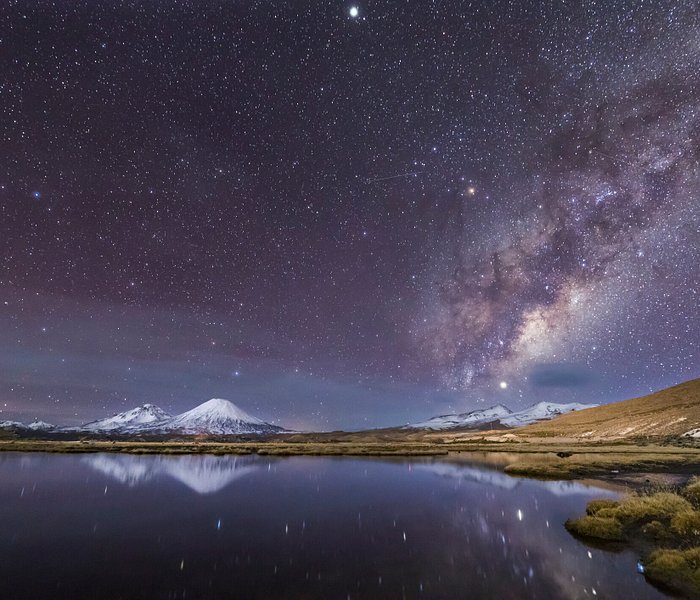
Mystical India

Mystical and spiritual, chaotic and confounding, India overflows with riches. Staying at excellent hotels, your small group, limited to 24 travelers, travels the classic Golden Triangle: bustling Delhi; Agra, home of the sublime Taj Mahal; and Jaipur, great city of the Rajput. Begin the 17-day exploration with a three-night stay in the Indian capital, touring the important sights of both Old and New Delhi and enjoying a rickshaw ride through colorful Chandni Chowk market. Get acquainted next with the “pink city” of Jaipur, where highlights of a three-night visit include the stunning Hawa Mahal palace, Amber Fort, and a home-hosted dinner with a Rajasthan family. A singular experience follows with the opportunity to search for the elusive Bengal tiger on game drives during a two-night stay near Ranthambore National Park, once a royal hunting ground, with its picturesque ruins. Departing for Gadoli, embark on a village walk to meet Meena tribespeople. En route to the ancient Mughal stronghold of Agra, visit the impressive 3,500-step Chand Baori step well. Marvel at the awe-inspiring Taj Mahal, and take an Indian cuisine cooking lesson. The journey ends with three nights in Hinduism’s holiest city, Varanasi. Cruising on the Ganges, experience life along the sacred river and witness a traditional aarti ceremony. Visit nearby Sarnath, one of Buddhism’s holiest sites; and Sarnath Museum, housing a superb collection of Buddhist artifacts. Absorb the beauty of the Himalayan kingdom of Nepal on an optional 6-day/4-night post-tour extension that includes extensive sightseeing.

Faculty Host
Trip itinerary.
Day 1. Depart U.S. for Delhi, India Day 2. Arrive Delhi Day 3. Delhi Day 4. Delhi Day 5. Delhi/Jaipur Day 6. Jaipur Day 7. Jaipur/Sanganer Day 8. Jaipur/Ranthambore Day 9. Ranthambore Day 10. Ranthambore/Gadoli Day 11. Gadoli/Agra Day 12. Agra Day 13. Agra/Delhi/Varanasi Day 14. Varanasi/Sarnath Day 15. Varanasi Day 16. Varanasi/Delhi Day 17. Return to U.S.
Trip Highlights
- Enjoy tours of Old and New Delhi
- Home-hosted dinner with Jaipur family
- Visit the Magnificent Taj Mahal
- Two-night stay at Ranthambore Tiger Preserve, including game drives
- Meena tribal home visit and enjoy a traditional folk dance
- Travel to the “Pink City” of Jaipur with historic forts, palaces, and gardens
- Visit Varanasi, Hinduisim's holiest city
- Travel to the Pilgrimage site of the Sarnath temple, where the Buddha first taught after achieving enlightenment
- [email protected]
- 617-627-0633 617-627-5323

IMAGES
VIDEO
COMMENTS
A great budget for 14 days in Nepal is around $1000 for a single person. Accommodation and food is cheap. Transportation could cost a bit more than its neighbouring country, but still good range. If you plan to stay in hostels, you can save even further and bring the budget down to $800 for backpackers.
Flights take just half an hour to travel the 125 miles between Kathmandu and Pokhara, which takes 6 to 9 hours by road. Ask for a seat on the right-hand side of the plane, if possible, because if the weather is clear, you'll be treated to incredible views of the entire Himalayan chain through central Nepal.
Pokhara. Day 4. Outdoor adventures in Pokhara. Pokhara. Day 5. Fly back to Kathmandu. Kathmandu. After arriving in Kathmandu, your first stop will be Swayambhunath, also known as the Monkey Temple, an ancient Buddhist stupa atop a hill overlooking the city. Spin the prayer wheels and admire the views.
Itinerary #1: Explore Kathmandu, Pokhara, and Chitwan. In a week you can visit three of Nepal's most exciting and diverse destinations with this comprehensive overview tour: the busy capital Kathmandu, the chilled-out lakeside town of Pokhara, and the wildlife-filled jungles of the Chitwan National Park. Kathmandu.
Day 3: Patan. Day 4: Bhaktapur. Day 5: Pokhara. Day 6: Pokhara. Days 7 - 10: Ghorepani Poon Hill Trek. Useful tips for traveling in Nepal: Final thoughts: It's impossible to see everything in Nepal in just a week and a half. You could easily spend more days than that simply trekking through the Himalayas.
See our 9-day Classic Nepal tour sample itinerary: Kathmandu (3 days), Pokhara (2 days), Chitwan (2 days), Nagarkot (2 days). Top South Asia Tour Itineraries Including Nepal. ... Travel Costs for Nepal. For travelers from Europe and America, Nepal is the most affordable destination in South Asia. General speaking, if you are looking for a ...
This 7-day Nepal itinerary offers an unforgettable journey through Nepal's cultural richness, diverse landscapes, and culinary delights, making it the perfect opportunity to visit Nepal. ... Tips for Responsible Travel in Nepal. Travel extends beyond mere exploration of new places; it also encompasses leaving a positive imprint on the visited ...
Reading Time: 17 minutes Nepal, one of the most popular destinations in the Eastern Himalayas is the best blend of nature, history and adventure. Bordered by China's Tibet Autonomous region and India, Nepal is home to the World's highest peak - Mt. Everest.And this 10 Day Nepal Travel Itinerary recommends the Best of the Things to do in Nepal along with The Best Hotels to stay.
Recommended Nepal itineraries. If you are planning your travel to Nepal yourself, use these itineraries created by our travel writers as a starting point for inspiration. Everest Base Camp, Himalayas, Nepal. Nepal Itinerary 1 - The best of Nepal. You could do a whistlestop tour of the classic sights in eight to ten days.
Itinerary #1: Authentic Nepal - Kathmandu, Pokhara, Bandipur, & More. This unique itinerary focuses on Nepal's cultural highlights and includes a short trek based out of the lakeside city of Pokhara. Sunset from the ridge-top village of Bandipur. Day.
While it is a top attraction, Nepal isn't only for hikers and mountain climbers. It's also a place for meditation, yoga retreats, and adventure-seeking. In this 3 weeks in Nepal itinerary, I will show you two types of itineraries. One includes heavy or long treks like Mount Everest or Annapurna, and the other is without serious trekking at all.
Go trekking. Trekking trails follow the mountainous paths that Nepalis have been using for centuries, and range from lower-altitude day walks near the main cities to multi-week adventures high in the mountains.; Tour the temples of Kathmandu. Nepal's capital, Kathmandu, is an ancient city that has traditionally been at the crossroads of trade routes and culture.
Chitwan. Recommended time: 2 days. The most popular of Nepal's national parks as it is well connected by public transport and has good chances of spotting wildlife particularly crocodiles and rhinos. From the town of Sauraha is the main base for walking and jeep tours of the park.
Highlights: A hill hike, Namobuddha hike & culture mixed into one. Duration: 1 day+ hikes with 1 day+ of culture. Most of the short treks listed here are Pokhara based. Pokhara is a 7am - 2pm bus trip from Kathmandu (allow for an extra hour or so). Or a 30 minute flight. Or a 6 hour car trip.
Tailor-made travel itineraries for Nepal, created by local experts. 11 days / from 3248 USD. Exclusive Everest. ... The Rough Guides to Nepal and related travel guides. In-depth, easy-to-use travel guides filled with expert advice. Buy US$34.99. Buy US$27.99. Buy US$34.99.
Nepal Travel Itinerary: Our Two Month Journey. If you are looking to design your Nepal travel itinerary then have a read of our incredible journey. Our recent trip was a two month journey from the Kathmandu Valley to the far west of Nepal. We started our trip in one of our favorite ancient cities Bhaktapur. From there we explored the Kathmandu ...
Besides this, trained guides and porters are cheap by Western standards; about $10-$15 per day for a guide or $5-$10 for a porter (someone who can carry your luggage on the trek). It may seem a bit decadent to hire porters or a guide, but this service provides a valuable source of income to Nepal.
Nepal in 2 Weeks - Trekking. Two weeks in Nepal allows enough time for a multi-day trek through the Himalayas, as well as a few days to explore the sights, smells, and tastes of Kathmandu and/or Pokhara. Day 1, Kathmandu: Eat and shop in Thamel, picking up any clothing or supplies you'll need for your high-altitude adventure during the next week.
The Annapurna region is a massively popular hiking spot in Nepal. There are a total of 30 peaks that are above 6,000 metres high, with one being more than 8,000 metres. Whilst in Pokhara, you'll see perhaps 50 tour companies in town, all of which offer Annapurna hiking tours ranging from 2 days to 7 days and more.
In my experience, you would need at least one month in Nepal to see the major highlights and do one of the famous treks in the Himalaya. A one Month Nepal itinerary Day 1-2: Kathmandu. Kathmandu is the capital and largest city of Nepal. Most start their Nepal itinerary here and only stay enough time to arrange the permits for their treks. But ...
From Kakarbhitta, you will get buses to Kathmandu (458 km) and Pokhara (600 km) Sunauli (India side)- Belahiya (Nepal side): The nearest main town is Varanasi. Belahiya is nearest to Lumbini (30 km). So if you are entering by this route, consider stopping at Lumbini first and then carry on your journey to Nepal.
Sean lays out this itinerary: Day 1: Kathmandu. Orientation walk around Patan Durbar Square. Explore local bazaars and historical sites. Sunset at a rooftop restaurant overlooking Durbar Square. Day 2: Kathmandu. Early morning visit to Boudhanath Stupa for monk rituals. Breakfast at a restaurant overlooking the stupa.
Itinerary Nepal 3 weeks . The journey starts in the capital Kathmandu.A chaotic city with a lot of culture and beautiful temples. From Kathmandu, you travel on to Bhaktapur.Bhaktapur is a small town with a maze of narrow alleys and several historically well-preserved spiritual squares.
My planned itinerary for nepal tour on 3rd week of november 2024 is: Day 1 - Arrival at Kathmandu airport from Mumbai. Check in a hotel. Day 2 - Local sightseeing in Kathmandu and around it (whatever possible in 1 day). Stay in Kathmandu. Day 3 - Leave for Pokhara by bus.
Mystical and spiritual, chaotic, and confounding, India overflows with riches. Staying at excellent hotels, your small group travels the classic Golden Triangle on this 17-day tour. After Old and New Delhi's important sights, discovery of Jaipur, the "pink city," includes dinner in a Rajasthan family's home. Search for the elusive Bengal tiger in Ranthambore National Park and meet ...